Inbox and environment news: Issue 534
April 10 - 23, 2022: Issue 534
Barrenjoey Headland Amenities Concept Plan
- the building will be set into the landscape, concealed by the landform and native heath
- screened walls to the front of the building will allow for natural light and ventilation
- timber screens will be left to grey with alternating painted battens to reference the colours of the surrounding natural landscape and heritage buildings
- unisex cubicles will be provided, including baby change facilities and a water refill station
- water supply and sewer infrastructure to service these amenities are already in place.
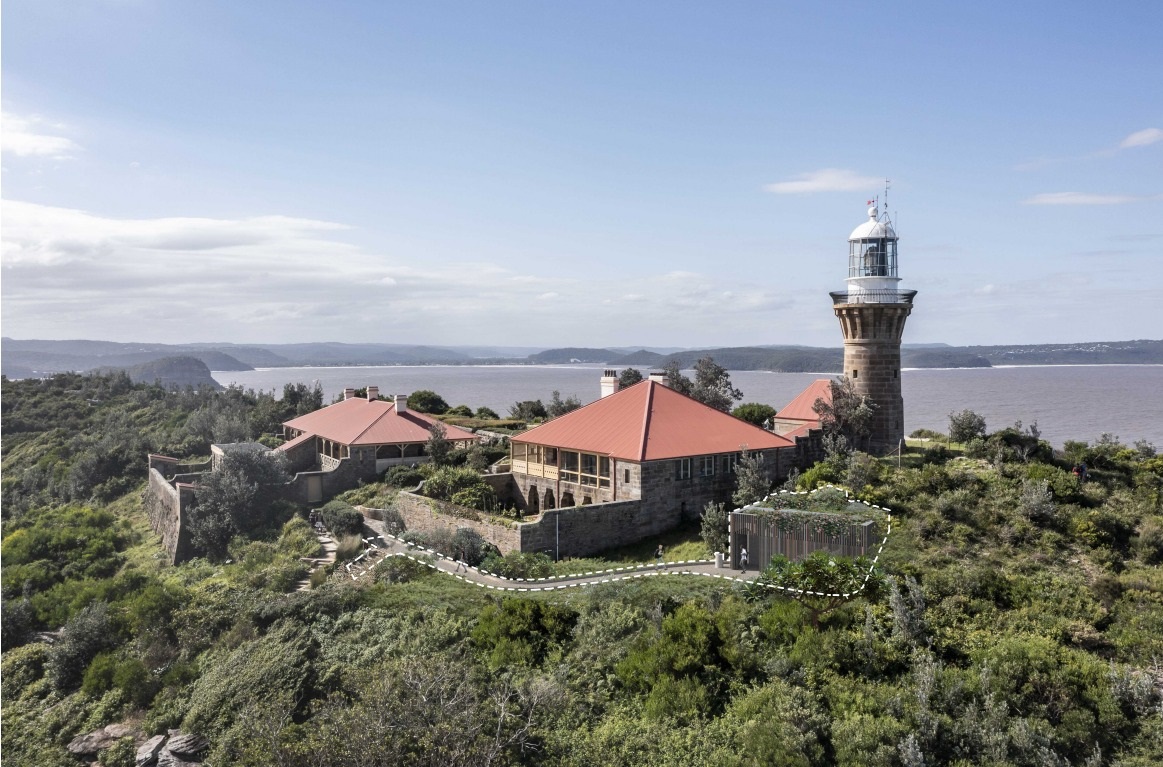
Duck Holes: McCarrs Creek
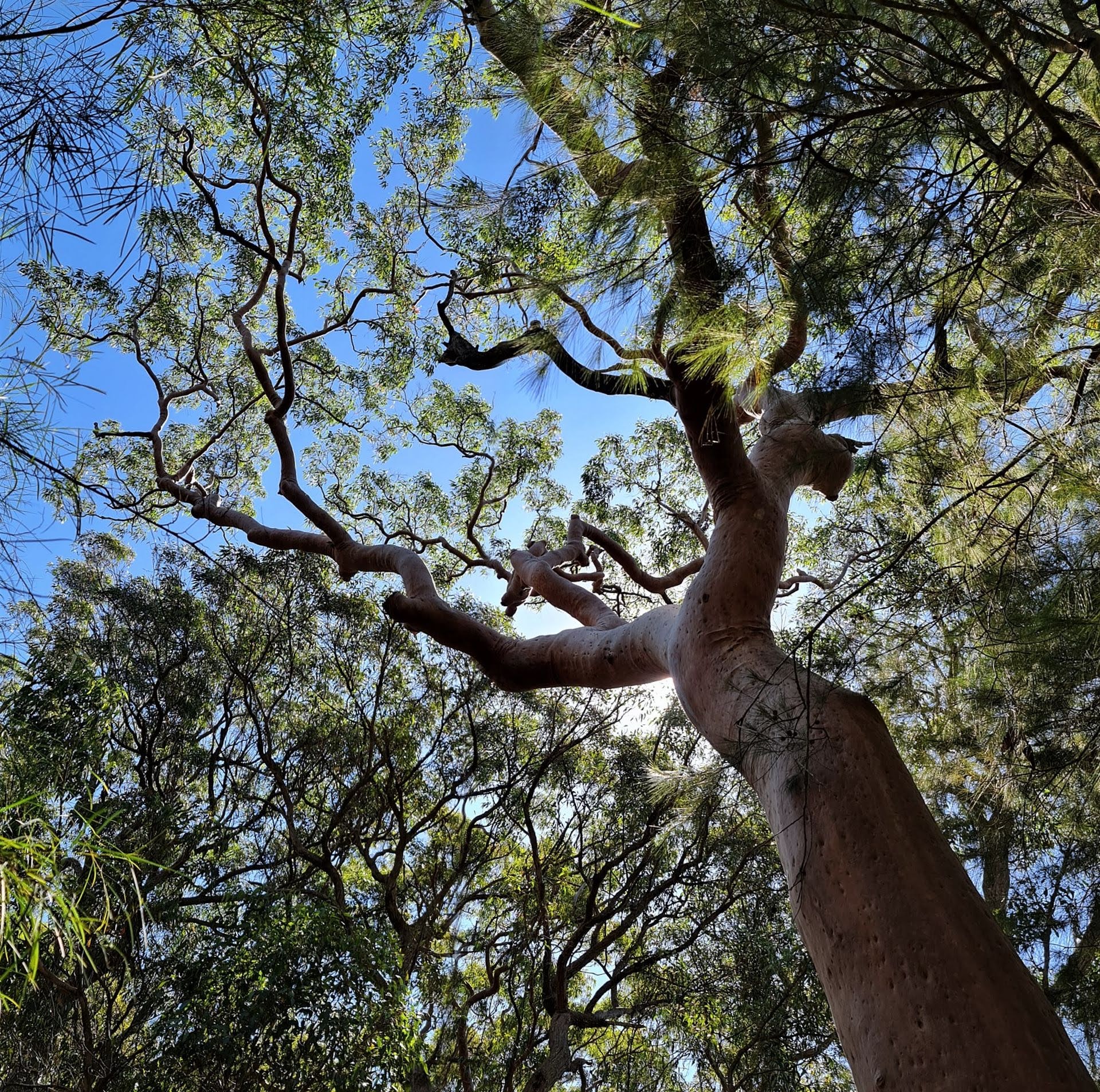
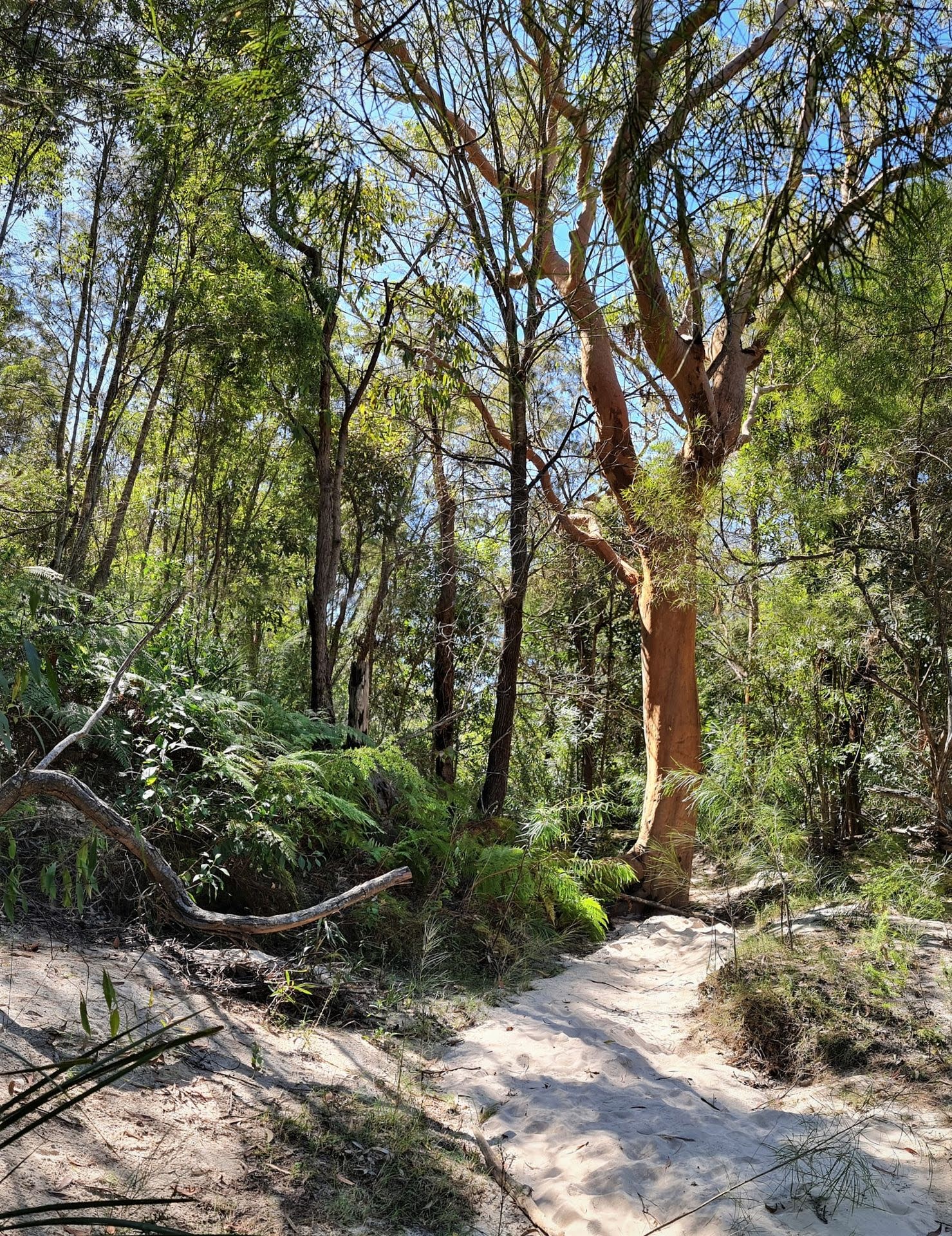
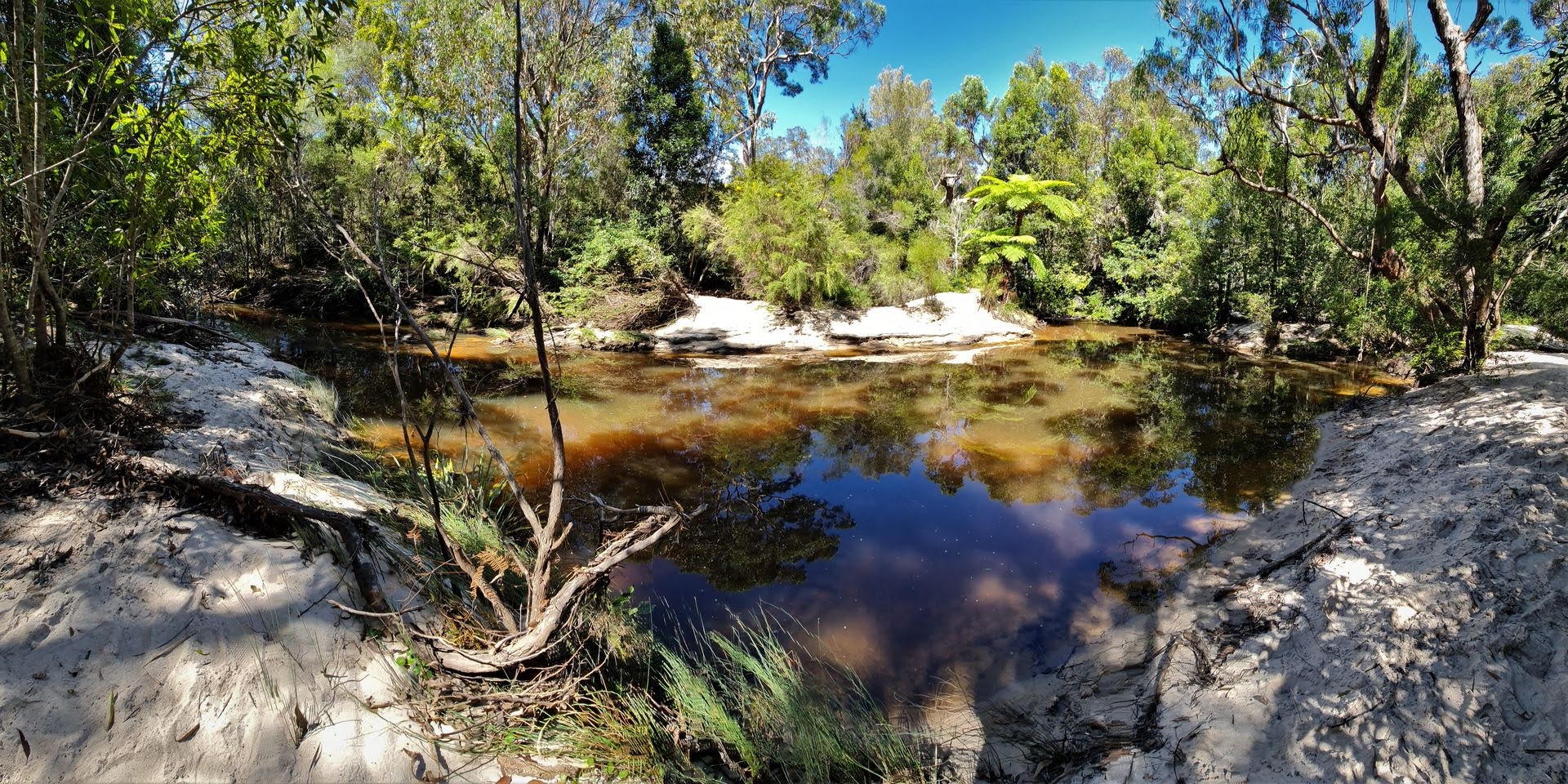
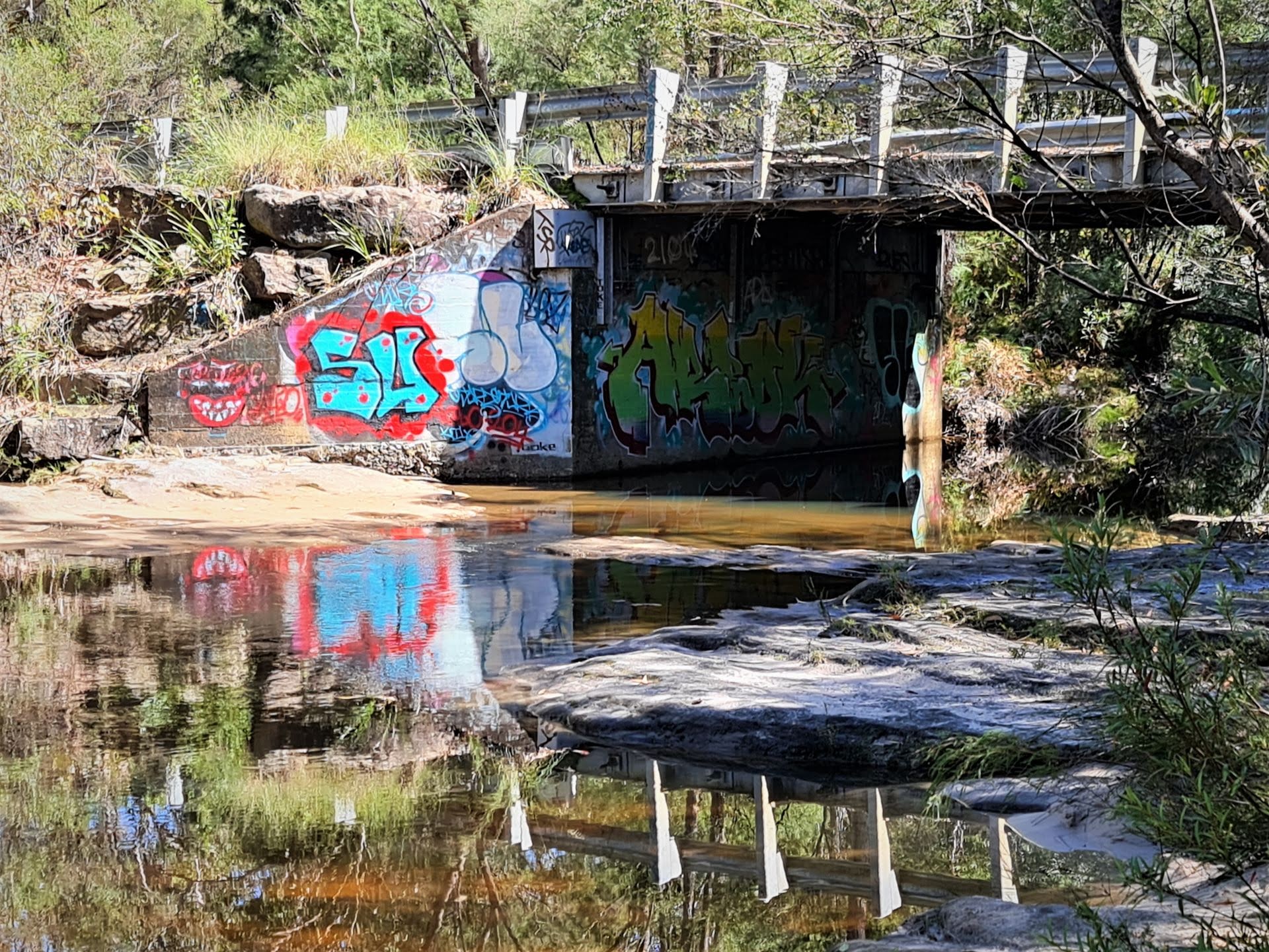
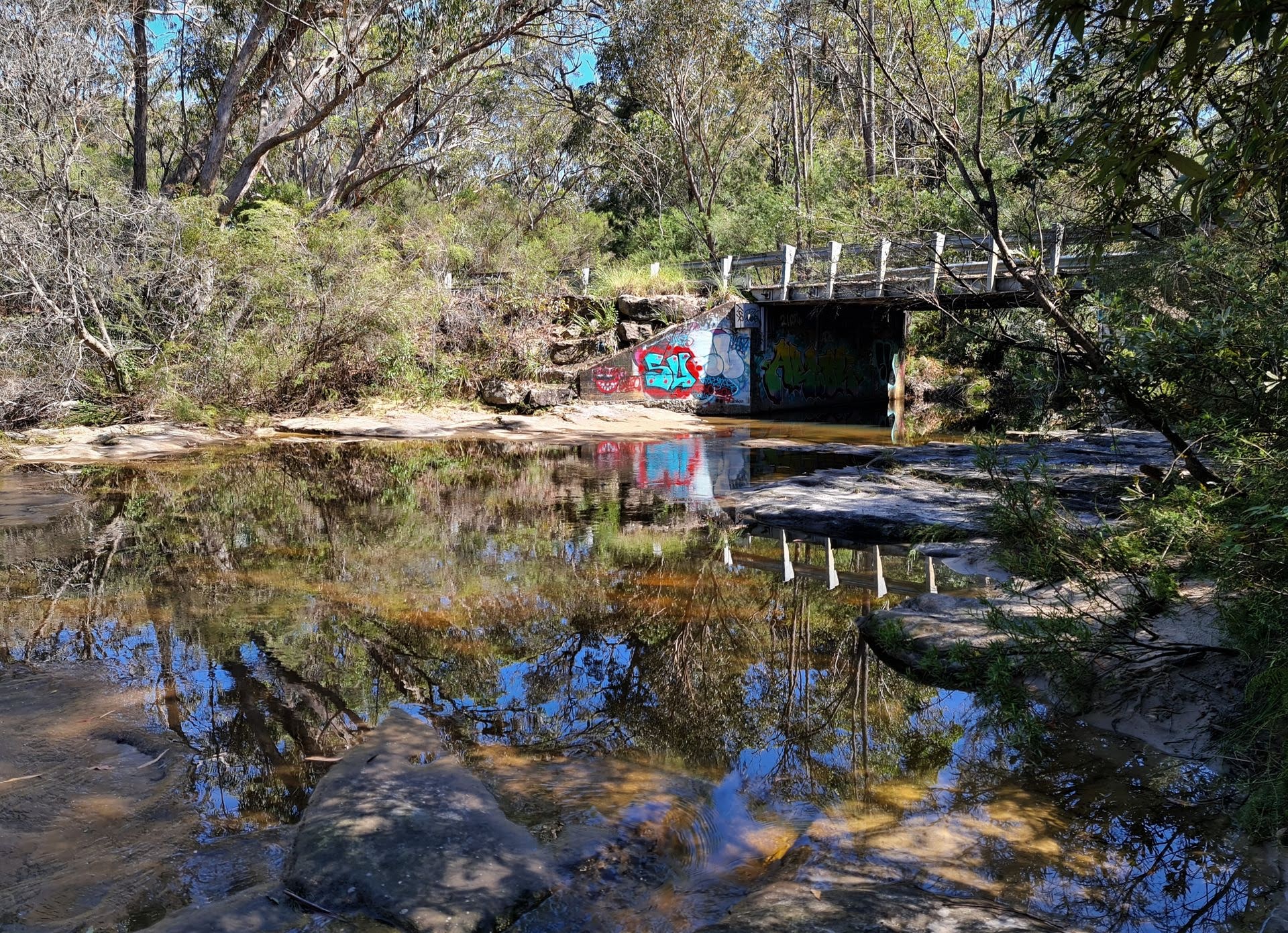
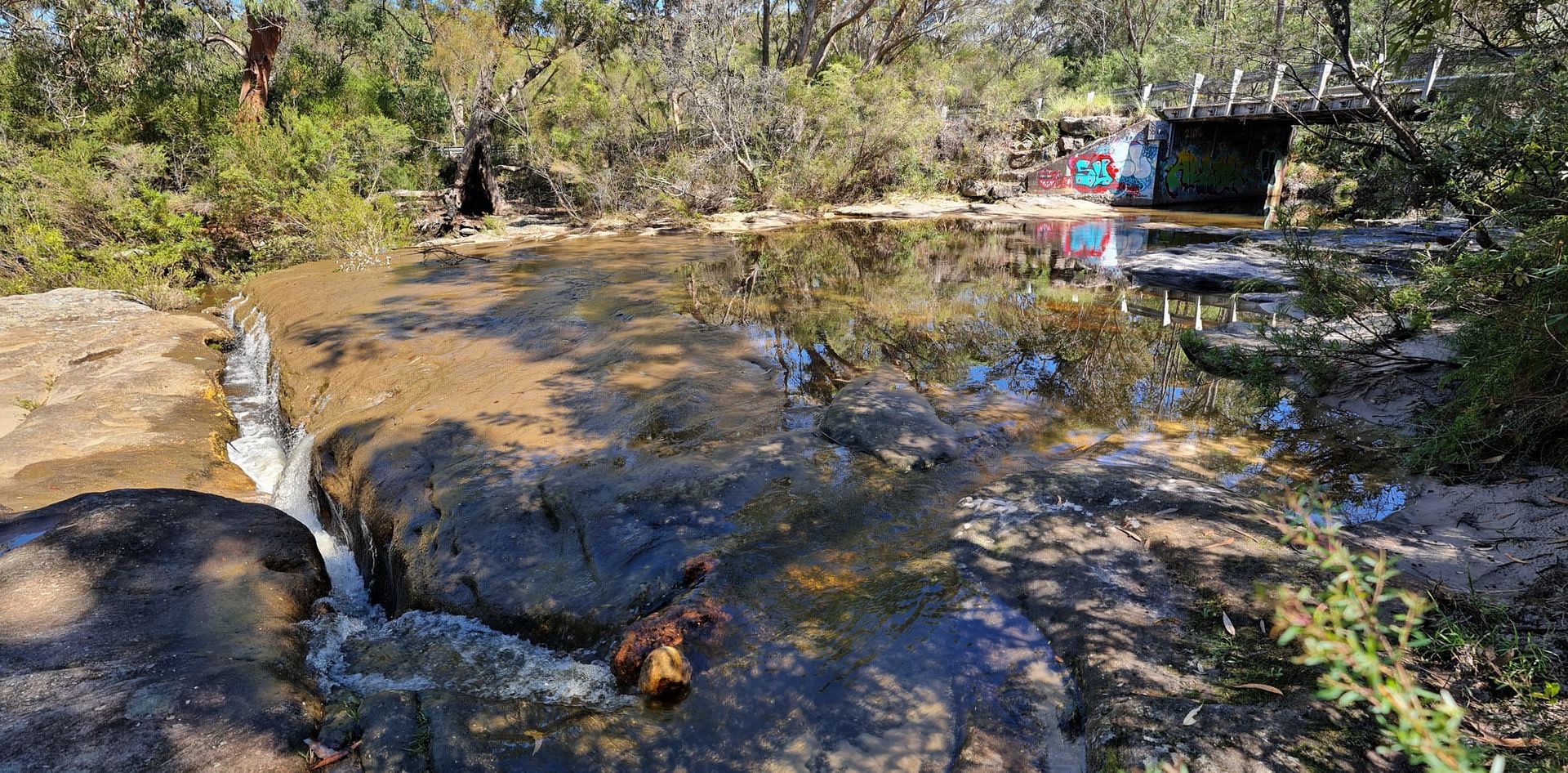
Ban The Release Of Balloons In NSW Petition
Ella: Green Turtle Rescued From Manly
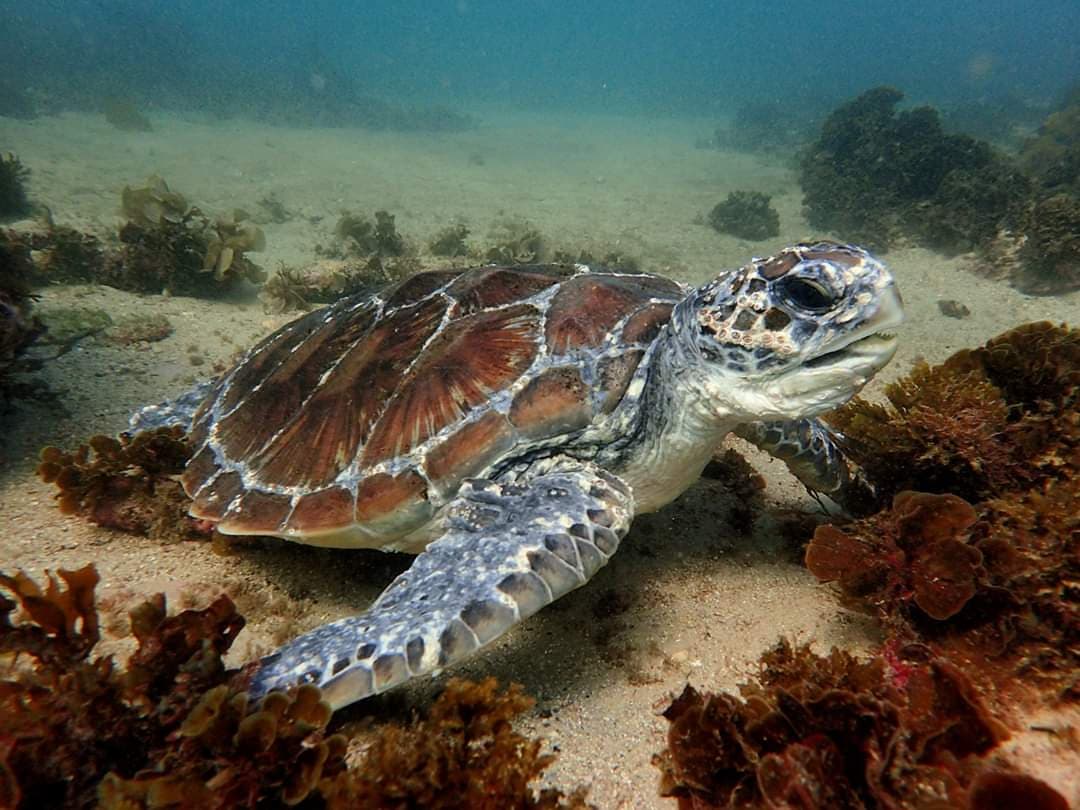

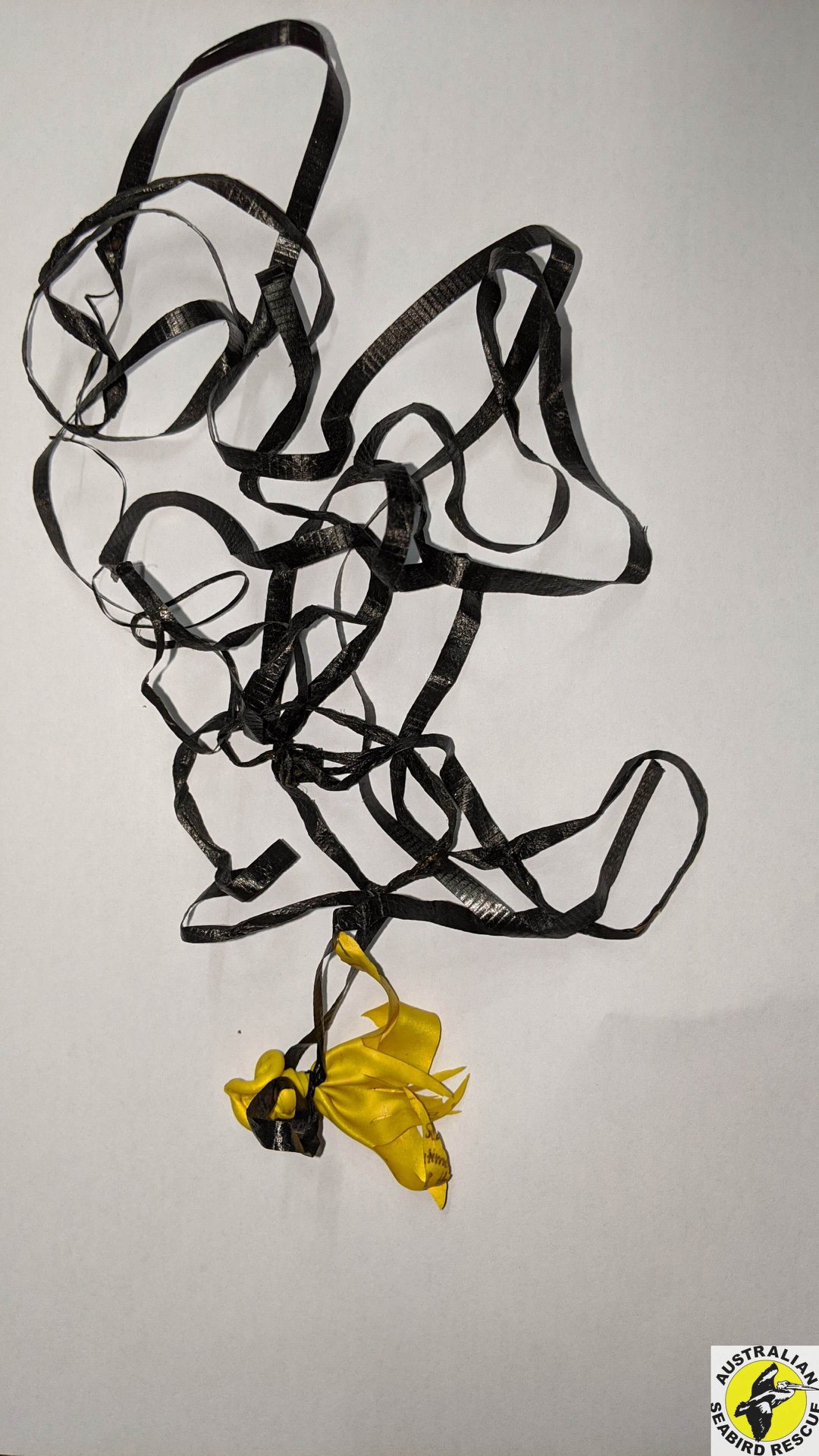
Local Wildlife Rescuers And Carers State That Ongoing Heavy Rains Are Tough For Us But Can Be Tougher For Our Wildlife:
- Birds and possums can be washed out of trees, or the tree comes down, nests can disintegrate or hollows fill with water
- Ground dwelling animals can be flooded out of their burrows or hiding places and they need to seek higher ground
- They are at risk crossing roads as people can't see them and sudden braking causes accidents
- The food may disappear - insects, seeds and pollens are washed away, nectar is diluted and animals can be starving
- They are vulnerable in open areas to predators, including our pets
- They can't dry out and may get hypothermia or pneumonia
- Animals may seek shelter in your home or garage.
You can help by:
- Keeping your pets indoors
- Assessing for wounds or parasites
- Putting out towels or shelters like boxes to provide a place to hide
- Drive to conditions and call a rescue group if you see an animal hit (or do a pouch check or get to a vet if you can stop)
- If you are concerned take a photo and talk to a rescue group or wildlife carer
There are 2 rescue groups in the Northern Beaches:
Sydney Wildlife: 9413 4300
WIRES: 1300 094 737
Please be patient as there could be a few enquiries regarding the wildlife.
Generally Sydney Wildlife do not recommend offering food but it may help in some cases. Please ensure you know what they generally eat and any offerings will not make them sick. You can read more on feeding wildlife here
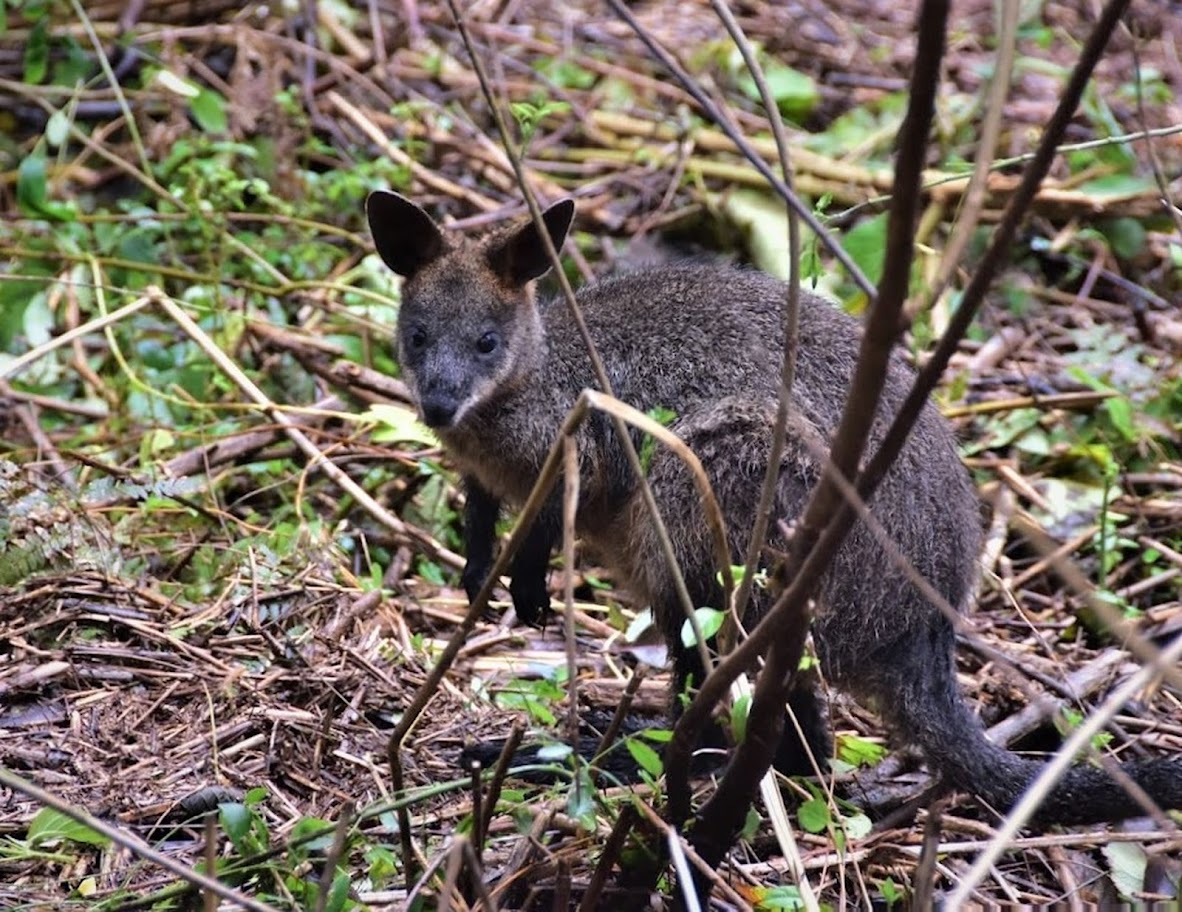
Information courtesy Ed Laginestra, Sydney Wildlife volunteer. Photo: Warriewood Wetlands Wallaby by Kevin Murray, March 2022.
Long Reef Fishcare Free Guided Walks
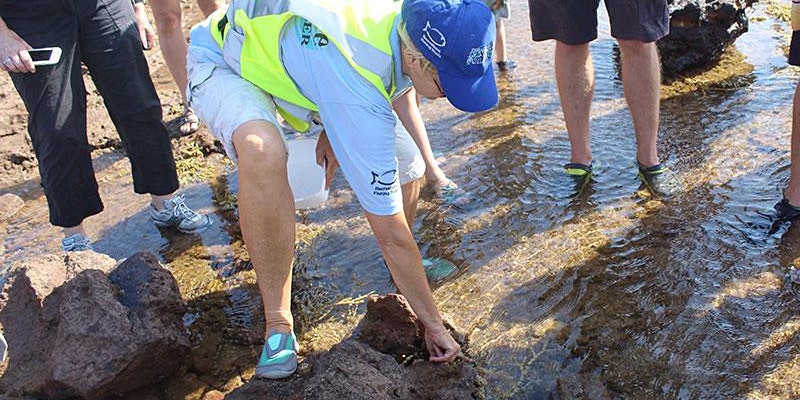
Friends Of Narrabeen Lagoon Catchment Forum: May 2022 - Speaker - Prof. Dennis Foley On The Aboriginal Heritage Of The Narrabeen Lagoon Catchment
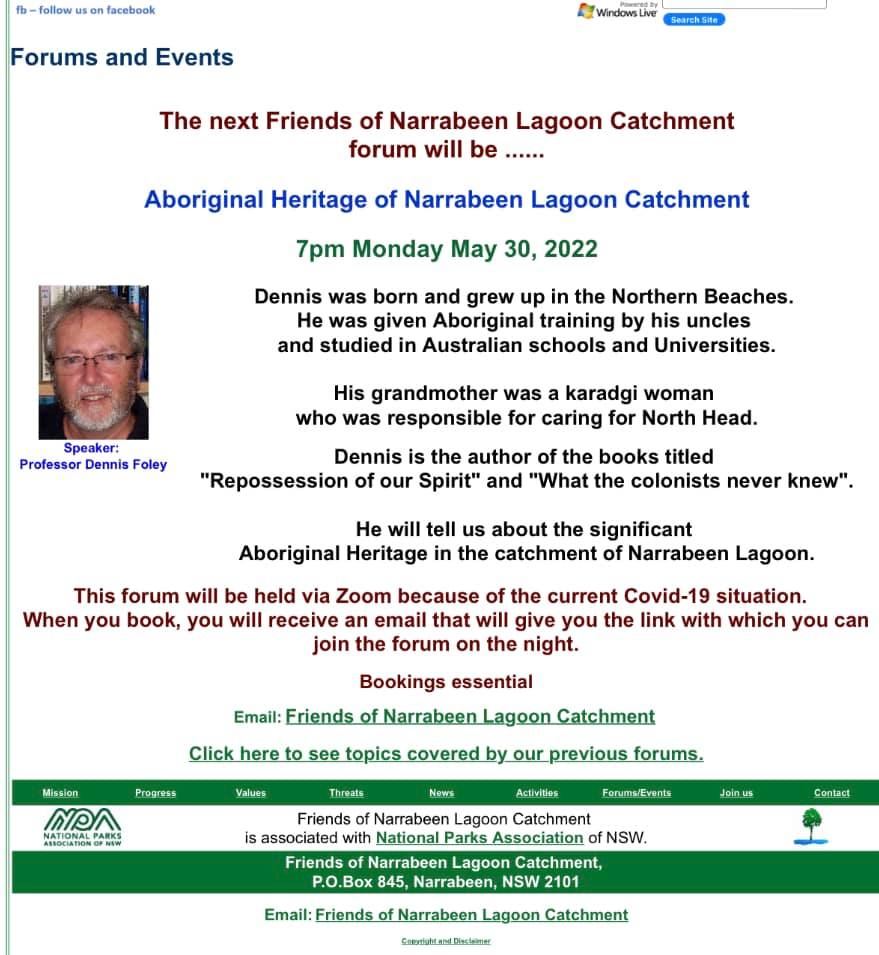
Pittwater Natural Heritage Association (PNHA) Autumn 2022 Newsletter
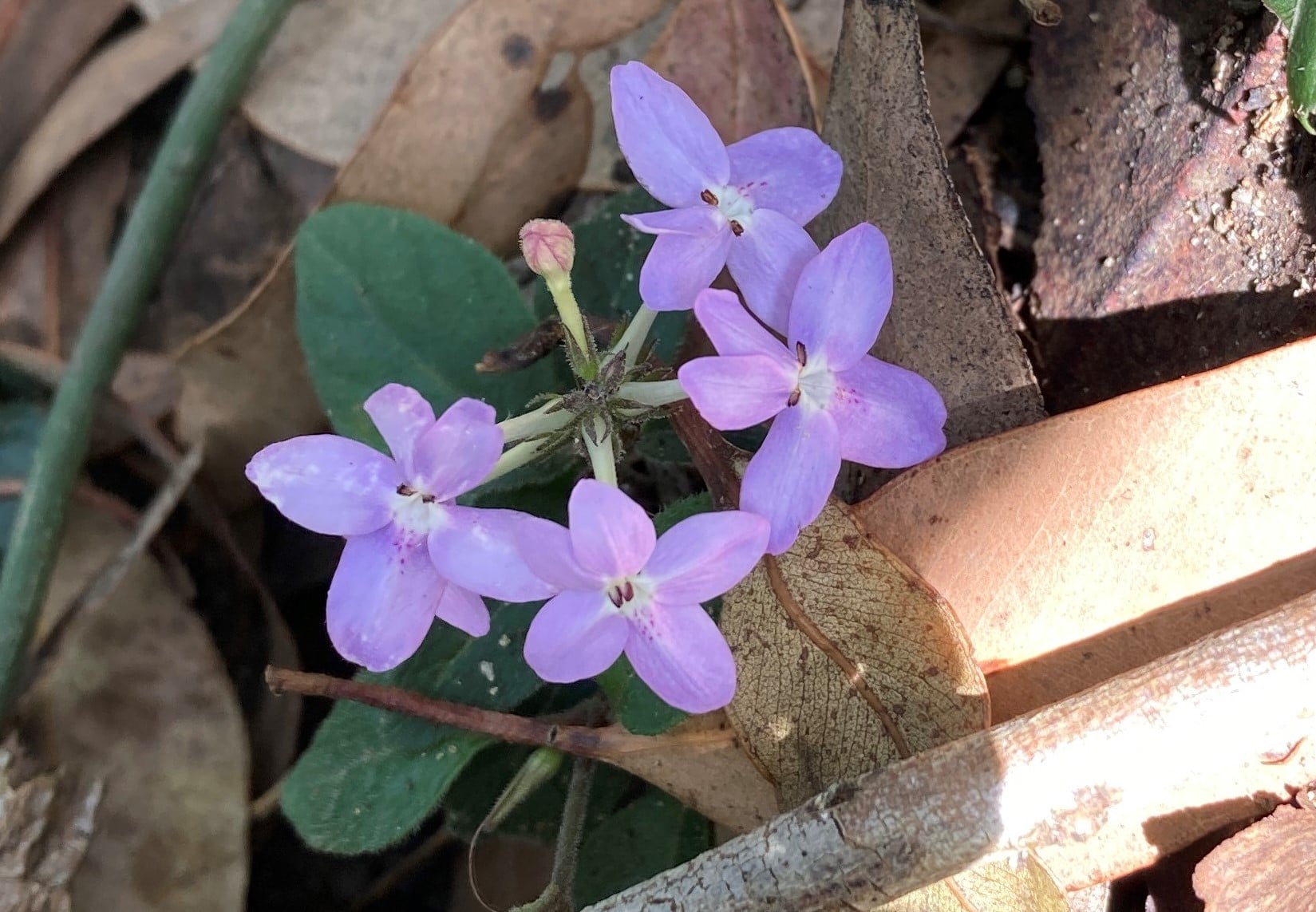
Cassia Flowering Now: Dispose Of This Weed To Stop The Spread

Aviaries + Possum Release Sites Needed

Sydney Wildlife Rescue: Helpers Needed
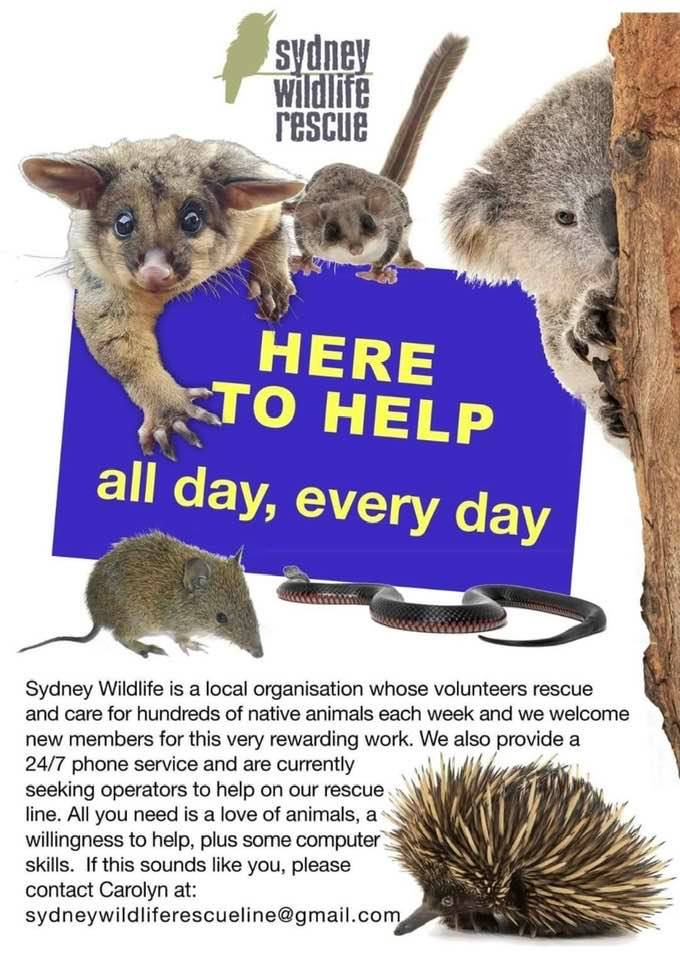
Bushcare In Pittwater
Where we work Which day What time
Avalon
Angophora Reserve 3rd Sunday 8:30 - 11:30am
Avalon Dunes 1st Sunday 8:30 - 11:30am
Avalon Golf Course 2nd Wednesday 3 - 5:30pm
Careel Creek 4th Saturday 8:30 - 11:30am
Toongari Reserve 3rd Saturday 9 - 12noon (8 - 11am in summer)
Bangalley Headland 2nd Sunday 9 to 12noon
Bayview
Winnererremy Bay 4th Sunday 9 to 12noon
Bilgola
North Bilgola Beach 3rd Monday 9 - 12noon
Algona Reserve 1st Saturday 9 - 12noon
Plateau Park 1st Friday 8:30 - 11:30am
Church Point
Browns Bay Reserve 1st Tuesday 9 - 12noon
McCarrs Creek Reserve Contact Bushcare Officer To be confirmed
Clareville
Old Wharf Reserve 3rd Saturday 8 - 11am
Elanora
Kundibah Reserve 4th Sunday 8:30 - 11:30am
 Mona Vale
Mona Vale Mona Vale Beach Basin 1st Saturday 8 - 11am
Mona Vale Dunes 2nd Saturday +3rd Thursday 8:30 - 11:30am
Newport
Bungan Beach 4th Sunday 9 - 12noon
Crescent Reserve 3rd Sunday 9 - 12noon
North Newport Beach 4th Saturday 8:30 - 11:30am
Porter Reserve 2nd Saturday 8 - 11am
North Narrabeen
Irrawong Reserve 2nd Saturday 2 - 5pm
Palm Beach
North Palm Beach Dunes 3rd Saturday 9 - 12noon
Scotland Island
Catherine Park 2nd Sunday 10 - 12:30pm
Elizabeth Park 1st Saturday 9 - 12noon
Pathilda Reserve 3rd Saturday 9 - 12noon
Warriewood
Warriewood Wetlands 1st Sunday 8:30 - 11:30am
Whale Beach
Norma Park 1st Friday 9 - 12noon
Western Foreshores
Coopers Point, Elvina Bay 2nd Sunday 10 - 1pm
Rocky Point, Elvina Bay 1st Monday 9 - 12noon
Gardens And Environment Groups And Organisations In Pittwater
Rule Change For Emissions Reduction Fund: To Prevent Native Forest Regeneration Projects
- human-induced regeneration
- native forest from managed regrowth.
Proposed Changes To Rules For Generator Closures
Federal Coal Closure Changes No Substitute For Real Roadmap
Air Pollution Inches Lower As Clean Energy Begins To Replace Coal Power In NSW
- 101,000 tonnes of nitrogen oxides;
- 147,000 tonnes of sulphur dioxide;
- 543 tonnes of fine particles (PM2.5); and
- 184 kg of mercury.
Government Loan Enables Development Of Australia’s Rare Earths Refinery
- $239 million in loans to EcoGraf Ltd and Renascor Resources through the Critical Minerals Facility
- $243 million in grant funding to four critical minerals projects under the Modern Manufacturing Initiative
- the $200 million Accelerator Initiative grants program
- a $140 million loan to Hastings Technology Metals Ltd under the Northern Australian Infrastructure Facility
- $50 million for the establishment of a virtual National Critical Minerals Research and Development Centre.
Critical Minerals Accelerator Initiative Guidelines: Have Your Say
ARENA Board Appointments
Approvals Another Significant Step In Woodside's Scarborough Joint Venture
Production Licence Moves Santos Dorado Oil Project Forward
Gippsland Area Announced As Priority For Australia’s First Offshore Wind Assessment
- the environment, such as marine life and migratory birds
- existing maritime infrastructure and industries such as fishing shipping
- other marine stakeholders and local communities.
- serves to secure affordable energy
- creates jobs and investment
- increases economic growth of regional and coastal economies.
Tidal Wave Of Alarm For Tassie Oceans Amid Landmark Marine Law Review: Research
- More than three in four Braddon voters (76%) are concerned that Tasmania’s ocean is under pressure from climate change, pollution, and fishing and support the government taking action to make sure it stays healthy for future generations
- Majority of Braddon voters (63%) agree that the expansion of salmon farms around Tasmania should be suspended until current government inquiries are completed and their recommendations implemented
- Almost 7 in 10 (67%) agree the Federal Government should match Tasmania by setting a net-zero by 2030 emissions target
- Federal seat of Braddon 2PP: Labor 53%, Liberal 47%
- Eight out of 19 (42%) of Tasmania’s assessed commercial fish stocks are classified as having depleted or currently depleting stocks.
- Overfishing of rock lobsters allowed historic lows of less than 10% of natural levels in 2011-12. Stocks are now rebuilding and assessed as sustainable, despite some areas with less than 20% of their natural population levels at the latest stock assessment.
- The Act does not address climate change or include the precautionary principle, which prevents scientific uncertainty being used to delay environmental protection measures.
- Centrostephanus urchin barrens, which decimate rocky reefs, now cover over 15% of east coast reefs, impacting commercially and recreationally important habitats.
- Establishing an overarching legal framework for coordinated management that takes into account the needs of the environment to remain healthy. This includes consideration of current and future uses of Tasmania’s coastal waters for all uses, users and values.
- Use multi-sector marine spatial planning to implement this approach.
- Appropriate recognition of the rights of First Nations Tasmanians should be developed through direct engagement.
- An economic return should be paid to the community for the private use of public resources.
- Set precautionary fish stock targets to retain 48% of natural populations for Tasmanian fisheries.
National Koala Recovery Plan Released
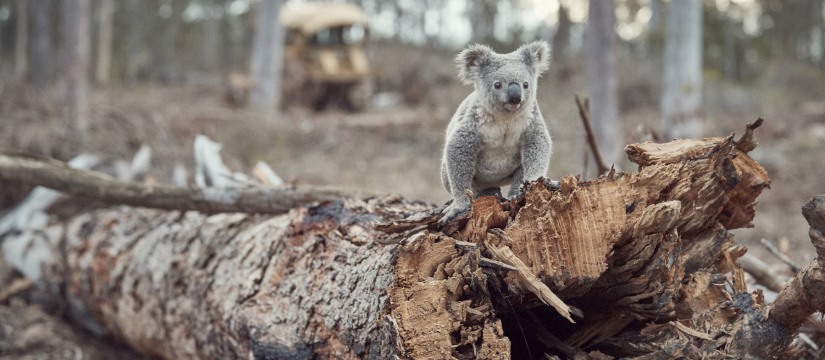
$5 Million In Community Grants To Help Koalas
- improve the extent, quality and connectivity of Koala habitat and reduce local threats
- increase understanding and management of disease and injury affecting Koala health and lift capability in on-ground care, treatment and triage of koalas, and
- improve data and knowledge of Koala populations and health across their range, to support effective decision making and conservation action.
Devastating Floods Reinforce Need For Urgent Action On Climate Change AMA States
Another day, another flood: preparing for more climate disasters means taking more personal responsibility for risk
Celeste Young, Victoria University and Roger Jones, Victoria UniversitySydney is bracing for flash floods and landslides as the city yet again endures a disastrous downpour, with a month’s worth of rain falling in just 24 hours and evacuation orders issued. The rain is forecast to continue all week.
Communities in New South Wales have endured one disaster after another. As exhausted residents in Lismore began cleaning up from the record-breaking flood in late February, a second flood inundated the city. Indeed, some flood-damaged towns this year were previously in the path of the Black Summer bushfires.
Climate change is making disasters more frequent and severe, so how should we be preparing for these inevitable events?
As our latest research shows, a key aspect of pre-disaster preparation is that people accept and understand what risks they face and how they’ll be impacted. Stocking up on toilet paper in preparation for COVID lockdowns is an example of what happens when they don’t.
Meeting New Challenges
One of the lasting mantras in disaster risk management is “hope for the best, anticipate the worst”. But what happens when the worst-case scenario is realised – or even exceeded?
During the Black Summer bushfires in 2019, Rural Fire Service Commissioner Shane Fitzsimmons said:
We cannot guarantee a fire truck at every home. We cannot guarantee an aircraft will be overhead every time a fire is impacting on your property. We cannot guarantee that someone will knock on the door and give you a warning that there’s fires nearby.
What’s more, the recent NSW floods saw local communities instigate their own rescue operations, with boat or a jet ski owners pulling stranded survivors from inundated homes.
Being prepared at the individual, household and local community level is essential. Emergency management and support agencies such as hospitals are becoming overwhelmed by the unprecedented scales of recent disasters.
First, this is because many emergency workers who respond to earthquakes, cyclones, floods, fires, and storms are volunteers. Second, some events such as the pandemic are unbudgeted and exceptional, so agencies need additional resources.
Third, a disaster is, by definition, an event that exceeds the capacity to respond, making “disaster response” a paradox.
It is unreasonable to expect people to cope with all disasters – but it is reasonable to expect people to manage a certain level of risk. So how much responsibility should fall on the individual, and how much needs to be shared across governments, industry, agencies, and throughout the community?
72 Hours Are Crucial
For those directly affected, the 72 hours surrounding the event can be the most important. This spans the time between early warning, onset, and the immediate responses that may involve defence, evacuation or rescue.
In the United States, you’re encouraged to be prepared to cope for 72 hours in a disaster. We are beginning to see this encouraged in Australia along with greater acknowledgement of personal responsibility for risk.
Local disaster agencies in Australia are promoting lists of essentials to keep on hand, including first-aid kits, medications, and enough food and water for three days.
People are also encouraged to prepare psychologically, and rehearsing survival plans has been found to be especially useful with children. And emergency management agencies and community groups provide guidance for those with a disability, non-English speakers, and people with pets and other domestic animals.
Still, information does not always guarantee preparation. Our research surveyed bushfire-hit residents in East Gippsland following the Black Summer fires. We found people new to an area were less likely to be prepared or understand how to respond to risks.
They were also more likely to have unrealistic expectations about how long and demanding the recovery process was. Some people from non-English speaking backgrounds were isolated within their communities and did not know where to access information.
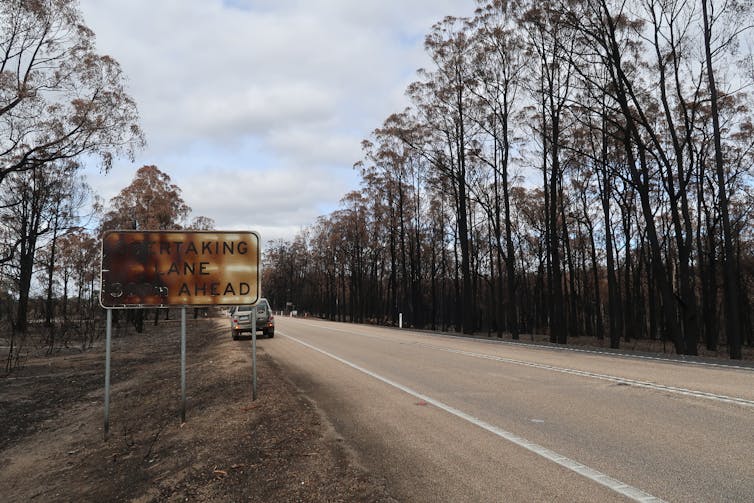
Owning Your Risk
Our Risk Ownership Framework allows communities and the public and private sector to unpack the complex connections of shared risk ownership. We explore the questions “who owns a risk?” and “how do they own it?”
We learned that if one area is unable to manage their risk, then it can increase or transfer to another person or entity.
For example, a homeowner may be responsible for home and contents insurance, while a community is responsible for maintaining social connectivity. Likewise, local government may own and maintain flood levees, while state government regulates the planning for them.
We also explored the concept of “unowned” risks – where roles and responsibilities in disasters are unallocated or unfulfilled. These can impact important community values such as liveability, local businesses (such as tourism) and natural resources.
Unowned risks raises difficult questions such as:
will the forests and wildlife recover and if so, how long will this take?
will displaced residents return to their communities, or will housing availability and affordability force them out?
will communities, such as Lismore, remain viable in the face of future disasters under climate change?
These questions often get passed over in favour of more immediate needs.
The escalation and breadth of disasters these last two years has left communities with barely enough time to recover before the next one arrives. We need to start negotiating how to prepare for the unexpected and what follows.
The mantra of community resilience and empowerment is now a central narrative, but recent events show there’s a pivotal role for government that cannot be neglected if we’re to survive future disasters.
We need a national conversation on what risk ownership for disaster means – personally and politically. ![]()
Celeste Young, Collaborative Research Fellow, Sustainable Industries and Liveable Cities (ISILC), Victoria University and Roger Jones, Professorial Research Fellow, Victoria University
This article is republished from The Conversation under a Creative Commons license. Read the original article.
World-Class Herbarium Unveiled
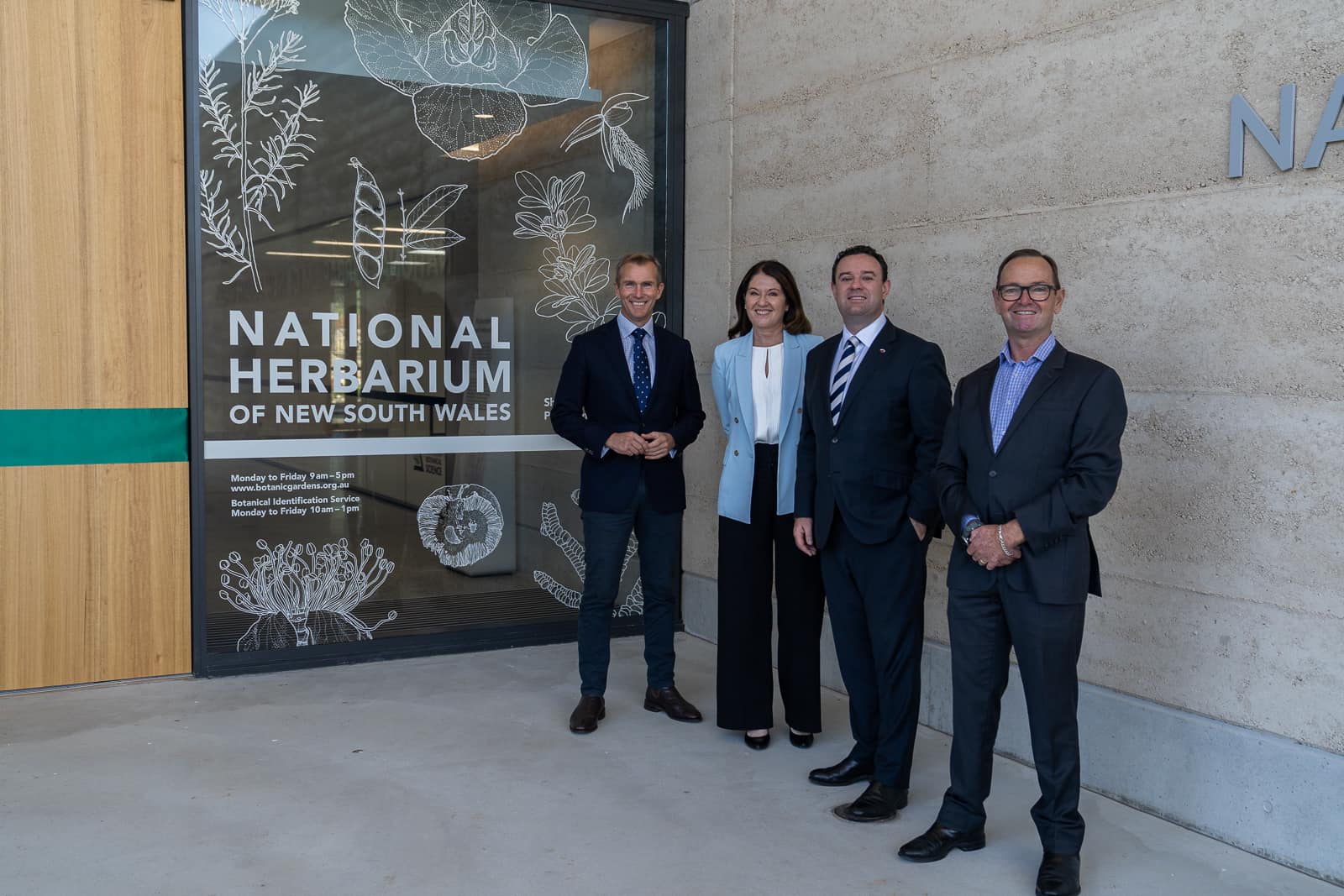
In the midst of climate change, habitat loss and the extinction crisis, Australian scientists are more motivated than ever to ensure plant species are conserved, which is vital to all life that depends on them - ROB STOKES, MINISTER FOR INFRASTRUCTURE, CITIES AND ACTIVE TRANSPORT
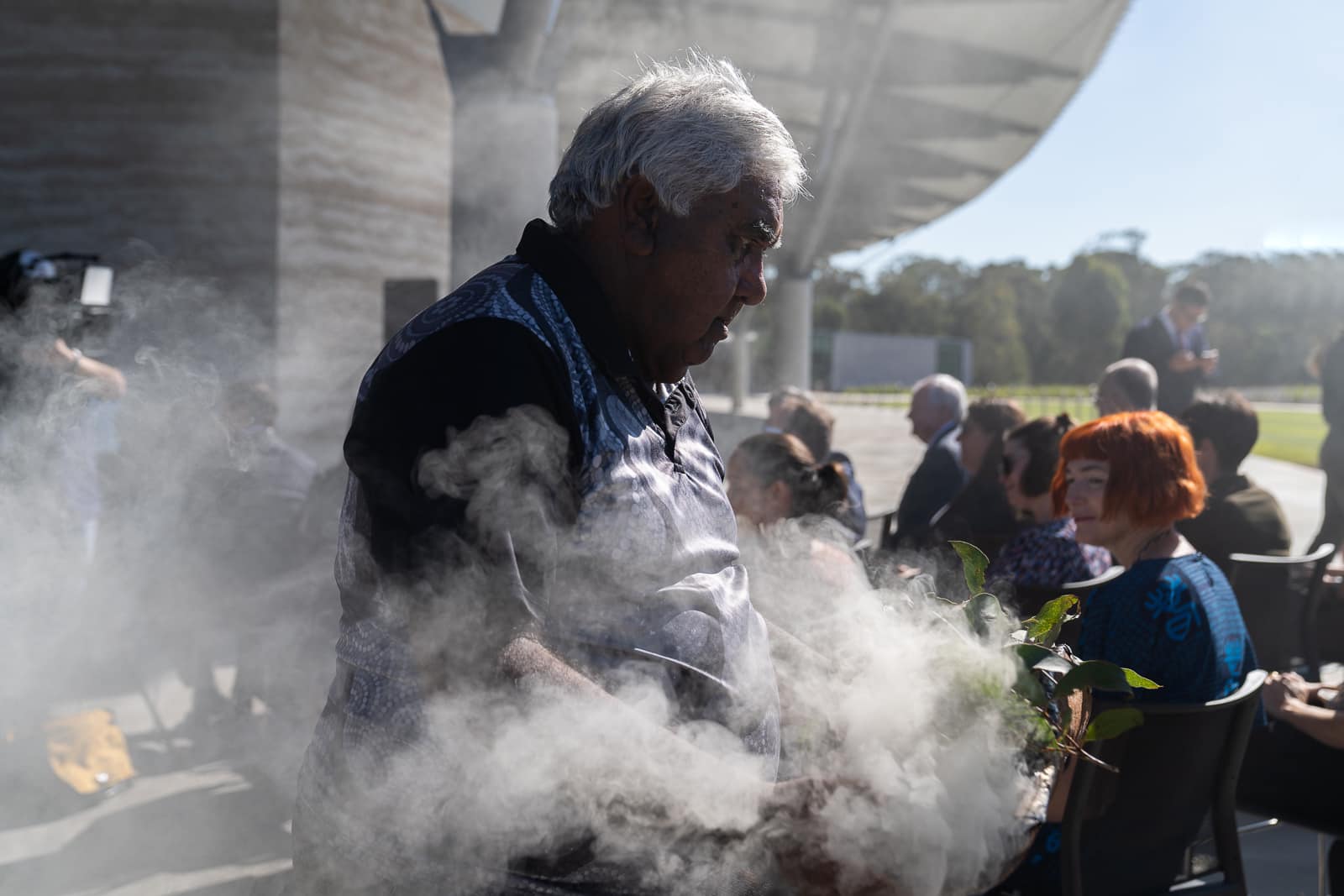
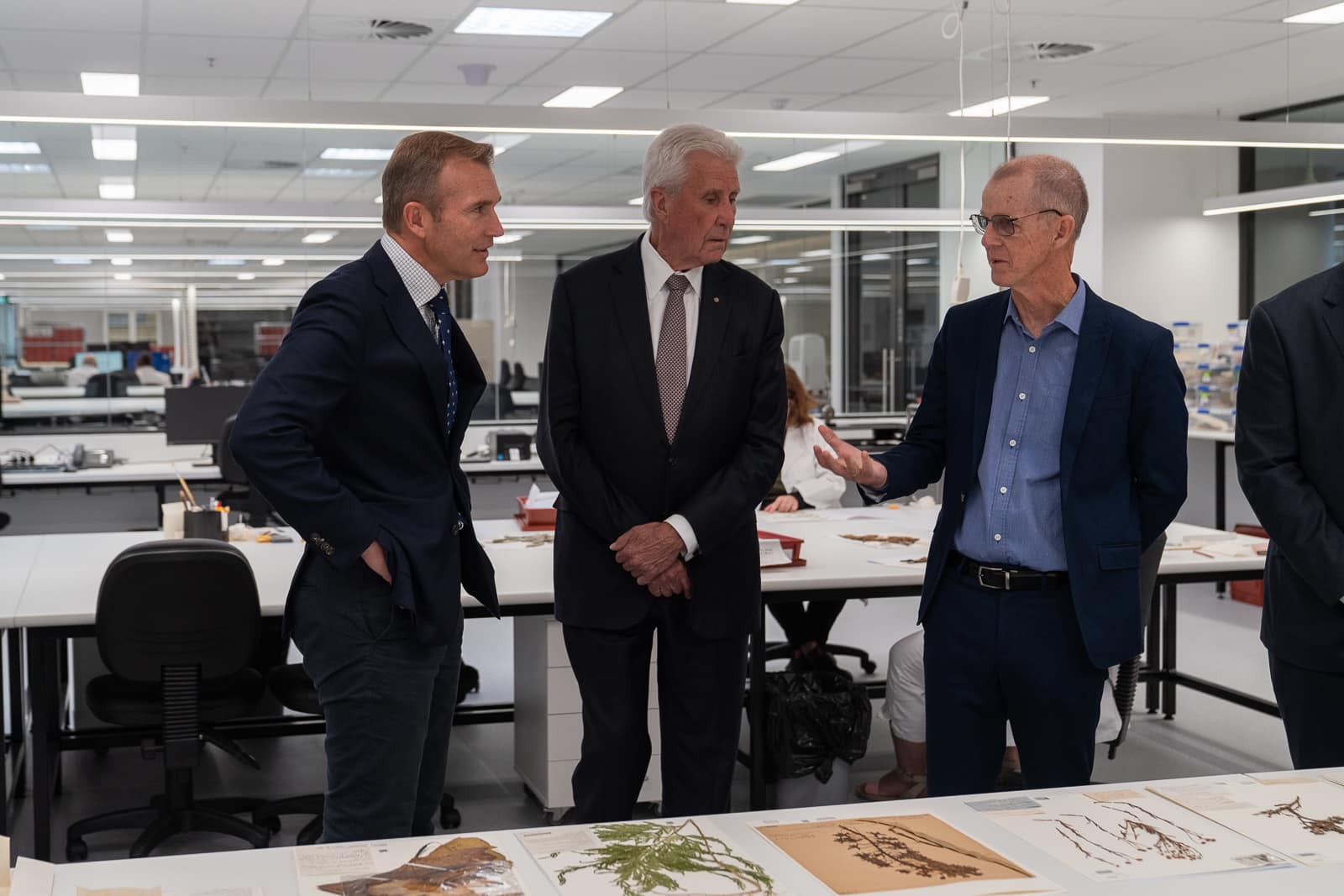
Australia Has A Critical Role In Tackling Climate Change

On top of drastic emissions cuts, IPCC finds large-scale CO₂ removal from air will be “essential” to meeting targets

Large-scale deployment of carbon dioxide removal (CDR) methods is now “unavoidable” if the world is to reach net-zero greenhouse gas emissions, according to this week’s report by the Intergovernmental Panel on Climate Change (IPCC).
The report, released on Monday, finds that in addition to rapid and deep reductions in greenhouse emissions, CO₂ removal is “an essential element of scenarios that limit warming to 1.5℃ or likely below 2℃ by 2100”.
CDR refers to a suite of activities that lower the concentration of CO₂ in the atmosphere. This is done by removing CO₂ molecules and storing the carbon in plants, trees, soil, geological reservoirs, ocean reservoirs or products derived from CO₂.
As the IPCC notes, each mechanism is complex, and has advantages and pitfalls. Much work is needed to ensure CDR projects are rolled out responsibly.
How Does CDR Work?
CDR is distinct from “carbon capture”, which involves catching CO₂ at the source, such as a coal-fired power plant or steel mill, before it reaches the atmosphere.
There are several ways to remove CO₂ from the air. They include:
terrestrial solutions, such as planting trees and adopting regenerative soil practices, such as low or no-till agriculture and cover cropping, which limit soil disturbances that can oxidise soil carbon and release CO₂.
geochemical approaches that store CO₂ as a solid mineral carbonate in rocks. In a process known as “enhanced mineral weathering”, rocks such as limestone and olivine can be finely ground to increase their surface area and enhance a naturally occurring process whereby minerals rich in calcium and magnesium react with CO₂ to form a stable mineral carbonate.
chemical solutions such as direct air capture that use engineered filters to remove CO₂ molecules from air. The captured CO₂ can then be injected deep underground into saline aquifers and basaltic rock formations for durable sequestration.
ocean-based solutions, such as enhanced alkalinity. This involves directly adding alkaline materials to the environment, or electrochemically processing seawater. But these methods need to be further researched before being deployed.
Where Is It Being Used Right Now?
To date, US-based company Charm Industrial has delivered 5,000 tonnes of CDR, which is the the largest volume thus far. This is equivalent to the emissions produced by about 1,000 cars in a year.
There are also several plans for larger-scale direct air capture facilities. In September, 2021, Climeworks opened a facility in Iceland with a 4,000 tonne per annum capacity for CO₂ removal. And in the US, the Biden Administration has allocated US$3.5 billion to build four separate direct air capture hubs, each with the capacity to remove at least one million tonnes of CO₂ per year.
However, a previous IPCC report estimated that to limit global warming to 1.5℃, between 100 billion and one trillion tonnes of CO₂ must be removed from the atmosphere this century. So while these projects represent a massive scale-up, they are still a drop in the ocean compared with what is required.
In Australia, Southern Green Gas and Corporate Carbon are developing one of the country’s first direct air capture projects. This is being done in conjunction with University of Sydney researchers, ourselves included.
In this system, fans push atmospheric air over finely tuned filters made from molecular adsorbents, which can remove CO₂ molecules from the air. The captured CO₂ can then be injected deep underground, where it can remain for thousands of years.
Opportunities
It is important to stress CDR is not a replacement for emissions reductions. However, it can supplement these efforts. The IPCC has outlined three ways this might be done.
In the short term, CDR could help reduce net CO₂ emissions. This is crucial if we are to limit warming below critical temperature thresholds.
In the medium term, it could help balance out emissions from sectors such as agriculture, aviation, shipping and industrial manufacturing, where straightforward zero-emission alternatives don’t yet exist.
In the long term, CDR could potentially remove large amounts of historical emissions, stabilising atmospheric CO₂ and eventually bringing it back down to pre-industrial levels.
The IPCC’s latest report has estimated the technological readiness levels, costs, scale-up potential, risk and impacts, co-benefits and trade-offs for 12 different forms of CDR. This provides an updated perspective on several forms of CDR that were lesser explored in previous reports.
It estimates each tonne of CO₂ retrieved through direct air capture will cost US$84–386, and that there is the feasible potential to remove between 5 billion and 40 billion tonnes annually.
Concerns And Challenges
Each CDR method is complex and unique, and no solution is perfect. As deployment grows, a number of concerns must be addressed.
First, the IPCC notes scaling up CDR must not detract from efforts to dramatically reduce emissions. They write that “CDR cannot serve as a substitute for deep emissions reductions but can fulfil multiple complementary roles”.
If not done properly, CDR projects could potentially compete with agriculture for land or introduce non-native plants and trees. As the IPCC notes, care must be taken to ensure the technology does not negatively affect biodiversity, land-use or food security.
The IPCC also notes some CDR methods are energy-intensive, or could consume renewable energy needed to decarbonise other activities.
It expressed concern CDR might also exacerbate water scarcity and make Earth reflect less sunlight, such as in cases of large-scale reforestation.
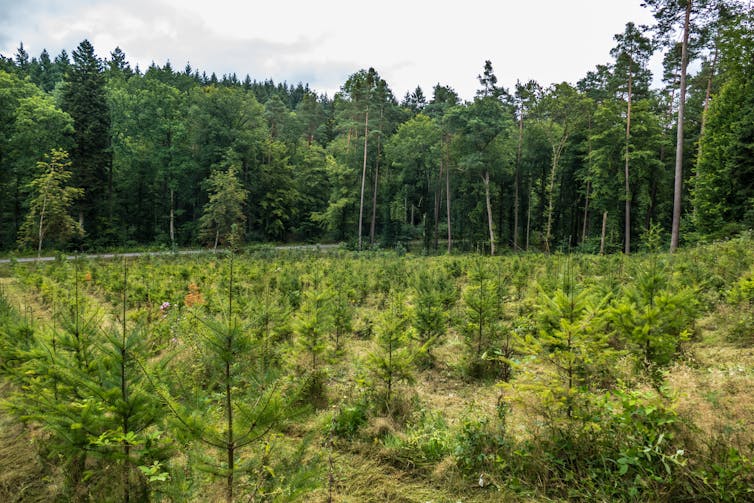
Given the portfolio of required solutions, each form of CDR might work best in different locations. So being thoughtful about placement can ensure crops and trees are planted where they won’t dramatically alter the Earth’s reflectivity, or use too much water.
Direct air capture systems can be placed in remote locations that have easy access to off-grid renewable energy, and where they won’t compete with agriculture or forests.
Finally, deploying long-duration CDR solutions can be quite expensive – far more so than short-duration solutions such as planting trees and altering soil. This has hampered CDR’s commercial viability thus far.
But costs are likely to decline, as they have for many other technologies including solar, wind and lithium-ion batteries. The trajectory at which CDR costs decline will vary between the technologies.
Future Efforts
Looking forward, the IPCC recommends accelerated research, development and demonstration, and targeted incentives to increase the scale of CDR projects. It also emphasises the need for improved measurement, reporting and verification methods for carbon storage.
More work is needed to ensure CDR projects are deployed responsibly. CDR deployment must involve communities, policymakers, scientists and entrepreneurs to ensure it’s done in an environmentally, ethically and socially responsible way.![]()
Sam Wenger, PhD Student, University of Sydney and Deanna D'Alessandro, Professor & ARC Future Fellow, University of Sydney
This article is republished from The Conversation under a Creative Commons license. Read the original article.
Time’s up: why Australia has to quit stalling and wean itself off fossil fuels

If the world acts now, we can avoid the worst outcomes of climate change without any significant effect on standards of living. That’s a key message from the new report from the Intergovernmental Panel on Climate Change (IPCC).
The key phrase here is “acts now”. Jim Skea, co-chair of the IPCC working group behind the report, said it’s “now or never” to keep global warming to 1.5℃. Action means cutting emissions from fossil fuel use rapidly and hard. Global emissions must peak within three years to have any chance of keeping warming below 1.5℃.
Unfortunately, Australia is not behaving as if the largest issue facing us is urgent – in fact, we’re doubling down on fossil fuels.
In recent years, Australia overtook Qatar to become the world’s largest exporter of liquefied natural gas (LNG). We’re still the second-largest exporter of thermal coal, and the largest for metallurgical coal.
Time’s up, Australia. We have to talk about weaning ourselves off fossil fuels and exporting our wealth of clean alternatives.

Why Can’t Australia Keep Selling Fossil Fuels During The Transition?
You might think: “Sure, Australia needs to transition. But it will take decades for the world to rid itself of fossil fuels. Why can’t we keep selling gas and coal in the meantime?”
Because we’re out of time. As the report states, “if existing fossil fuel infrastructure … continue to be operated as historically, they would entail CO₂ emissions exceeding the carbon budget for 1.5°℃”.
And US climatologist Michael Mann recently pointed out, if you were going to pick the worst continent to live on as the climate changes, it would be Australia. We are “a poster child for what the rest of the world will be dealing with,” he said.
Urgent action is needed to avoid the devastation and vast expense of unchecked climate change, recently estimated at close to 40% of global GDP by 2100.
We need to accelerate the shift, with much faster greening of electricity supply, electrification of transport, improvement of industrial processes and management of land use and food production. Luckily, the technologies needed to achieve this goal have already been developed and are mostly already competitive with carbon-emitting alternatives.
The economic costs of the transition would be marginal. The required investment in clean energy would be around 2.5% of GDP. That’s far less than the costs of allowing global heating to continue, with costs further offset by clean energy’s zero fuel costs and lower operating costs.
What Are Australia’s Prospects For Weaning Off The Fossil Fuel Teat?
Are we seeing signs of the urgency of the situation? If you look at the election platforms of Australia’s major political parties, we are still falling far short.
After nine years in office, the Liberal government has reluctantly set a goal of net zero emissions by 2050, but has offered little more than wishful thinking as a policy response.
Last week’s budget projected funding cuts of as much as 35% for Australia’s clean energy finance and renewable energy initiatives.
By far the biggest shortcoming is the failure to plan for the transition. Despite calls for coal and gas workers to be given an honest assessment of their position, both Liberal and Labor sustain the illusion that coal and gas have a long-term future.
Labor has put forward worthwhile initiatives such as the Rewiring the Nation program aimed at supporting private investment to modernise the grid and make it ready for high levels of renewable energy.
But the opposition’s main concern has been to avoid any policy that leaves it open to attack from the Coalition and the Murdoch press. You can see this in Labor leader Anthony Albanese’s repeated declaration that “the climate wars are over”.
That means, in 2022, we are facing an election campaign in which neither major party has put up serious ideas to cut emissions. There’s no mention of a price on carbon or an emissions trading scheme, no real action on land clearing, and no expansion of the government’s safeguard mechanism, meant to provide incentives for large industries to cut emissions relative to a baseline.

Lagging On Transport
The plunging cost of renewable energy is one of the bright spots in the fight against climate change. Cost alone is driving out coal and gas from the power sector.
The pace of transition is much slower in areas such as transport, which the IPCC report notes had excellent prospects of cutting emissions.
“Electric vehicles powered by low-emissions electricity offer the largest decarbonisation potential for land-based transport,” the report says.
In Australia, our failures on transport are palpable. To reach net zero by 2050, we have to move to an all-electric vehicle fleet. Given cars last 20 years on average, almost all new vehicles must be electric by 2030.
By contrast to almost all developed countries, Australia doesn’t have a fuel efficiency target, or plans to end new sales of petrol vehicles. The government has no proposal to address this, while Labor offers a minor tax concession on electric vehicles and a fuel efficiency information website.
Bizarrely, these baby steps sit in stark contrast to the bipartisan rush to shield petrol users from rising prices in the wake of the invasion of Ukraine.

We’ve Stalled Long Enough
We’ve run out of time to deal with the problem of global heating. We cannot afford another three years of inaction.
What would it look like if Australia’s next government realises the urgency? It would begin by ending all new investment in fossil fuel production and electricity generation, as well as fossil-fuel reliant industrial plants such as blast furnaces for steel mills. It would accelerate investment in carbon-free replacements, and create pathways for fossil fuel workers to work in the green economy.
And our leaders would talk openly and clearly about the huge threat climate change poses to all of us here, and the benefits we stand to gain by quitting fossil fuels. We would go from laggards to leaders. Imagine that.![]()
John Quiggin, Professor, School of Economics, The University of Queensland
This article is republished from The Conversation under a Creative Commons license. Read the original article.
IPCC says the tools to stop catastrophic climate change are in our hands. Here’s how to use them

Humanity still has time to arrest catastrophic global warming – and has the tools to do so quickly and cheaply, the Intergovernmental Panel on Climate Change (IPCC) has found.
The latest IPCC assessment report, the world’s definitive stocktake of action to minimise climate change, shows a viable path to halving global emissions by 2030.
This outlook is much more favourable than in earlier assessments, made possible by tremendous reductions in the cost of clean energy technologies. But broad policy action is needed to make steep emissions reductions happen.
We each contributed expertise to the report. In this article, we highlight how the world can best reduce emissions this decade and discuss the potential implications for Australia.
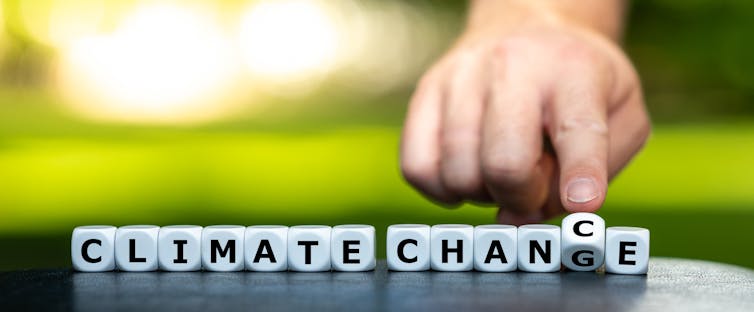
All-In, Right Now
- Frank Jotzo, lead author on policies and institutions
The IPCC identifies clean electricity and agriculture/forestry/land use as the sectors where the greatest emissions reductions can be achieved, followed by industry and transport.
Further low-emissions opportunities exist in other areas of production, buildings and the urban sector, as well as shifts in consumer demand. Overall, half the options to cut emissions by 50% cost less than US$20 a tonne.
While the IPCC does not provide a country-level assessment, it is clear Australia has all these opportunities.
The transition to zero-emissions electricity is well underway. Decarbonising industry and transport is a next step. Emerging technologies such as green steel and hydrogen offer Australia new, clean export industries. Fossil fuel use in turn is destined to fall, with coal dropping off particularly quickly.
And Australia’s large land mass provides massive opportunities to remove CO₂ from the atmosphere through plants – and in future, perhaps also through chemical methods.
The IPCC says comprehensive policy packages are needed to make deep emissions cuts happen.
It finds carbon taxes and emissions trading schemes have been effective, alongside targeted regulation and other instruments – such as support for research and development, uptake of advanced technologies and removing fossil fuel subsidies.
The report also emphasises the need for continued technological innovation, and to greatly scale up finance for climate action.
It puts weight on the importance of equity, sustainable development and comprehensive engagement across society to avert unmanageable climate change.
That requires climate action to take centre stage in society, involving all manner of groups. Independent institutions such as Australia’s Climate Change Authority have a strong role to play, and business should be actively involved.
So what’s the IPCC’s overriding message? The world’s governments must go all-in on addressing climate change. The opportunities are there and the toolkit is ready.

Food For Thought
- Annette Cowie, lead author on cross-sectoral perspectives
To have our best shot at holding warming to 1.5℃, the world must hit net-zero emissions by mid-century.
Agriculture is a big contributor to global emissions. But the IPCC confirms the land also has a central role in getting to net-zero through measures that remove CO₂ from the atmosphere and store it, such as tree planting, soil carbon management and the use of biochar.
Benefits returned to farmers include improved soil fertility and income from carbon trading.
The way we produce and distribute food accounts for more than one-third of global emissions.
The report says one of the biggest individual contributions we can make to reducing emissions is adopting a sustainable, healthy diet and reducing food waste. Such a diet is rich in plant-based food, with moderate intake of meat and dairy.
We can also tackle direct emissions from food production. Manure can be made into biogas and feed additives offer promising ways to reduce livestock methane.
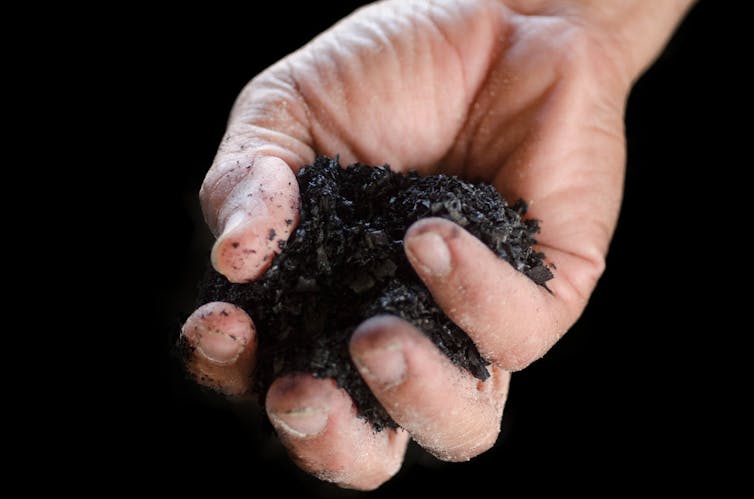
Moving The Dial On Transport
Peter Newman, coordinating lead author on transport
Jake Whitehead, lead author on transport
A set of technological solutions now exist to reduce emissions across energy, buildings, cities, transport and to a large extent, industry.
They include solar and wind-based power – now the cheapest form of electricity. They also include batteries and storage, electrified transport and “smart” technology that integrates these measures into zero-emissions solutions.
The IPCC report shows in the past decade, unit costs for solar have fallen by 85%, wind by 55% and batteries by 85%. Never before has the world had such an opportunity to decarbonise.
In recent decades, transport has been the laggard in emissions reduction. But, as the IPCC finds, technologies now exist to change the trajectory. Solar-powered electrification is rolling out for cars, bikes, scooters, buses and trucks.
Continuing advances in battery and charging technologies could enable the electrification of long-haul trucks, including electrified highways.
The IPCC assessed 60 actions individuals can take to reduce emissions. The largest contributions come from walking and cycling, using electrified transport, reducing air travel, as well as shifting towards plant-based diets.
This highlights how our individual choices matter.
Technology alone is not enough to reduce transport emissions. Cities must become more oriented toward public transport, walking and cycling. Effective new ways of doing this include on-demand shuttles, trackless trams and high speed rail.
Governments should provide incentives to supply and use electric scooters, bikes, cars, trucks and buses. This would ensure individuals and businesses who want to reduce their emissions have ways to do so.
The IPCC says cheap green hydrogen will be important to decarbonise aviation, shipping and parts of industry and agriculture. Much work is required in the next decade to bring this solution to fruition.
While government funding is vital to decarbonise transport, this transition also presents significant economic opportunities.
Australia could support transport decarbonisation globally through the mining of critical minerals, as well as the manufacturing, reuse and recycling of electric vehicles.
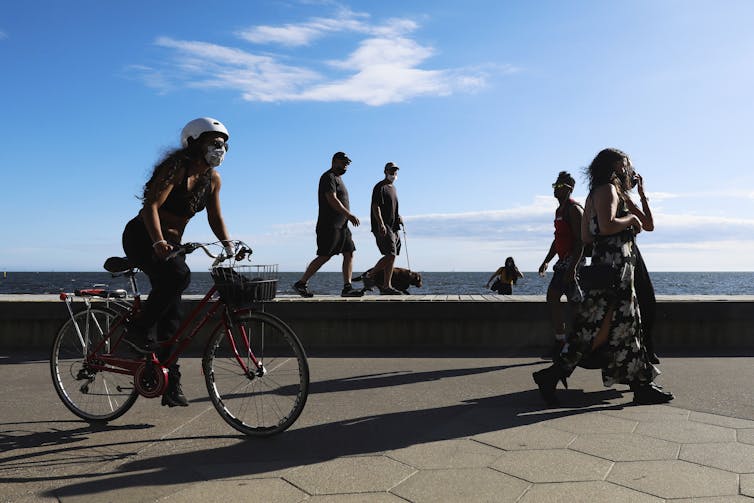
It’s Time To Act
Huge untapped potential exists to reduce global emissions quickly.
But the window of opportunity to reduce greenhouse gas emissions to safe levels is closing at an alarming rate. As the IPCC shows, fundamental change to both production and demand is required.
Clearly, business-as-usual is no longer tenable. The IPCC makes one thing patently evident: the time for action is well and truly upon us.
Arunima Malik, Glen Peters, Jacqueline Peel, Thomas Wiedmann and Xuemei Bai contributed to this article. See part one of the article here.![]()
Frank Jotzo, Professor, Crawford School of Public Policy and Head of Energy, Institute for Climate Energy and Disaster Solutions, Australian National University; Annette Cowie, Adjunct Professor, University of New England; Jake Whitehead, E-Mobility Research Fellow, The University of Queensland, and Peter Newman, Professor of Sustainability, Curtin University
This article is republished from The Conversation under a Creative Commons license. Read the original article.
IPCC finds the world has its best chance yet to slash emissions – if it seizes the opportunity

The world has its best chance yet to reduce greenhouse gas emissions quickly, but hard and fast cuts are needed across all sectors and nations to hold warming to safe levels, the global authority on climate change says.
The Intergovernmental Panel on Climate Change (IPCC) report, released today, says opportunities to affordably cut global emissions have risen sharply since the last assessment of this kind in 2014. But the need to act has also become far more urgent.
The report is the definitive assessment of how well the world is doing in finding solutions to rising temperatures. We each contributed expertise to the report.
Here, we explain key aspects of the findings and what it means for the world, including Australia.
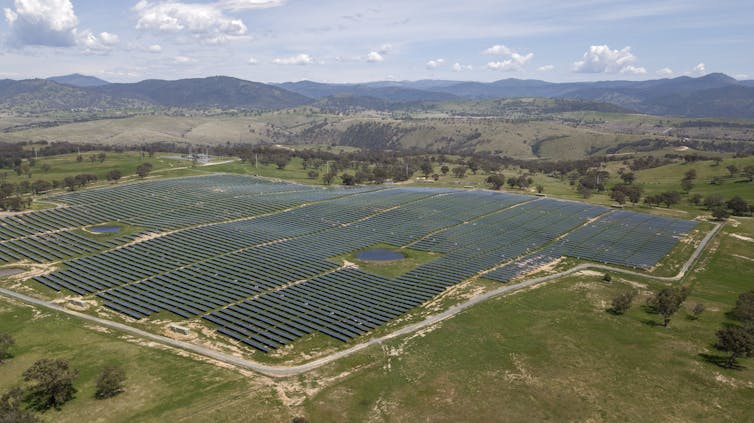
Earth Remains On Red Alert
- Glen Peters, lead author on mitigation pathways compatible with long-term goals
The report finds the world has made progress on emissions reduction over the last decade. Growth in greenhouse gas emissions slowed to 1.3% per year in the 2010s, compared to 2.1% in the 2000s.
But global emissions remain at record highs. If policy ambition does not ramp up immediately, warming will shoot past 1.5℃ and be well on the way to 2℃ – failing to meet the temperature goals of the Paris Agreement.
Alarmingly, the world’s current policies put us on track for global warming of between 2.2℃ and 3.5℃ within 80 years. It’s far better than the 4℃ or more feared about a decade ago, but still far from consistent with the Paris Agreement.
To have a 50% chance of keeping global warming to 1.5℃ by century’s end, global CO₂ emissions must halve in a decade, reach net zero in the 2050s and go net negative thereafter.
Methane emissions would also have to halve by 2050 in these scenarios.
Halving global emissions by 2030 is viable and achievable, the IPCC says. But it requires an immediate step change in climate policy across all sectors, countries and levels of government.
Rich nations must make the most rapid emissions reductions. This includes Australia, where a plan for net zero emissions by 2050 falls short of the ambition needed and is not yet backed by policy.
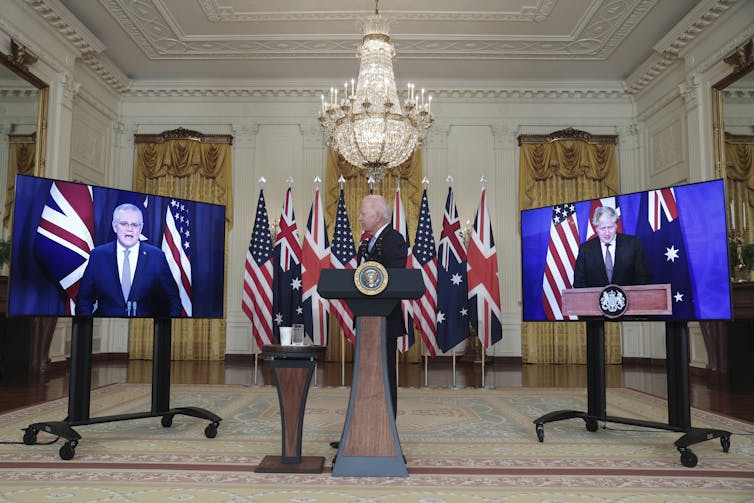
More Than Technology
- Tommy Wiedmann, lead author on emissions trends and drivers
The report is a comprehensive catalogue of what can be done – but has mostly not yet been done – to avert devastating climate change.
Some trends are encouraging. Some 36 countries have successfully cut greenhouse gas emissions over more than a decade.
And opportunities to cut emissions affordably and cheaply have multiplied enormously since 2014, the report finds.
This is largely due to the plunging costs of renewables, which promises emissions reduction beyond the energy sector in areas such as manufacturing and heavy transport. We expand on the options here.
But change is not coming fast enough. The report confirms all energy efficiency gains in the last decade have been more than outpaced by economic and population growth.
Technology is not a silver bullet. To have a chance of halving global emissions by 2030, we must use fewer high-carbon products and adopt less emissions-intensive lifestyles. Like all other changes required, these cannot be incremental, the IPCC says.
Australia is blessed with a bounty of renewable energy resources. Used wisely, it could slash domestic emissions and help reduce other countries’ emissions, in the form of zero-emissions energy exports.
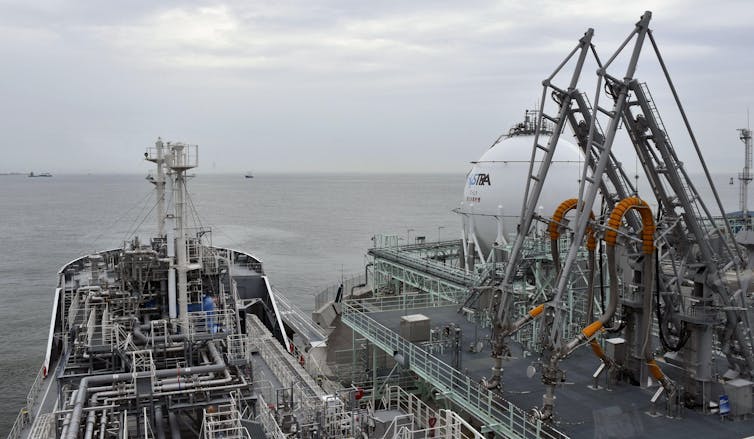
No-One Gets Left Behind
- Arunima Malik, lead author on introduction and framing
In 2016, the United Nations Sustainable Development Goals – an action plan for people, planet and prosperity – came into effect.
Sustainable development meets the needs of the present without compromising future generations. And as the latest IPCC report emphasises, it cannot be achieved without effective climate action.
One Sustainable Development Goal explicitly focuses on tackling climate change. But climate action is linked to all other goals, including those relating to energy, cities, industry, land, water and people.
Emissions reduction policies must be inclusive and avoid unintended consequences such as exacerbating existing poverty and hunger. The transition to a low-carbon world should be equitable and leave no-one behind.
The IPCC report calls for both accelerated climate action and a just transition. This requires well-designed policies at all levels of government, and across all sectors. International co-operation is key.

Is The Paris Agreement Working?
- Jacqueline Peel, lead author on international cooperation
This report is the first to assess the Paris Agreement, which took effect from 2020. Under the agreement, countries submit and update pledges on emissions reduction and adapting to the changing climate.
For these pledges to be achieved globally, high-income countries must help other nations by providing finance, access to clean energy technologies, and other assistance and know-how.
The IPCC identified a shortfall in global climate finance. In particular, high-income countries missed their 2020 target to mobilise $US100 billion per year.
The Paris Agreement is a treaty but the pledges are voluntary. Countries set their own targets and can’t be forced to meet them. So, is it working?
According to this new report, it largely is – albeit slowly. For instance, it has encouraged nations such as Australia to make more ambitious emissions pledges.
It has also enhanced transparency, enabling outside groups, such as those in civil society, to assess countries’ progress.
Other international mechanisms, such as global business partnerships and youth climate protests, are also driving change.
But more must be done to halve emissions this decade.
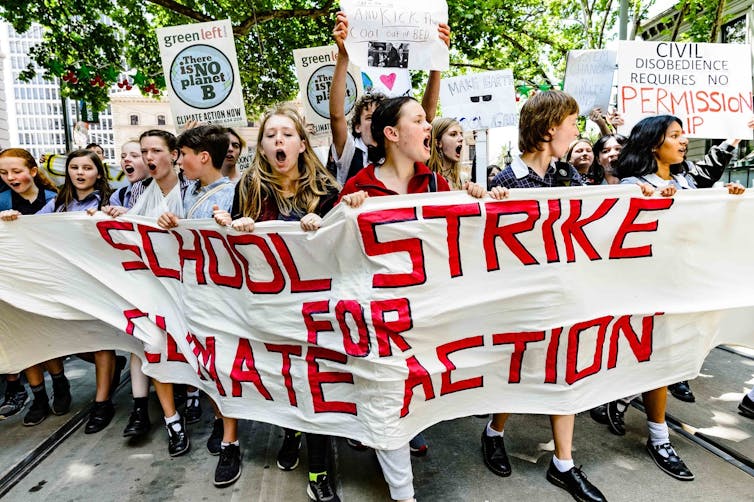
Cities Are Central
- Xuemei Bai, lead author on urban systems and other settlements
The IPCC report found around 70% of the world’s greenhouse gas emissions are produced in cities and urban areas. This offers both challenges and opportunities for emissions reduction.
To date, more than 1,000 cities worldwide have signed up to net-zero emission goals, including many in Australia.
To fulfil the Paris Agreement, more cities must step up and work towards goals such as 100% renewable energy, zero-carbon transport, decarbonising construction and improving waste management.
Developing countries are rapidly urbanising, which requires new housing and infrastructure. But doing so in a business-as-usual way could lead to substantial new emissions, the IPCC warns.
City leaders must embrace integrated planning and management to meet the climate challenge. This must be achieved while cities continue their important roles in maintaining social, economic and environmental well-being.
We need all hands on deck: businesses, communities, researchers and citizens.

Seize The Opportunity
This latest report shows how the choices we make now will determine the fate of generations to come – and all life on this planet.
Humanity has already missed so many opportunities to stabilise Earth’s climate. We now have the chance to right some of those past wrongs.
Only an urgent, concerted effort across all sectors and nations, starting today, will deliver the change needed.
Annette Cowie, Frank Jotzo, Jake Whitehead and Peter Newman contributed to this article. See part two of the article here.![]()
Thomas Wiedmann, Professor of Sustainability Research, UNSW Sydney; Arunima Malik, Senior Lecturer in Sustainability, University of Sydney; Glen Peters, Research Director, Center for International Climate and Environment Research - Oslo; Jacqueline Peel, Director, Melbourne Climate Futures, The University of Melbourne, and Xuemei Bai, Distinguished Professor, Australian National University
This article is republished from The Conversation under a Creative Commons license. Read the original article.
The Morrison government’s $50 million gas handout undermines climate targets and does nothing to improve energy security
Samantha Hepburn, Deakin UniversityTuesday night’s federal budget confirmed the Morrison government will spend A$50.3 million on gas projects in the Northern Territory, South Australia and the east coast.
This decision, it says, will support the completion of seven new “priority” gas projects. Energy Minister Angus Taylor says the government strongly backs natural gas and accused the opposition of being “willing to risk Australia’s energy security and investment in regional Australia to appease gas activists.”
However, the development of new fossil fuel projects is completely inconsistent with the broader goal of achieving net zero emissions by 2050 – and will not improve energy security.
Gas Extraction Drives Climate Change And Extreme Weather
Gas is a fossil fuel and a greenhouse gas. Emissions from the extraction, processing and export of gas contribute significantly to Australia’s carbon emissions.
Globally, there is growing recognition the energy sector must change. An International Energy Agency report last year made clear there can be no new oil, gas or coal development if the world is to have any chance of reaching net zero by 2050.
The methane found in natural gas is 25 times as potent as carbon dioxide at trapping heat in the atmosphere.
Funding new gas projects undermines Australia’s efforts to achieve an already unambitious climate target of 26-28% below 2005 levels by 2030.
Failing our climate target would breach the global goals of the Paris Agreement to limit the increase in global average temperatures to well below 2℃ above pre-industrial levels.
The consequences of global warming are catastrophic. Australia has had recent and profound experience of extreme climate events in the form of devastating bushfires and floods.
But What About Energy Security And Russian Gas?
The European Commission is phasing down two-thirds of Russian gas exports by the end of the year, in response to Russia’s invasion of Ukraine. This will create a gas shortfall.
Russia supplies nearly 40% of the EU’s gas consumption via a fixed pipeline infrastructure.
To phase this supply out, the EU will this year require 500 terrawatt hours of additional imports of liquified natural gas (LNG).
This will be difficult. Global markets are tight and LNG tends to be sold on long-term contracts. Alleviating the EU shortfall will require record imports of LNG over the European spring and summer period and a rapid upgrade of gas infrastructure.
In a recent pact between Europe and the US, the EU will receive an additional 11 million tons of LNG by the end of 2022.
It’s unclear where this LNG will come from. Much may be sourced from non-contracted stock destined for Asia.
However it’s acquired, the price of LNG exports will continue to rise. Indeed, the delivered price for LNG in Northwest Europe rose 29% in a day after Russian President Vladimir Putin announced his special military operation. And spot prices for LNG in Asia are trading at near record levels.
Australia is one of the world’s largest exporters of LNG, with most going to China, Japan and South Korea.
Given the lock-in contracts, Australia has little existing capacity to assist the EU. Australian gas producers are, however, benefiting from the higher global prices for LNG exports caused by the EU shortfall.
Woodside, Santos and Oil Search have all registering significant gains in their share prices.
Complete Nonsense
Taylor says spending $50.3 million of public money for new gas projects will:
accelerate priority projects and ensure Australia does not experience the devastating impacts of a gas supply shortfall as seen in Europe.
This is complete nonsense.
Australia will never face a shortfall like Europe because it’s not import-dependent. We have plenty of gas.
The issue for Australia is regulating the export of gas to ensure a sufficient domestic supply.
If the federal government wanted to improve Australia’s energy security, it would force gas producers in the east coast market to reserve a percentage for domestic consumption.
And it would actually use the Australian Domestic Gas Security mechanism. The measure was introduced to ensure gas supplies meet forecast energy needs, but has never been triggered.
An Uncertain Future
Funding seven gas priority projects is also inconsistent with the conclusions of the 2022 Gas Statement of Opportunities, recently released by the Australian Energy Market Operator (AEMO).
This statement argues the future path for the gas sector in Australia is uncertain because the pace and impact of a transforming energy sector upon the gas system remains unclear.
In the short term, this statement suggests funding new infrastructure will not alleviate domestic supply concerns because it won’t be running in time.
In the longer term, the statement forecasts a gradual decline in domestic gas demand as consumers inevitably shift from gas to electricity or zero-emission fuels.
Contrary To Australia’s Climate Targets
Funding seven new fossil fuel projects is fundamentally contrary to Australia’s climate targets.
These projects will not improve Australia’s energy security or assist the EU with its supply difficulties.
Nor do they cohere with AEMO’s longer term conclusions about the future of the gas sector.
Prime Minister Scott Morrison has argued gas projects are needed to generate new dispatchable electricity which can be ramped up quickly when needed, making new gas projects integral to a national pandemic recovery plan.
But Kerry Schott, the former head of the Energy Security Board, disagrees. She’s made it clear there is an abundance of cheaper, cleaner alternatives.
Schott is right. This is where public money should be directed – to projects that represent the future, not the polluting past.![]()
Samantha Hepburn, Director of the Centre for Energy and Natural Resources Law, Deakin Law School, Deakin University
This article is republished from The Conversation under a Creative Commons license. Read the original article.
New research shows planting trees and shrubs brings woodland birds back to farms, from superb fairy wrens to spotted pardalotes
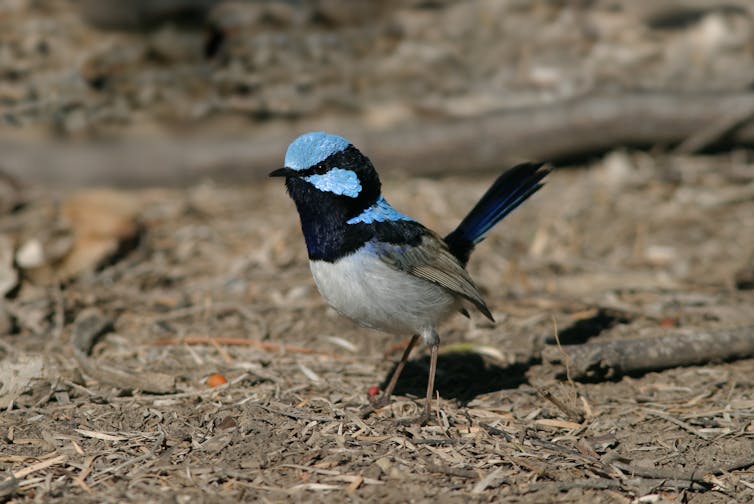
Rural landscapes are changing in southern Australia. Thanks to landholders, community volunteers and Landcare groups, farms are increasingly home to corridors of trees and shrubs along creeks, and paddocks bordered by trees.
Our research, published today, shows these efforts to revegetate farmland has made an important difference for woodland birds.
We surveyed and compared bird communities in farm landscapes with differing amounts of tree cover. We found when the amount of revegetation in open farmland increased, the number of woodland bird species did, too. For example, an increase in revegetation from 1% to 10% of the landscape doubled the number of woodland bird species.
This is important, because populations of woodland birds have been steeply declining in southern Australia, with species such as the southern whiteface, brown treecreeper and white-browed babbler now of conservation concern. The collective efforts of landholders can help reverse these declines by attracting species back into otherwise-cleared farmland.
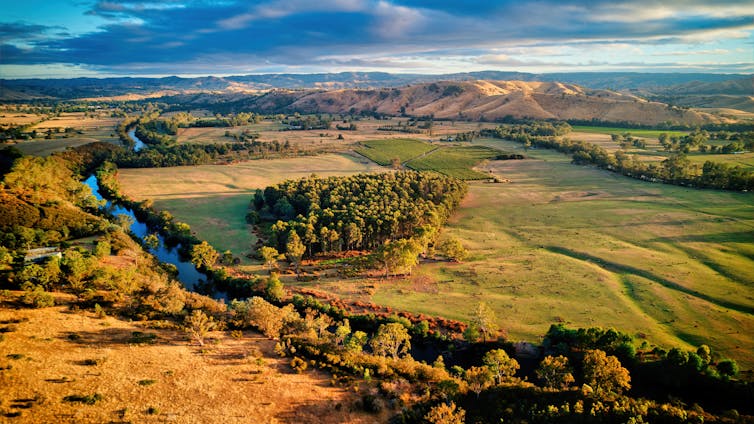
Restoring Habitat For Woodland Birds
Look closely among native vegetation on farmland and you’ll find an array of birdlife, such as flame robins and superb fairy-wrens foraging for insects on the ground, and striated pardalotes and yellow thornbills feeding in canopy foliage.
Yet extensive habitat destruction, replaced by vast areas of intensive farmland, have caused the number of once-abundant woodland birds to decline greatly. Indeed, in many rural districts, such as in western and northern Victoria, more than 90% of native wooded vegetation has been cleared.
To help address this issue, the Morrison government last year announced an additional A$32.1 million for biodiversity stewardship on agricultural land.
A key activity under the stewardship scheme is revegetation. Our research clarifies how revegetation can help in the recovery of woodland birds.
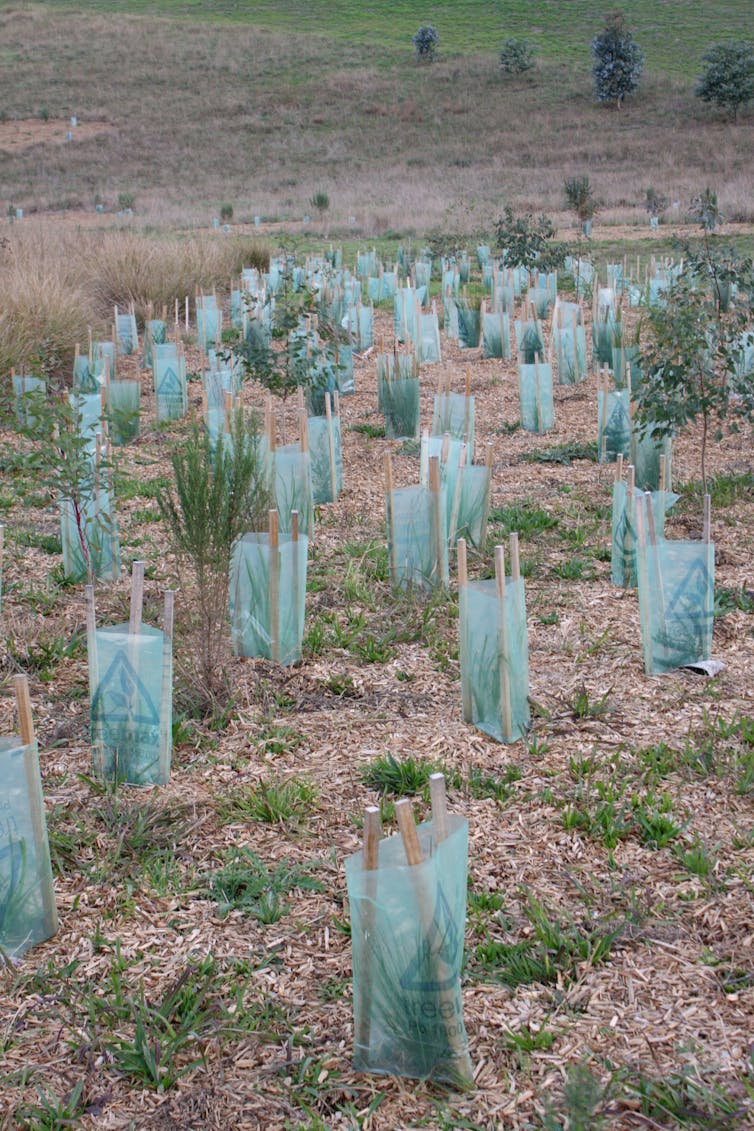
How Does Revegetation Benefit Birds?
Most research on the value of revegetation looks at individual “patches”. Our approach differed, as we sampled entire landscapes. Each landscape was 8 square kilometres in size, spanning one to three farms in south-western Victoria.
We identified three groups of landscapes, each having 1-18% tree cover. In one group, the tree cover was from revegetation. A second group comprised remnant native vegetation (natural vegetation that remains after the land was cleared). And a third had a mix of both revegetation and remnants.
We investigated important questions such as:
does the number of woodland species increase if more of the landscape is revegetated?
does revegetation attract new species back into the landscape, or simply provide more habitat for common species already present?
is the bird community in revegetated landscapes similar to that in remnant landscapes?
In answer to the first two questions, we found the number of bird species in a landscape did increase with increasing wooded cover.
For example, in landscapes with only 1% revegetation cover, most birds were open-country species such as galah, red-rumped parrot and willie wagtail, with only 11 woodland species on average. On the other hand, landscapes with 15% revegetation cover had 25 woodland species, on average, as part of the bird community.
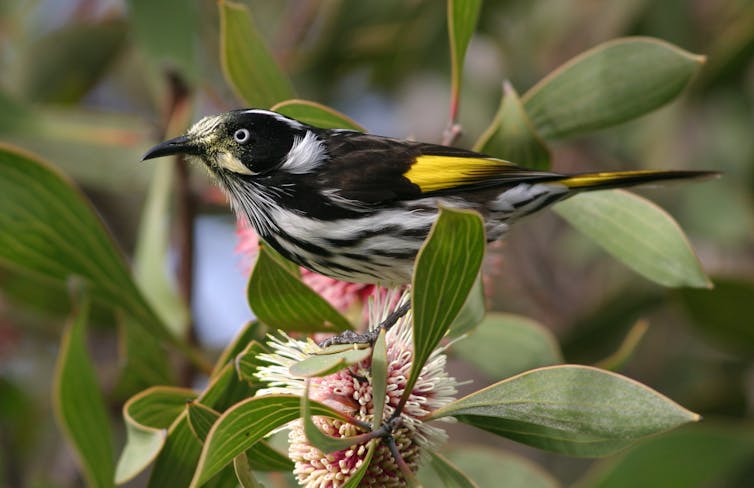
In response to the third question, we found that revegetated landscapes and those with remnant native vegetation don’t offer the same benefits. For a given amount of wooded vegetation, revegetated landscapes had fewer species in total and supported different types of woodland species.
For example, revegetation favours birds that forage in shrubby areas, such as the New Holland honeyeater and brown thornbill.
In contrast, those that depend on older trees were less likely to be found in revegetated landscapes. This includes the white-throated treecreeper and varied sitella which forage on tree trunks and large branches, and the spotted pardalote and white-naped honeyeater that feed within canopy foliage.

Where Will Revegetation Be Most Effective?
Our research shows revegetation has greatest value when it’s interspersed among remnant vegetation.
These mixed landscapes have similar numbers and types of woodland birds to the remnant landscapes, and provide complementary resources for feeding, nesting and refuge.
We also found individual patches of revegetation have the greatest value for birds when they include a diverse range of trees and shrubs, are close to or connected with native vegetation, and are older (meaning the plants have had longer to grow).
Another valuable feature for birds is scattered trees. These veteran trees act as stepping stones that help birds move, and provide foraging and nesting habitat for species such as the brown treecreeper, laughing kookaburra and eastern rosella.

Working Together
These results are encouraging, but there’s a long way to go to restore farmland environments. At least 11 of the 60 woodland species recorded in the study weren’t detected in revegetated landscapes, such as sacred kingfisher and black-chinned honeyeater. Others, such as jacky winter and eastern yellow robin were rare.
Increasing wooded vegetation to cover at least 10-30% of farmland is an important long-term goal to ensure sufficient habitat to sustain healthy populations of many species.
Of course, it’s not just for woodland birds – revegetating farms has a number of benefits. Planting along creeks helps stabilise stream banks and improve aquatic environments, trees store more carbon as they grow and age, and tree lines (shelterbelts) and shade benefit livestock and farm production.
In this United Nations Decade of Ecosystem Restoration, the actions we take now will benefit the lives of future generations.![]()
Andrew Bennett, Professor of Ecology, La Trobe University; Angie Haslem, Research Fellow, La Trobe University; Greg Holland, Associate Research Fellow, La Trobe University; Jim Radford, Principal Research Fellow, Research Centre for Future Landscapes, La Trobe University, and Rohan Clarke, Director, Monash Drone Discovery Platform, and Senior Lecturer in Ecology, Monash University
This article is republished from The Conversation under a Creative Commons license. Read the original article.
Climate change, mental health services, a better education system: what marginalised young people told us needs to be fixed

In youth policy and service delivery the idea of youth voice and participation is an uncontested “good thing”. But which youth voices? Who is heard and who is left out?
Our recent research in Melbourne’s inner northern suburbs and in the Geelong region has grappled with this question.
We have interviewed more than 80 young people since the start of the pandemic, in an effort to better understand the concerns of many disengaged, marginalised and disadvantaged young people in these areas.
We wanted to find out:
what challenges have they faced?
why do some young people seem to be able to get a say, while others don’t?
how can these young people become active stakeholders in their own futures?
what might change these dynamics?
Crucially, we asked young people to share their views in a format they felt comfortable with – by speaking directly to their webcams or phone cameras. Common themes that emerged included:
the need for secure work now and in the future
the need for better mental health services
a sense of pressure around school
a sense of not being heard
concern about climate change and the future of the planet.
What We Did
Many of the young people we heard from live with health and well-being challenges, neuro-diversity, and disengagement from traditional education, training and employment pathways. Financial struggles were common.
We asked young people to speak directly to their communities, and to a wider audience by filming their contribution on their camera phone or on a webcam. This allowed for a more natural flow of ideas from our interviewees. We published many of the videos on YouTube and Instagram.
Our generous interviewees spoke openly about the connections between their health and well-being, and the hopes, aspirations and anxieties they feel about the future – around education, work, relationships, and the planet.
What Young People Told Us
Take, for example, Ruby, aged 16. She lives with her family in Geelong, is looking for work, and studies Victorian Certificate of Applied Learning (an alternative to Year 11 and 12 at school) at her local TAFE. She told us:
[…] they kind of like just say, to people that have anxiety or depression, to like, ‘just breathe’. And I think for a lot of us that just doesn’t work. I think we just need some better listeners and I think we need some people who genuinely care.
Emilie, aged 24, lives in a sharehouse in Geelong. She studies social work and is uncertain about the future.
I want to be hopeful for the future, but honestly, I don’t know if I exactly am. In some ways, I feel that the government focuses on what the voters are gonna want to get them in for the next election.
Ruth, who was in Year 12 and living in the inner Melbourne suburb of Fitzroy, spoke about her life and her hopes for the future:
Dickheads in politics – less of them please.
I’d like to be in a relationship with someone who makes me really happy. Who treats me in a really genuinely wonderful way. And who brings me joy. And maybe cake as well.
During 2020, Astrid, now 20 years old, was living in social housing in Fitzroy with her mum and her kitten. She faces a number of challenges due to her dyslexia. She told us:
I hope, my biggest hope is that they figure out how to deal with climate change. Oh, no, I take that back. They know how to deal with climate change. I hope that they do it.
I also hope that the people who are running the community make note of the fact that young people want more involvement in it. And a place where they feel that they can be themselves.
Why Do Some Young People Seem To Be On The Margins?
Too often, the youth voices highlighted in public discourse and media narratives are the well-heeled, often privately educated beneficiaries of a system that serves wealthy people well while excluding those living with poverty or disability.
In an essay titled Can the Subaltern Speak? Indian scholar Gayatri Chakravorty Spivak explores the legacies of colonialism in “postcolonial” states (such as India) and “settler colonies” (such as Australia), as well as the forms of disadvantage experienced by indigeneous peoples in these contexts.
The “subaltern” groups are those people facing often multiple forms of disadvantage, who are denied access to processes that shape their oppression. They have no voice.
Our discussion with these young, marginalised people harks back to these ideas, and calls for close consideration of what young people from the margins demand: “better listeners” among the adults who shape their lives, and a reason to hope for the future.
As young Swedish climate activist Greta Thunberg put it:
We can no longer let the people in power decide what hope is. Hope is not blah, blah, blah. Hope is telling the truth. Hope is taking action. And hope always comes from the people.
Peter Kelly, Professor of Education, Deakin University; James Goring, Research Fellow, Deakin University, and Seth Brown, Lecturer in Education, RMIT University
This article is republished from The Conversation under a Creative Commons license. Read the original article.
Do you toss biodegradable plastic in the compost bin? Here’s why it might not break down
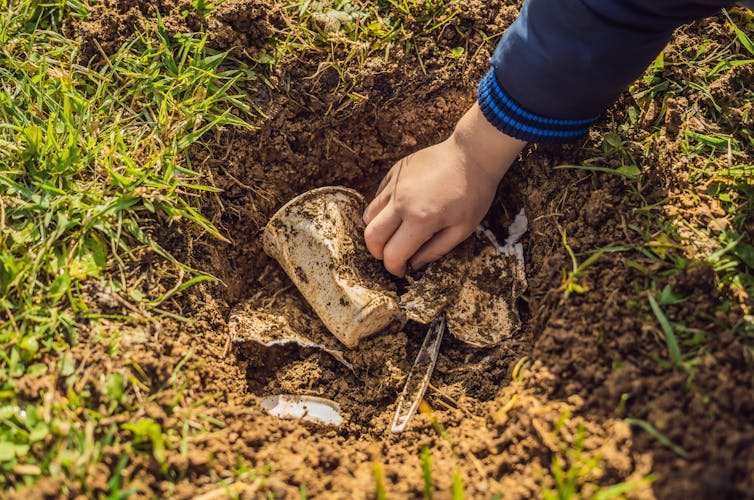
Over one-fifth of all plastic produced worldwide is tossed into uncontrolled dumpsites, burned in open pits or leaked into the environment. In Australia, 1.1 million tonnes of plastic is placed in the market, yet just 16% (179,000 tonnes) is recovered.
To deal with this mounting issue, the Morrison government last week announced A$60 million to fund plastic recycling technologies. The goal is to boost plastic packaging recycling from 16% to 70% by 2025.
It comes after 176 countries, including Australia, last month endorsed a United Nation’s resolution to establish a legally binding treaty by 2024 to end plastic pollution.
This is a good start – more effective recycling and recovery of plastics will go a long way to solve the problem.
But some plastics, particularly agricultural plastics and heavily contaminated packaging, will remain difficult to recycle despite these new efforts. These plastics will end up being burnt or in landfill, or worse, leaking into the environment.
“Biodegradable” plastic is often touted as an environmentally friendly alternative. But depending on the type of plastic, this label can be very misleading and can lead environmentally conscious consumers astray.
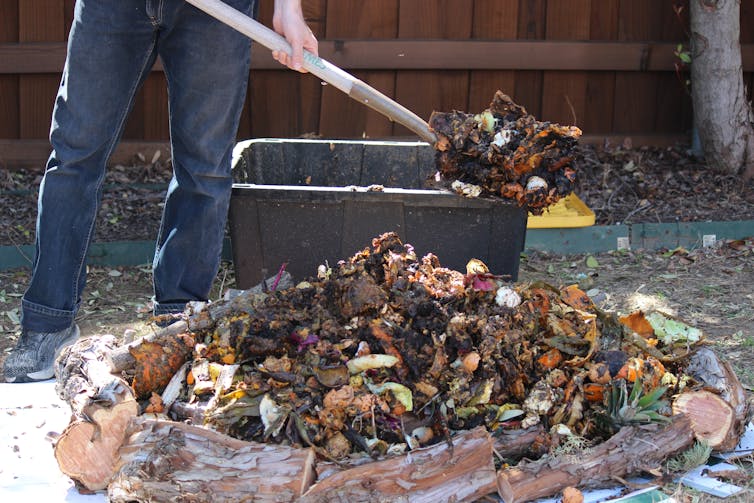
What Are Biodegradable Plastics?
Biodegradable plastics are those that can completely break down in the environment, and are a source of carbon for microbes (such as bacteria).
These microbes degrade plastics into much smaller fragments before consuming them, which makes new biomass (cell growth), and releases water, carbon dioxide and, when oxygen is limited, methane.
However, this blanket description encompasses a wide range of products that biodegrade at very different rates and in different environments.
For example, some – such as the bacterially produced “polyhydroxyalkanoates”, used in, for instance, single-use cutlery – will fully biodegrade in natural environments such as seawater, soil and landfill within a few months to years.
Others, like polylactic acid used in coffee cup lids, require more engineered environments to break down, such as an industrial composting environment which has higher temperatures and is rich in microbes.
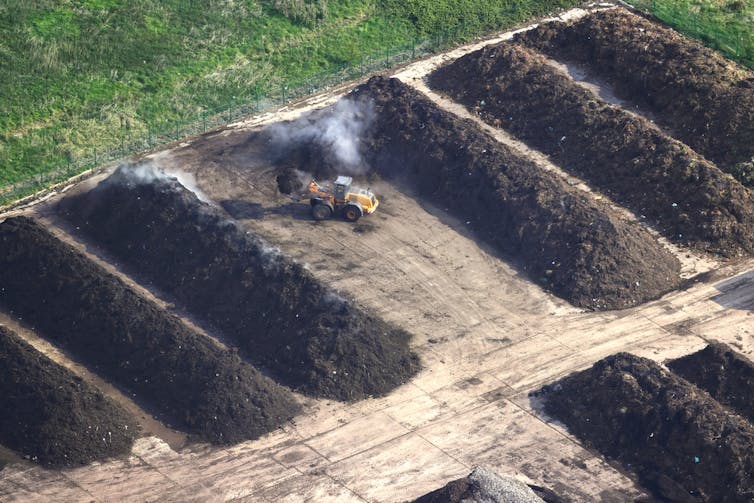
So while consumers may expect that “compostable” plastics will degrade quickly in their backyard compost bins, this may not be the case.
To add to this confusion, biodegradable plastics actually don’t have to be “bio-based”. This means they don’t have to be derived from renewable carbon sources such as plants.
Some, such as polycaprolactone used in controlled release drug delivery, are synthesised from petroleum-derived materials.
What’s more, bio-based plastics may not always be biodegradable. One example is polyethylene – the largest family of polymers produced globally, widely used in flexible film packaging such as plastic bags. It can be produced from ethanol that comes from cane sugar.
In all material respects, a plastic like this is identical to petroleum-derived polyethylene, including its inability to break down.
Confusion And Greenwashing
In 2018, we conducted a survey of 2,518 Australians, representative of the Australian population, with all demographics collected closely matching census data.
We found while there’s a lot of enthusiasm for biodegradable alternatives, there’s also a great deal of confusion over what constitutes a biodegradable plastic.
Consumers have also become increasingly concerned over the practice of “greenwashing” – marketing a product as biodegradable when, in reality, its rate of degradation and the environment in which it will decompose don’t match what the label implies.
So-called “oxo-degradable plastics” are an excellent example of why the issue is so complex and confusing. These plastics are commonly used in films, such as agricultural mulches, packaging and wrapping materials.
Chemically speaking, oxo-degradable plastics are often made from polyethylene or polypropylene, mixed with molecules that initiate degradation such as “metal stearates”.
These initiators cause these plastics to oxidise and break down under the influence of ultraviolet light, and/or heat and oxygen, eventually fragmenting into smaller pieces.
There is, however, some controversy surrounding their fate. Research indicates they can remain as microplastics for long periods, particularly if they’re buried or otherwise protected from the sun.
Indeed, evidence suggests oxo-degradable plastics aren’t suited for long-term reuse, recycling or even composting. For these reasons, oxo-degradable plastics have now been banned by the European Commission, through the European Single-Use Plastics Directive.
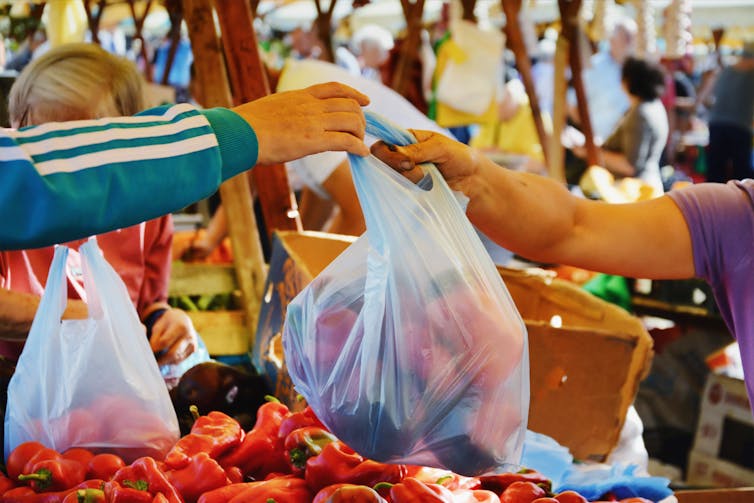
We Need Better Standards And Labels
The new government funding for plastic recycling technologies targets waste that’s notoriously difficult to deal with, such as bread bags and chip packets.
However, this still leaves a substantial stream of waste that’s even more challenging to address. This includes agricultural waste dispersed in the environment such as mulch films, which can be difficult to collect for recycling.
Biodegradable and bio-based plastics have great potential to replace such problematic plastics. But, as they continue to gain market share, the confusion and complexity around biodegradable plastics must be addressed.
For starters, a better understanding of how they impact the environment is needed. It’s also crucial to align consumer expectations with those of manufacturers and producers, and to ensure these plastics are appropriately disposed of and managed at the end of their life.
This is what we’re investigating as part of a new training centre for bioplastics and biocomposites. Our goal over the next five years is to improve knowledge for developing better standards and regulations for certifying, labelling and marketing “green” plastic products.
And with that comes greater opportunity for better education so both plastic producers and people who throw them away really understand these materials. We should be familiar with their strengths, weaknesses and how to dispose of them so we can minimise the damage they inflict on the environment.![]()
Bronwyn Laycock, Professor of Chemical Engineering, The University of Queensland; Paul Lant, Professor of Chemical Engineering, The University of Queensland, and Steven Pratt, Associate Professor, The University of Queensland
This article is republished from The Conversation under a Creative Commons license. Read the original article.
Australia plans to be a big green hydrogen exporter to Asian markets – but they don’t need it
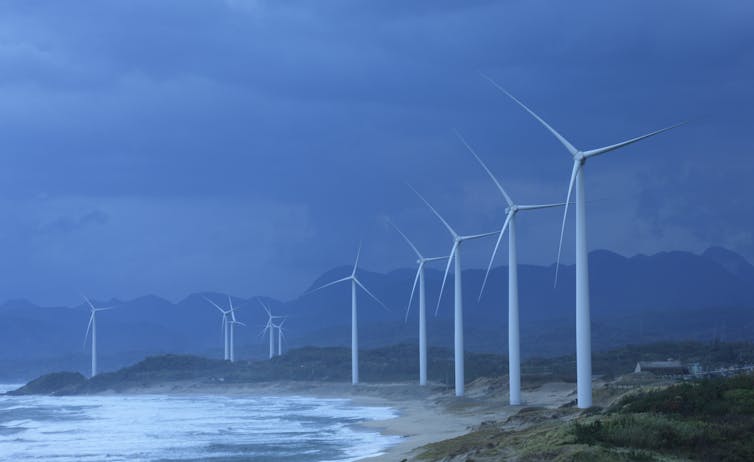
In its latest budget, the federal government has promised hundreds of millions of dollars to expand Australia’s green hydrogen capabilities.
Green hydrogen is made by electrolysis of water, powered by solar and wind electricity, and it’s key to the government’s “technology not taxes” approach to meeting its climate target of net-zero emissions by 2050.
The government aims to create a major green hydrogen export industry, particularly to Japan, for which Australia signed an export deal in January. But as our latest research suggests, the likely scale may well be overstated.
We show Japan has more than enough solar and wind energy to be self-sufficient in energy, and does not need to import either fossil fuels or Australian green hydrogen. Indeed, Australia as a “renewable energy superpower” is far from a sure thing.
Japan Has Plenty Of Sun And Wind
“Green” hydrogen could be used to generate electricity and also to form chemicals such as ammonia and synthetic jet fuel.
In the federal budget, hydrogen fuel is among the low-emissions technologies that will share over A$1 billion. This includes $300 million for producing clean hydrogen, along with liquefied natural gas, in Darwin.
Australia plans to be a top-three exporter of hydrogen to Asian markets by 2030. The idea is that green hydrogen will help replace Australia’s declining coal and gas exports as countries make good on their promises to bring national greenhouse gas emissions down to zero.
Underlying much of this discussion is the notion that crowded jurisdictions such as Japan and Europe have insufficient solar and wind resources of their own, which is wrong.
Our recent study investigated the future role of renewable energy in Japan, and we modelled a hypothetical scenario where Japan had a 100% renewable electricity system.
We found Japan has 14 times more solar and offshore wind energy potential than needed to supply all its current electricity demand.
Electrifying nearly everything – transport, heating, industry and aviation – doubles or triples demand for electricity, but this still leaves Japan with five to seven times more solar and offshore wind energy potential than it needs.
After building enough solar and wind farms, Japan can get rid of fossil fuel imports without increasing energy costs. This removes three quarters of its greenhouse gas emissions and eliminates the security risks of depending on foreign energy suppliers.
Japanese Energy Is Cheaper, Too
Our study comprised an hourly energy balance model, using representative demand data and 40 years of historical hourly solar and wind meteorological data.
We found that the levelized cost of electricity from an energy system in Japan dominated by solar and wind is US$86-110 (A$115-147) per megawatt hour. Levelized cost is the standard method of costing electricity generation over a generator’s lifetime.
This is similar to Japan’s 2020 average spot market prices (US$102 per megawatt hour) – and it’s about half the cost of electricity generated in Japan using imported green hydrogen from Australia.
So why is it much more expensive to produce electricity from imported Australian hydrogen, compared to local solar and wind?
Essentially, it’s because 70% of the energy is lost by converting Australian solar and wind energy into hydrogen compounds, shipping it to Japan, and converting the hydrogen back into electricity or into motive power in cars.
Thus, hydrogen as an energy source is unlikely to develop into a major export industry.
What about exporting sustainable chemicals? Hydrogen atoms are required to produce synthetic aviation fuel, ammonia, plastics and other chemicals.
The main elements needed for such products are hydrogen, carbon, oxygen and nitrogen, all of which are available everywhere in unlimited quantities from water and air. Japan can readily make its own sustainable chemicals rather than importing hydrogen or finished chemicals.
However, the Japanese cost advantage is smaller for sustainable chemicals than energy, and so there may be export opportunities here.
What About Other Countries?
While large-scale fossil fuel deposits are found in only a few countries, most countries have plenty of solar and/or wind. The future decarbonised world will have far less trade in energy, because most countries can harvest it from their own resources.
Solar and wind comprise three quarters of the new power stations installed around the world each year because they produce cheaper energy than fossil fuels. About 250 gigawatts per annum of solar and wind is being installed globally, doubling every three to four years
Densely populated coastal areas – including Japan, Korea, Taiwan, the Philippines, Vietnam and northern Europe – have vast offshore wind resources to complement onshore solar and wind.
What’s more, densely populated Indonesia has sufficient calm tropical seas to power the entire world using floating solar panels.
Will international markets need Australian energy for when the sun isn’t shining, nor the wind blowing? Probably not. Most countries have the resources to reliably and continuously meet energy demand without importing Australian products.
This is because most countries, including Japan (and, for that matter, Australia) have vast capacity for off-river pumped hydro, which can store energy to balance out solar and wind at times when they’re not available. Batteries and stronger internal transmission networks also help.
Australia’s Prospects
Getting rid of fossil fuels and electrifying nearly everything with renewables reduces greenhouse emissions by three quarters, and lowers the threat of extreme climate change. It eliminates security risks from relying on other countries for energy, as illustrated by Europe’s dependence on Russian gas.
It will also bring down energy costs, and eliminates oil-related warfare, oil spills, cooling water use, open cut coal mines, ash dumps, coal mine fires, gas fracking and urban air pollution.
Australia’s coal and gas exports must decline to zero before mid-century to meet the global climate target, and solar and wind are doing most of the heavy lifting through renewable electrification of nearly everything.
But as our research makes clear, while Australian solar and wind is better than most, it may not be enough to overcome the extra costs and losses from exporting hydrogen for energy supply or chemical production.
One really large prospect for export of Australian renewable energy is export of iron, in which hydrogen produced from solar and wind might replace coking coal.
This allows Australia to export iron rather than iron ore. In this case the raw material (iron ore), solar and wind are all found in the same place: in the Pilbara.
While hydrogen will certainly be important in the future global clean economy, it will primarily be for chemicals rather than energy production. It’s important to keep perspective: electricity from solar and wind will continue to be far more important.![]()
Andrew Blakers, Professor of Engineering, Australian National University and Cheng Cheng, Research Officer, Australian National University
This article is republished from The Conversation under a Creative Commons license. Read the original article.
Dolphins, turtles and birds don’t have to die in fishing gear – skilled fishers can avoid it
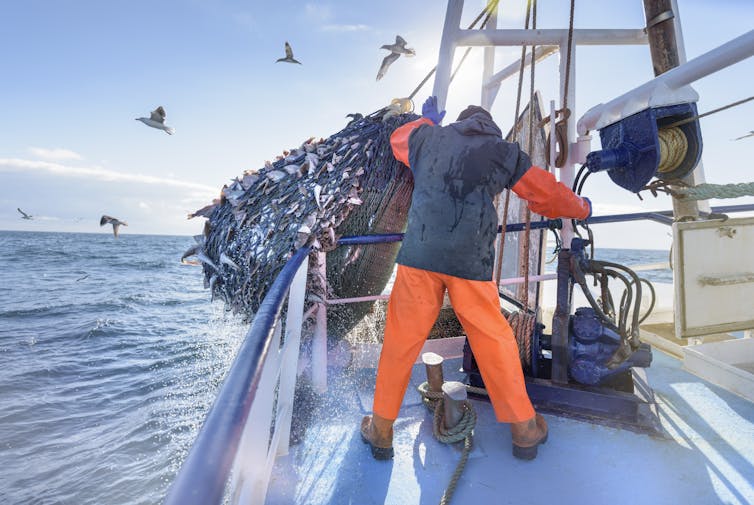
In 1987, a biologist went undercover on a commercial tuna fishing vessel. One video he took made headlines around the world: hundreds of dolphins encircled in purse seine nets, drowning in distress.
Before that, few people had given much thought to bycatch – the fish and marine animals caught when trying to catch something else. It was out of sight, out of mind. But now, everyone could see the shocking footage.
In the decades since, some of the most confronting bycatch issues have been solved. Even so, bycatch remains one of the most difficult obstacles to making the world’s seafood more sustainable.
So if better nets and better rules aren’t the full answer, what is? Our new research suggests part of it is the human factor. The more skilled fishers are, the more likely they are to avoid accidental bycatch.

We Need More Than Technology And Top-Down Solutions
So far, the solutions for bycatch have tended to be technical or regulatory. Think of modified fishing gear so non-target animals can escape, or closing high bycatch areas to fishing during certain seasons or when bycatch exceeds a threshold.
While they can work, these approaches are often expensive, especially for small or lower-value fisheries. They also require increased monitoring and enforcement to ensure fishing fleets follow the rules.
Top-down regulatory approaches are often met with stubborn resistance from fishers. Commercial fishing boat operators may feel they’re being targeted by experts who don’t understand the challenges they face.
Technology and regulation have so far failed to tackle the most challenging bycatch problems.
It’s proven very difficult, for instance, for trawlers to stop catching endangered sharks, rays and sea snakes at unsustainable rates – even though the same trawlers now sport clever turtle excluder devices which have slashed sea turtle deaths in northern Australia’s prawn fishery.
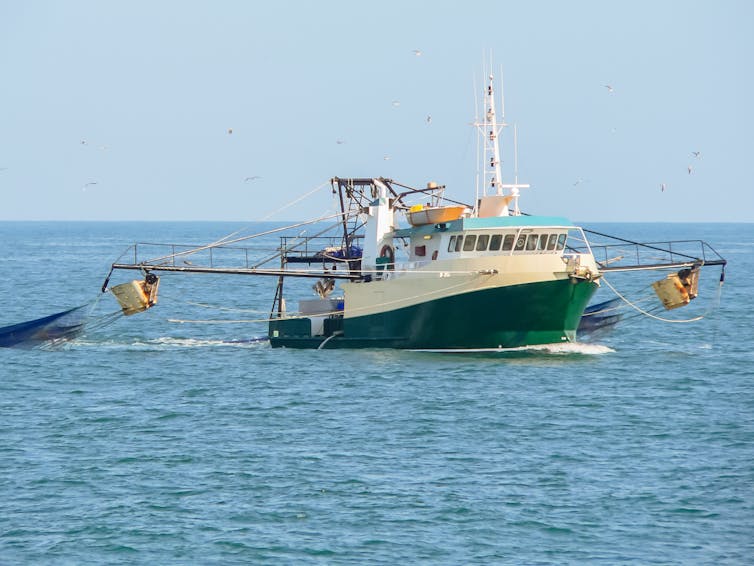
Or consider gillnets, which in Australia continue to catch and kill endangered sawfish, dugongs, and sharks. When fishers change techniques to avoid catching one type of bycatch, they often find bycatch of other species increases.
Every now and again, bycatch will resurface in the public mind. You might see grotesque images of lovable sea animals mangled in nets spreading through social media channels as part of a new bycatch campaign.
Progress does exist – but it’s slow, expensive and risks pushback. The prevailing industry attitude is that bycatch should be reduced where possible, but some is inevitable.
How Boosting Fishers’ Skills Could Cut Bycatch Further
Many fisheries managers intuitively understand the importance of the human factor in managing environmental issues, such as bycatch. They know the vessels and captains in their fleet. And they know most compliance issues can usually be traced back to a small number of problem vessels.
We put these assumptions to the test in our new research into Australian fisheries, and found it was true.
We found a clear pattern across different locations and types of fishing gear, where specific fishers were able to maintain high target species catch with lower rates of bycatch. In short, skilled fishers can avoid catching dolphins, seabirds, sharks, and other bycatch species.

It was surprisingly difficult to test the managers’ assumptions with data. So how did we show this?
It’s well known that fishing skill varies. As a result, some fishers and boats are consistently more profitable. If fishers have variable skill in catching their target species, it follows they would have variable skill at avoiding bycatch species.
The pattern of varying skill had never been tested against bycatch rates. In part, that’s because we need a lot of data to isolate individual behaviour and skill from many other factors affecting bycatch. For instance, fishers often link high bycatch numbers to environmental factors, such as specific fishing grounds or breeding seasons.
While these factors do affect bycatch levels, we were able to draw out the effect of individual vessels by using robust data sets collected by scientific observers in five major commercial fishing sectors in Australia.
We found a clear signal in the data. Overall, individual vessels drove differences in bycatch rates more than fishing location, season, or year. In each of the five fisheries, we found high performance operators able to consistently achieve a high catch of target species and low bycatch, as well as low performers, who did the opposite. This holds even across fishing gear known for high bycatch globally, such as bottom trawls and gillnets.
We don’t know exactly what fishers are doing to avoid bycatch. Fishing “skill” is likely a mix of experience and knowledge of the environment, ability to effectively manage a crew, operate and maintain gear, and quickly respond to changing conditions at sea. These nuanced behaviours are not recorded in logbooks and are difficult to describe, which means we’ll have to work directly with fishers to really untangle the vessel effect.
Could We Upskill Our Fishers?
Now we know the skill of our fishers matters so much, we have an opportunity to drive bycatch even lower than thought possible. We can challenge the belief bycatch is an unavoidable part of fishing.
Harnessing the skills and knowledge of high-performance fishers can motivate behaviour change in ways more likely to succeed than top-down regulations or new technologies.
We can look at incentives to encourage skilled and experienced fishers to spread their knowledge and abilities. This would raise the bar for low-performing fishers, and help the industry avoid punishments from the actions of a few highly damaging boats.
If we work closely with high-performance fishers, we could see even more innovation in cutting bycatch, as well as other longstanding issues such as waste management and abandoned “ghost nets” which can keep killing for years.![]()
Leslie Roberson, Postdoctoral research fellow, The University of Queensland and Chris Wilcox, Senior Principal Research Scientist, CSIRO
This article is republished from The Conversation under a Creative Commons license. Read the original article.
Avalon Golf Course Bushcare Needs You
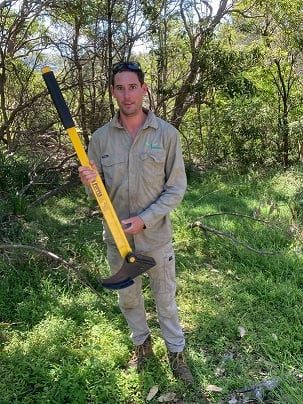
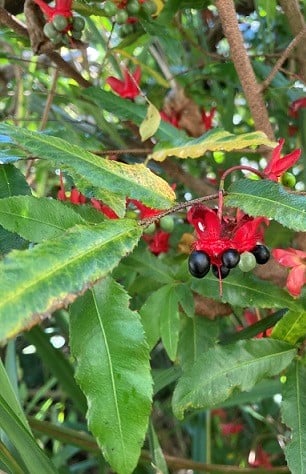
Pittwater Reserves: Histories + Notes + Others
A History Of The Campaign For Preservation Of The Warriewood Escarpment by David Palmer OAM and Angus Gordon OAM
Angophora Reserve - Angophora Reserve Flowers
Annie Wyatt Reserve - A Pictorial
Avalon's Village Green: Avalon Park Becomes Dunbar Park - Some History + Toongari Reserve and Catalpa Reserve
Bairne Walking Track Ku-Ring-Gai Chase NP by Kevin Murray
Bangalley Headland Bangalley Mid Winter
Banksias of Pittwater
Barrenjoey Boathouse In Governor Phillip Park Part Of Our Community For 75 Years: Photos From The Collection Of Russell Walton, Son Of Victor Walton
Barrenjoey Headland: Spring flowers
Barrenjoey Headland after fire
Bayview Baths
Bayview Wetlands
Beeby Park
Bilgola Beach
Botham Beach by Barbara Davies
Bungan Beach Bush Care
Careel Bay Saltmarsh plants
Careel Bay Birds
Careel Bay Clean Up day
Careel Bay Playing Fields History and Current
Careel Creek
Careel Creek - If you rebuild it they will come
Centre trail in Ku-ring-gai Chase National Park
Chiltern Track- Ingleside by Marita Macrae
Clareville Beach
Clareville/Long Beach Reserve + some History
Coastal Stability Series: Cabbage Tree Bay To Barrenjoey To Observation Point by John Illingsworth, Pittwater Pathways, and Dr. Peter Mitchell OAM
Cowan Track by Kevin Murray
Curl Curl To Freshwater Walk: October 2021 by Kevin Murray and Joe Mills
Currawong and Palm Beach Views - Winter 2018
Currawong-Mackerel-The Basin A Stroll In Early November 2021 - photos by Selena Griffith
Currawong State Park Currawong Beach + Currawong Creek
Deep Creek To Warriewood Walk photos by Joe Mills
Drone Gives A New View On Coastal Stability; Bungan: Bungan Headland To Newport Beach + Bilgola: North Newport Beach To Avalon + Bangalley: Avalon Headland To Palm Beach
Dunbar Park - Some History + Toongari Reserve and Catalpa Reserve
Dundundra Falls Reserve: August 2020 photos by Selena Griffith - Listed in 1935
Elsie Track, Scotland Island
Elvina Track in Late Winter 2019 by Penny Gleen
Elvina Bay Walking Track: Spring 2020 photos by Joe Mills
Elvina Bay-Lovett Bay Loop Spring 2020 by Kevin Murray and Joe Mills
Fern Creek - Ingleside Escarpment To Warriewood Walk + Some History photos by Joe Mills
Iluka Park, Woorak Park, Pittwater Park, Sand Point Reserve, Snapperman Beach Reserve - Palm Beach: Some History
Ingleside
Ingleside Wildflowers August 2013
Irrawong - Ingleside Escarpment Trail Walk Spring 2020 photos by Joe Mills
Irrawong - Mullet Creek Restoration
Katandra Bushland Sanctuary - Ingleside
Lucinda Park, Palm Beach: Some History + 2022 Pictures
McCarrs Creek
McCarr's Creek to Church Point to Bayview Waterfront Path
McKay Reserve
Mona Vale Beach - A Stroll Along, Spring 2021 by Kevin Murray
Mona Vale Headland, Basin and Beach Restoration
Mount Murray Anderson Walking Track by Kevin Murray and Joe Mills
Mullet Creek
Narrabeen Creek
Narrabeen Lagoon Catchment: Past Notes Present Photos by Margaret Woods
Narrabeen Lagoon State Park
Narrabeen Lagoon State Park Expansion
Narrabeen Rockshelf Aquatic Reserve
Nerang Track, Terrey Hills by Bea Pierce
Newport Bushlink - the Crown of the Hill Linked Reserves
Newport Community Garden - Woolcott Reserve
Newport to Bilgola Bushlink 'From The Crown To The Sea' Paths: Founded In 1956 - A Tip and Quarry Becomes Green Space For People and Wildlife
Pittwater spring: waterbirds return to Wetlands
Pittwater's Lone Rangers - 120 Years of Ku-Ring-Gai Chase and the Men of Flowers Inspired by Eccleston Du Faur
Pittwater's Parallel Estuary - The Cowan 'Creek
Riddle Reserve, Bayview
Salvation Loop Trail, Ku-Ring-Gai Chase National Park- Spring 2020 - by Selena Griffith
Stapleton Reserve
Stapleton Park Reserve In Spring 2020: An Urban Ark Of Plants Found Nowhere Else
The Chiltern Track
The Resolute Beach Loop Track At West Head In Ku-Ring-Gai Chase National Park by Kevin Murray
Towlers Bay Walking Track by Joe Mills
Trafalgar Square, Newport: A 'Commons' Park Dedicated By Private Landholders - The Green Heart Of This Community
Turimetta Beach Reserve by Joe Mills, Bea Pierce and Lesley
Turimetta Beach Reserve: Old & New Images (by Kevin Murray) + Some History
Turimetta Headland
Warriewood Wetlands and Irrawong Reserve
Whale Beach Ocean Reserve: 'The Strand' - Some History On Another Great Protected Pittwater Reserve
Winji Jimmi - Water Maze

New Shorebirds WingThing For Youngsters Available To Download
A Shorebirds WingThing educational brochure for kids (A5) helps children learn about shorebirds, their life and journey. The 2021 revised brochure version was published in February 2021 and is available now. You can download a file copy here.
If you would like a free print copy of this brochure, please send a self-addressed envelope with A$1.10 postage (or larger if you would like it unfolded) affixed to: BirdLife Australia, Shorebird WingThing Request, 2-05Shorebird WingThing/60 Leicester St, Carlton VIC 3053.

 Shorebird Identification Booklet
Shorebird Identification Booklet
The Migratory Shorebird Program has just released the third edition of its hugely popular Shorebird Identification Booklet. The team has thoroughly revised and updated this pocket-sized companion for all shorebird counters and interested birders, with lots of useful information on our most common shorebirds, key identification features, sighting distribution maps and short articles on some of BirdLife’s shorebird activities.
The booklet can be downloaded here in PDF file format: http://www.birdlife.org.au/documents/Shorebird_ID_Booklet_V3.pdf
Paper copies can be ordered as well, see http://www.birdlife.org.au/projects/shorebirds-2020/counter-resources for details.
Download BirdLife Australia's children’s education kit to help them learn more about our wading birdlife
Shorebirds are a group of wading birds that can be found feeding on swamps, tidal mudflats, estuaries, beaches and open country. For many people, shorebirds are just those brown birds feeding a long way out on the mud but they are actually a remarkably diverse collection of birds including stilts, sandpipers, snipe, curlews, godwits, plovers and oystercatchers. Each species is superbly adapted to suit its preferred habitat. The Red-necked Stint is as small as a sparrow, with relatively short legs and bill that it pecks food from the surface of the mud with, whereas the Eastern Curlew is over two feet long with a exceptionally long legs and a massively curved beak that it thrusts deep down into the mud to pull out crabs, worms and other creatures hidden below the surface.
Some shorebirds are fairly drab in plumage, especially when they are visiting Australia in their non-breeding season, but when they migrate to their Arctic nesting grounds, they develop a vibrant flush of bright colours to attract a mate. We have 37 types of shorebirds that annually migrate to Australia on some of the most lengthy and arduous journeys in the animal kingdom, but there are also 18 shorebirds that call Australia home all year round.
What all our shorebirds have in common—be they large or small, seasoned traveller or homebody, brightly coloured or in muted tones—is that each species needs adequate safe areas where they can successfully feed and breed.
The National Shorebird Monitoring Program is managed and supported by BirdLife Australia.
This project is supported by Glenelg Hopkins Catchment Management Authority and Hunter Local Land Services through funding from the Australian Government’s National Landcare Program. Funding from Helen Macpherson Smith Trust and Port Phillip Bay Fund is acknowledged.
The National Shorebird Monitoring Program is made possible with the help of over 1,600 volunteers working in coastal and inland habitats all over Australia.
The National Shorebird Monitoring program (started as the Shorebirds 2020 project initiated to re-invigorate monitoring around Australia) is raising awareness of how incredible shorebirds are, and actively engaging the community to participate in gathering information needed to conserve shorebirds.
In the short term, the destruction of tidal ecosystems will need to be stopped, and our program is designed to strengthen the case for protecting these important habitats.
In the long term, there will be a need to mitigate against the likely effects of climate change on a species that travels across the entire range of latitudes where impacts are likely.
The identification and protection of critical areas for shorebirds will need to continue in order to guard against the potential threats associated with habitats in close proximity to nearly half the human population.
Here in Australia, the place where these birds grow up and spend most of their lives, continued monitoring is necessary to inform the best management practice to maintain shorebird populations.
BirdLife Australia believe that we can help secure a brighter future for these remarkable birds by educating stakeholders, gathering information on how and why shorebird populations are changing, and working to grow the community of people who care about shorebirds.
To find out more visit: http://www.birdlife.org.au/projects/shorebirds-2020/shorebirds-2020-program
Aussie Bread Tags Collection Points

Strategic Plan For Children And Young People 2022-2024
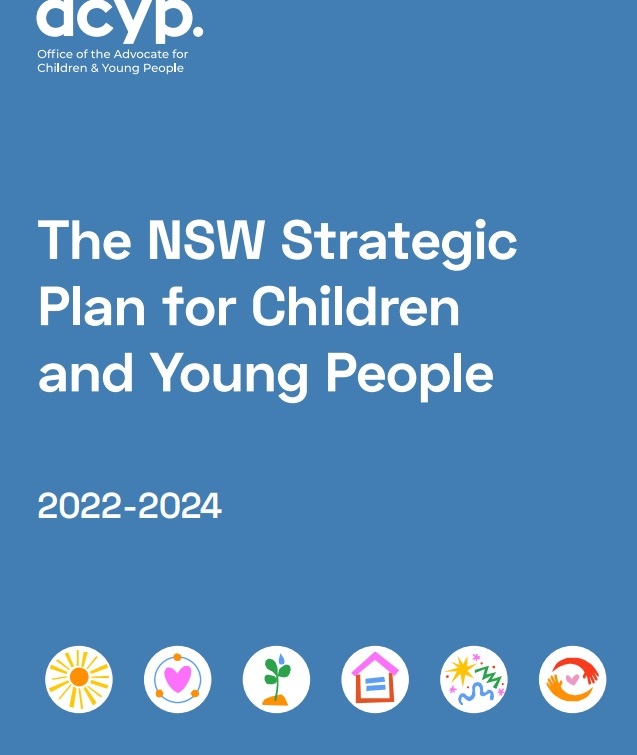
Joel Parkinson To Be Inducted In Hall Of Fame At 2022 Australian Surfing Awards
- 1999 WSL World Junior Champion
- 2000 WSL World Junior Champion
- 1999 Billabong Pro Jeffreys Bay WINNER
- 2002 Quiksilver Pro Gold Coast WINNER
- 2002 Rip Curl Cup Sunset Beach WINNER
- 2002 WORLD NUMBER 2
- 2004 Rip Curl Pro Bells Beach WINNER
- 2004 Boost Mobile Pro Trestles WINNER
- 2004 WORLD NUMBER 2
- 2006 Quiksilver Pro France WINNER
- 2008 Vans Triple Crown of Surfing WINNER
- 2008 Perfect Heat (20 out of 20 points) Billabong Pipeline Masters
- 2009 Quiksilver Pro Gold Coast WINNER
- 2009 Rip Curl Pro Bells Beach WINNER
- 2009 Billabong Pro Jeffreys Bay WINNER
- 2009 WORLD NUMBER 2
- 2011 Rip Curl Pro Bells Beach WINNER
- 2011 WORLD NUMBER 2
- 2012 Billabong Pipeline Masters WINNER
- 2012 WORLD CHAMPION
- 2013 Oakley Pro Bali WINNER
- 2020 RIVALS Season One WINNER
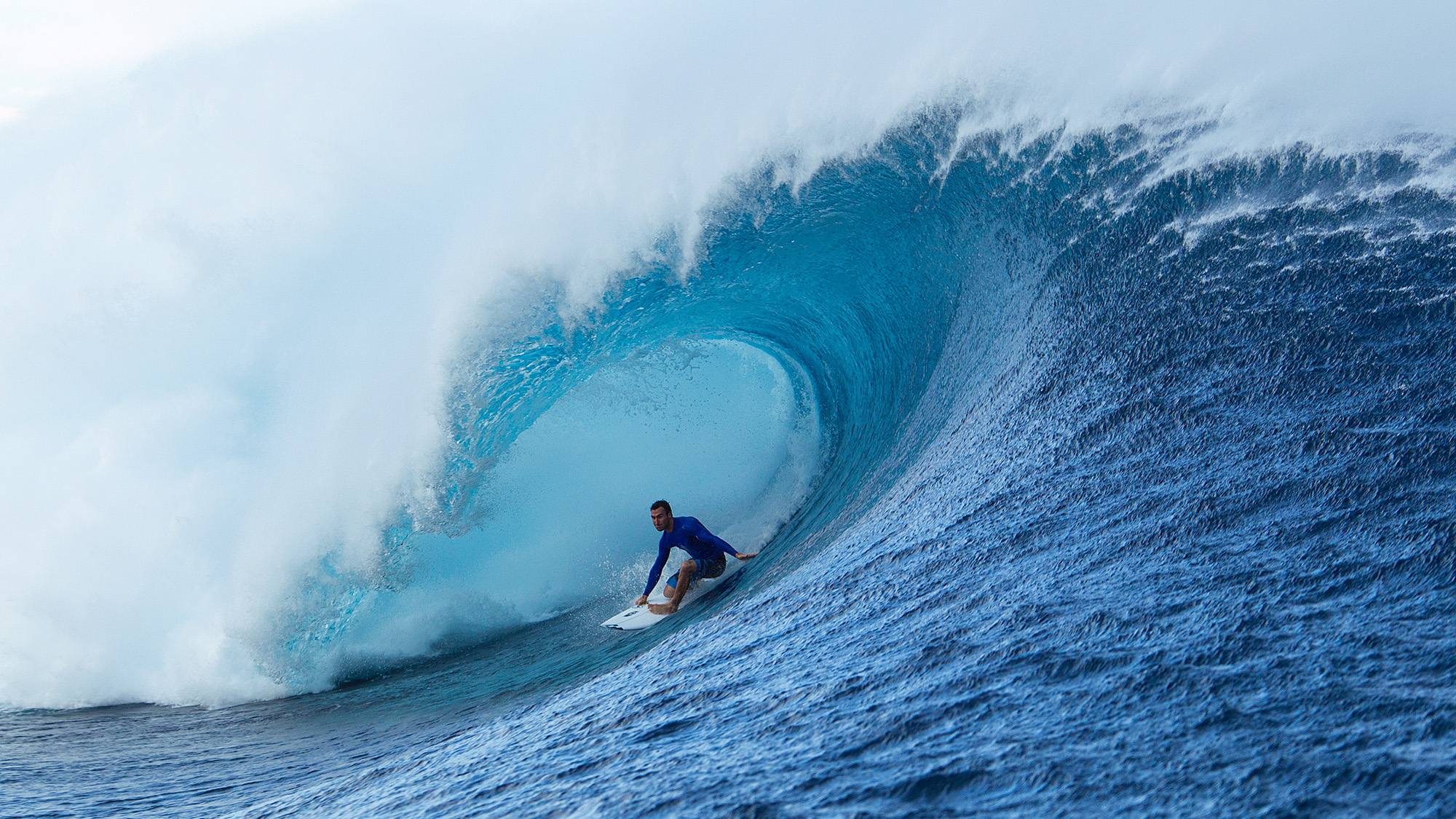
Guide to classics: the Tibetan Book of the Dead

Since it was first published in English in 1927, The Tibetan Book of the Dead has proved to be the most popular book on Tibetan Buddhism in the Western world. At present, there are at least 21 translations in multiple languages and formats. There are also multiple expert commentaries, ranging from scholarly discussions to Buddhist practice guides.
The Tibetan Book of the Dead is an exemplar of Tibetan literary prose and a compelling commentary on the universal experience of death and dying from a Buddhist perspective. A classic of medieval Buddhist literature, it contains vivid descriptions of the bardos or intermediary states between death and rebirth that are, like other medieval texts, often illustrated.
The most important thing to understand about The Tibetan Book of the Dead is that it is meant to be read aloud. This is not surprising when we consider that ancient texts from many cultures were meant to be recited. Reading silently was uncommon in the ancient world.
Not only is The Tibetan Book of the Dead meant to be read aloud, it is meant to be read to the dead. In other words, corpses are the intended audience for the work, which makes it unique among the world’s literary classics. Its opening lines speak directly to the deceased:
O, Alas! Alas! Fortunate Child of Buddha Nature,
Do not be oppressed by the forces of ignorance and delusion!
But rise up now with resolve and courage!
Entranced by ignorance from beginningless time until now,
You have had more than enough time to sleep.
So do not slumber any longer, but strive after virtue with body, speech and mind!
In this opening passage, we encounter the book’s fundamental messages. The first and perhaps most important message is that all beings are, in their fundamental nature, no different to the Buddha – sublime and perfect. This means that we can all become enlightened, just as the Buddha was enlightened. The next message is that a subtle, pared-back form of consciousness remains alert in the corpse for some time after death, existing in what is known as a bardo, an intermediate state of existence between death and rebirth.
A bardo is a mind-state rather than a place, a transitional state that is neither here nor there, not of this life but also not of the next. Etymologically, the word bardo breaks down into “bar”, which translates as movement or flow, like a stream, and “do” which translates as a stepping stone or island in the stream.
The idea of an island of stillness within a stream of movement is profoundly important in the Buddhist teachings, because it points to the hidden profundity of present experience, to the immediacy that is being in the now, which can open us to a direct and intimate experience of what Tibetan Buddhists call our true nature, or Buddha Nature.

The Cycle Of Life
The final message of the lines quoted above is that physical death is not an ultimate end or oblivion. Indeed, it may be an opportunity. Even in the disembodied, post-mortem state of the bardo, there is still a chance for what Buddhists call Nirvana or liberation, which is freedom from the tyranny of cyclic existence.
Cyclic existence is birth, suffering, death, then rebirth into another life of suffering and death, on and on without end. Buddhists believe that we have all been trapped in this cycle of misery since the beginning of time and will remain trapped forever unless we do something about it.
The Tibetan Book of the Dead tells us what to do about it. It tells us how to achieve liberation in the moment of death and fulfil our potential as spiritually awakened beings, as Buddhas. This profoundly appealing promise is at the heart of Tibetan Buddhist beliefs about life and death.
Origins
As a book, The Tibetan Book of the Dead has a mystical origin story and a publication history unlike any other. According to Tibetan tradition it was created in the 8th century (around 750 CE) by Padmasambhava, a mystic and prophet from Oddiyana, in what is now far northern Pakistan, who established tantric Buddhism in the Tibetan Empire.
Padmasambhava did not write or compose the text, but rather spontaneously dictated it to Yeshe Tsogyal, a Tibetan princess, who was his most important disciple and the first Tibetan to achieve enlightenment. Yeshe Tsogyal is one of the few women in recorded history to be venerated as a fully awakened Buddha.

Padmasambhava told his exceptional disciple that the book’s message was not for that time, but for some future time, so Yeshe Tsogyal hid the text in a cave high on a mountain in central Tibet. Padmasambhava then prophesised that the text would be rediscovered more than 500 years later, when it would be needed by the people of Tibet and the world.
Exactly as prophesised, around 1341, when the bubonic plague was cutting down millions in Europe and Asia, a spiritually precocious 15-year-old boy, following instructions he had received in dreams and visions, climbed the mountain, entered the cave, and found the text.
The boy was Karma Lingpa, from then on renowned as a saint and visionary and the prophesied terton, or “treasure-revealer”, of the spiritual treasure that is The Tibetan Book of the Dead. The text was copied and distributed throughout Tibet and the lands where tantric Buddhism flourished – Bhutan, Nepal, Ladakh, Sikkim, Mongolia and China. It became one of the most treasured texts of Tibetan Buddhism.
If we accept the traditional version of events, The Tibetan Book of the Dead was created centuries before the epic poem Beowulf was composed in England, but was not made public or widely distributed until around the time when Chaucer wrote The Canterbury Tales. This has to be one of the longest publishing schedules in history, spanning nearly 600 years. True or not, the origin story adds to the book’s mystique.
The Universality Of Death
The publication date for The Tibetan Book of the Dead, 1341 CE or thereabouts, gives us the historical context for the work’s appeal. The perilous time in which it was disseminated, at the height of the Black Death in Asia and Europe, meant that its unique vision of death as an opportunity for enlightenment resonated with a terrified population.
Its emergence or rediscovery at the time of the bubonic plague, and the Buddhist promise it holds of liberation from the cycle of rebirth and suffering, made it the most sought after text in the medieval Buddhist world. Its depiction of death and dying offered guidance in a time when human beings felt under siege by plague and conflict.
Of course, death is not just a medieval concern. All beings die and all beings grieve, human and non-human animals alike, so death both fascinates and terrifies. Although the Black Death no longer stalks the world, other plagues and pandemics have emerged with unsettling frequency: cholera, smallpox, yellow fever, tuberculosis, influenza, AIDS and COVID 19.
There are always wars, earthquakes, tsunamis, wildfires, accidents and other calamities. Death is our shadow. It darkens our steps from the minute we are born and endures after our life is lost, casting a pall of grief over those we have left behind. The Tibetan Book of the Dead became and remains the most well-known book about Buddhism in the Western world because it deals with the only topic common to us all: the inevitability of death and our need to psychologically or spiritually process that truth.
Translation And Reception In The West
The story behind The Tibetan Book of the Dead’s translation and publication in the West is almost as unusual as its origin story. The book was first published in English in 1927. In Tibetan the title is Bardo Thodol, which does not translate as The Tibetan Book of the Dead at all, but as “Liberation through Hearing during the Intermediate State”.
The English title was thought up by Walter Evans-Wentz (1878–1965) as a nod to The Egyptian Book of the Dead, a popular book among spiritualists at the time. Wentz, a theosophist determined to link the Tibetan text to his own fanciful spiritualist philosophy, was credited as the translator of The Tibetan Book of the Dead, but he did not actually do the translating. The translation was done by Kazi Dawa Samdup (1868–1922), the headmaster of a boarding school in the Sikkimese capital of Gangtok and a one-time interpreter for the British Raj.
Wentz not only took credit for the translation; he altered it in such fundamental ways that it was no longer a translation at all, but a kind of literary fabrication that distorted the book’s Buddhist messages to conform to his own cooked-up spiritualist ideas. As a result, The Tibetan Book of the Dead, in that first edition produced by Wentz, was a kind of psychedelic travelogue of an afterlife that Buddhists do not believe in.
The spiritualist and quasi-psychedelic threads Wentz introduced are among the main reasons the book became popular among Western spiritualists of the 1930s and 1940s, some of whom later introduced it into the American counterculture of the 1960s.

In 1964, The Psychedelic Experience: A Manual Based on The Tibetan Book of the Dead was published, solidifying the link between the text and altered or psychedelic states of consciousness. Authored by notorious psychologists and psychedelics “researchers” Timothy Leary, Ralph Metzner and Richard Alpert (later the Hindu guru Ram Dass), the work takes Wentz’s fabrications and runs wild with them.
The link to psychedelic drugs and spooky spiritualism contributes to The Tibetan Book of the Dead’s ongoing appeal to a certain alternative Western non-Buddhist reader. However, this does not wholly explain its enduring popularity. More recent translations are true translations, rather than spiritualist fabrications or psychedelic imaginings. This has done nothing to reduce the book’s popularity. And it brings us to the real reason it is still one of the bestselling books about Tibetan Buddhism – its vision of what happens to us after death.
This vision resonates with Buddhists and non-Buddhists alike, because it provides a philosophy about life and death that addresses both our fascination with and fear of death. It treats death not as a final end, but as an opportunity to become more than we are, to become what we are in our fundamental nature, which, according to Buddhism, is perfect and at one with everything.
This satisfies two very human needs: the need to process the truth of death, and the need for our short and often limited lives to have meaning beyond mere survival or biological reproduction.
The Tibetan Book of the Dead, or rather the Bardo Thodol, shows us how to achieve both. Whether we believe in Buddhist notions of rebirth and cyclic existence or not, the message this text contains is unique, which is why it has become a classic of world literature and will likely remain one.![]()
Pema Düddul, Associate Professor in Writing, Editing and Publishing, University of Southern Queensland
This article is republished from The Conversation under a Creative Commons license. Read the original article.
Australian writing and publishing faces ‘grinding austerity’ as funding continues to decline

It was a grim federal budget for arts and culture on Tuesday night.
With the end of the Morrison government’s pandemic stimulus program for culture, the RISE fund, there will be a rapid withdrawal of federal support for cultural production.
The arts portfolio budget line will contract by 19%, or around A$190 million, this year. A number of funding programs and cultural institutions also have their funding cut in the budget’s forward projections. There are cuts to programs for regional arts, community broadcasting, contemporary music, Screen Australia and the National Library of Australia.
No Love For Literature
In such an austere environment, it should be no surprise there was no love for publishing or literature in the budget. There were no new announcements to support writing. Funding is slightly increasing for the Australia Council for the Arts and the crucial public lending right subsidy, which supports authors and publishers whose work is borrowed in libraries and schools. However, these small increases are well below inflation, forecast to run at 4.25% this year, so they amount to cuts in real terms.
The cuts to the National Library of Australia in the 2022 budget are quite significant. The Library goes from $61 million funding this year to just $47 million in 2025-26. The National Library is a critical foundation stone of Australia’s public sphere. It holds priceless artefacts, letters and records. It is required by law to collect every book published in Australia. It also supports valuable research infrastructure, such as its award-winning Trove database, which served 18 million browsers in 2021. These cuts will inevitably erode the Library’s capacity, and will probably result in job losses for librarians in future years.

But the treatment of the National Library is consistent with a history of ongoing neglect for written culture in Australia. When it comes to public funding, literature has long been the poor cousin of the arts.
Unlike the performing arts, which benefit from a dedicated funding stream inside the Australia Council, literature has enjoys very little federal support. In 2020-21, the Australia Council gave out just $4.7 million in grant funding to literature – 2.4% of the total funding pool last year. In contrast, the major performing arts organisations received $120 million.
Declining Funds For Writing And Publishing
Funding for writing and publishing is not just low: it’s also declining. In 2014, Australia Council funding for literature was $8.9 million, nearly double what it is this year. In that year, Get Reading!, a $1.6 million program (originally named Books Alive!) dedicated to promoting reading, especially among children, was abandoned. Industry observers point to the demise of the artform boards of the Australia Council after Gillard government reforms in 2013, which saw the agency’s specialist Literature Board wound up. There was no dedicated funding program for literature to replace it.
The federal lending rights schemes are important. They will distribute $23 million this year, a valuable subsidy for authors and publishers. But the program is slowly losing relevance as – astonishingly – it doesn’t cover electronic lending or e-book borrowing. The Australian Society of Authors and publishers want the scheme expanded to digital lending.
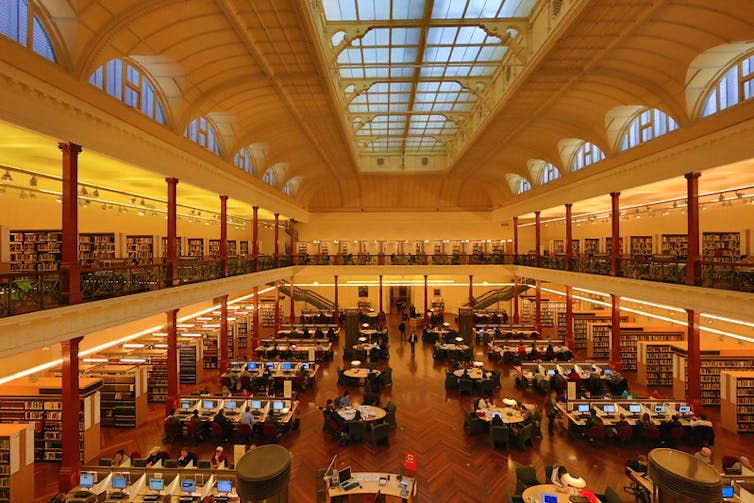
Policy neglect like this is a long-running problem for the literature sector. During the Coalition’s first term of government, then-Prime Minister Tony Abbott promised to set up a special body to support and fund Australian publishing, to be called the Book Council of Australia and given an initial budget of $6 million annually. But the new agency was never created. With the Book Council killed off in proposal stage, the promised funding for publishing never eventuated either, vanishing in a puff of smoke in the 2015 Mid-Year Economic and Fiscal Outlook.
In 2018, as part of the Turnbull government’s media reforms, Senate cross-benchers struck a deal to secure $60 million funding for regional publishers and media organisations. Of this, $16 million went to small regional media organisations under the Regional and Small Publishers Innovation Fund. Just like Get Reading, that fund has also finished up, and there has been no analogous program for Australian literary and non-fiction publishers.
Writers In Dire Difficulty
Arts Minister Paul Fletcher’s RISE fund has provided some assistance. There was some funding to publishers and booksellers, such as an innovative voucher scheme for Australian books. But RISE too will be wound up at the end of this financial year.
The result is a writing sector that faces grinding austerity. A recent survey of authors by the Australian Society of Authors found understandable pessimism among its members, which include some of Australia’s best known novelists, poets and non-fiction writers. “Our members feel very flat about funding,” ASA’s Olivia Lanchester told me in a message. “We are the lowest funded of the major art forms through the Australia Council despite high participation rates in reading.”

The penurious circumstances of Australian writers was graphically highlighted in late 2020, in testimony to the House of Representatives from prominent Australian novelists Charlotte Wood and Christos Tsiolkas.
Wood told a House of Representatives inquiry into Australia’s cultural sector that “writers themselves are in absolutely dire economic difficulty”. She cited figures that literary writers’ annual income from their books was just $4,000 a year. “That work is piecemeal, freelance, poorly paid and very unstable.” Wood pointed out that “COVID is destroying the livelihoods of writers in many ways” and explained that the pandemic was “eviscerating three major income streams for writers outside their books, which are public speaking, university teaching and freelance writing.”
Tsiolkas told the inquiry that younger writers he had recently spent time with faced “real life desperate situations – how they’ll pay their rent and how they’re going to look after their young children”.
Australia doesn’t need to treat its readers and writers like this. We are a rich nation with a half-trillion dollar federal budget. Even a dramatic increase in funding, for all aspects of Australian culture, would be a rounding error in the context of other budget priorities, like nuclear submarines or the “stage 3” income tax cuts coming in 2024.
Australian writing is tremendously popular. Australian stories are central to the way we understand ourselves as citizens and a nation. Books by Australian authors sell well, as anyone who has been to a Trent Dalton bookstore event can attest. Australia Council data tells us that 72% of the population reads regularly for pleasure. More than four million Australians visited a writers festival or literary event in 2019.
Like other artforms in this country, literature has struggled to make itself heard among the cacophony of special interests in Canberra. But literature is not a special interest: it is a constituent component of our national identity, and a deep source of enjoyment for millions of citizens. Storytelling is a fundamental aspect of what it means to be human. If anyone should be able to understand that, it is our politicians.![]()
Ben Eltham, Lecturer, School of Media, Film and Journalism, Monash University
This article is republished from The Conversation under a Creative Commons license. Read the original article.
How do planets form? A ‘baby Jupiter’ hundreds of light-years away offers new clues

How do planets form? For many years scientists thought they understood this process by studying the one example we had access to: our own Solar System.
However, the discovery of planets around distant stars in the 1990s made it clear that the picture was much more complicated than we knew.
In new research, we have spotted a hot, Jupiter-like gas giant in the process of forming around a star about 500 light-years from Earth.
This rare babysnap of a planet actually in the process of forming, drawing down matter from a vast disk of dust and gas swirling around its also-infant sun, has opened a window on mysteries that have puzzled astronomers for years.
A Scientific Triumph?
Scientific inquiry into the origins of Earth and the other planets of our Solar System began in the mid 1700s.
Building on the work of Swedish thinker Emanuel Swedenborg, the famous German philosopher Immanuel Kant proposed that the Sun and its little planetary family all grew from a large rotating primordial cloud; Kant labelled this an “Urnebel”, German for nebula.
This idea was later refined by the French polymath Pierre Laplace, and it has since had many more additions and revisions, but modern scientists think it was basically on the right track. The modern descendent of Kant’s hypothesis, now filled out with detailed physics, can explain most of the observed features of our solar system.

We can now run computer simulations with all the right settings, and a beautiful digital replica of our solar system will emerge. It will have the right kinds of planets in the right orbits ticking around in clockwork order, just like the real thing.
This model is a triumphant synthesis of threads from geology, chemistry, physics and astronomy, and it seemed to have the bases covered. Until, that is, astronomers confronted it with planets from outside our solar system.
Beyond The Solar System
When the first systems of planets orbiting distant stars were discovered in the mid 1990s, there was immediate controversy and consternation. The new planets didn’t fit the model at all: the rest of the cosmos, it turned out, didn’t care so much what happened here around our little sun.
Since then, there has been a dawning realisation that there may be different pathways to form a planetary system. Among the thousands of planets orbiting other stars that now populate our catalogues, our Sun’s family of planets is even beginning to look a bit unusual.
Despite this, one of the most basic physical components of the planet-building machinery we believe is responsible for forming giant gassy planets like Jupiter and Saturn has stood the test of time: the idea of “core accretion”.
Core accretion starts with the gases and microscopic dust grains thought to comprise Kant’s typical primordial cloud (which is shaped like a flattened spinning disk with the infant star at the center). Dust grains clump together into successively bigger grains, then pebbles, rocks and on up in a cascade to baby planets or “planetesimals”.
When such a clump gets big enough, it reaches a tipping point. Gravitational attraction now helps the embryonic planet rapidly draw in gas, dust and other clumps, clearing its orbital path and carving a circular gap in the disk.
It is one of the signature triumphs for modern astronomy that exactly the kinds of “disk gaps” predicted by theory are now seen and studied out in the cosmos.
A Big Crunch
However, there are some things core accretion can’t explain. Massive planets have been spotted orbiting far from their host stars, out in the cold distant reaches.
According to the core accretion theory, such planets should not exist. They are too far out, where orbits move too slowly to run the business of planet-building.
A new “gravitational collapse” model was formulated to explain these unexpected massive distant planets. The basic idea is that if the primordial disk itself has enough mass, the whole thing can become unstable and collapse to form planets quickly in a big crunch.
This new picture seemed like it could explain the outlier planets, but since all known examples were very old (usually billions of years) this theory has remained just that – a theory. Until now.
A Planet Is Born
Last year, we and our colleagues spotted a massive planet, still in the process of formation, around a star some 500 light-years from Earth.
This star, named AB Aurigae, has become famous in astronomy circles for the beautiful, intricate, spiral disk that surrounds it.
The clumps and waves seen in this disk (and in others like it) are consistent with what one might see if gravitational collapse were occurring. But until now, evidence of a forming planet was missing.

This newly discovered planet – dubbed AB Aurigae b – is embedded within a thick, swirling halo of dust and gas, amid the tell-tale spirals and waves signifying gravitational collapse. The planet is around 93 times as far from its star as Earth is from the Sun, well outside the region in which the traditional core-accretion theory could explain its formation.
This discovery thus provides strong evidence for the alternative theory of gravitational collapse.
The discovery was made using observations from the Subaru Telescope at Mauna Kea, Hawaiʻi, as well as from the Hubble Space Telescope.
Stoked by energy from the violent, rapid formation process, the planet is hot enough to glow (around 2000 ℃). It is this glow that gives away the presence of the planet. At the same time, the swirling gas and dust around the forming planet is seen illuminated by the blueish light of AB Aurigae’s central star.
Bigger And Better Telescopes
This new discovery provides a critical piece of the planet formation puzzle, but the case is by no means closed.
As our telescopes get bigger and our observational methods get more advanced, we expect to see many more forming planets caught at all stages of their development, as well as fully-formed mature planets like Earth.
And eventually, we can hope to answer the big questions: how did such a weird and diverse range of planetary systems form across the galaxy, what are the conditions like on these new worlds, and how does our own little Solar System fit in among them?![]()
Peter Tuthill, Astrophysicist, University of Sydney and Barnaby Norris, Research fellow, University of Sydney
This article is republished from The Conversation under a Creative Commons license. Read the original article.
How r/place – a massive and chaotic collaborative art project on Reddit – showcased the best and worst of online spaces

Many would be familiar with Reddit as one of the largest social networking sites, with a large group of forums (“subreddits”) catering to almost any interest.
Since the beginning of April, Reddit has played host to a massive collaborative art project called r/place that simultaneously shows us some of the best and worst attributes of cybercultures.
Originally launched in 2017, r/place ran for 72 hours. The lifespan of the new r/place was also short – ultimately lasting for just five days. Beginning initially as a blank canvas, r/place allows users to place one coloured pixel every five minutes (or 20 minutes for unverified accounts) as they attempt to build a collective art piece.
Traversing through r/place takes you for a journey through time, memes and cultures.
At any one moment you might be looking at a Nine Inch Nails logo, the flags of various countries, a QR code linking you to a YouTube video titled The Most Logical Arguments AGAINST Veganism (In 10 Minutes), and a homage to Zyzz – a popular bodybuilding figure who passed away in 2011.
Some artworks on r/place don’t seem to represent anything at all. The sole mission of The Blue Corner is (you guessed it) to have a blue corner depicted on the final art piece.
The artwork constantly changes over its short lifetime. But even if the drawings of some communities may not go the distance, the time lapse videos depicting the ongoing mutation of the canvas has become a key part of this art piece, ensuring all contributions play a vital part in the lifecycle of r/place.
Collaboration – And Opposition
r/place shows us the collaborative nature of humans in online spaces. After its emergence in 2017 it was hailed as “the internet’s best experiment yet” and praised for capturing “the internet, in all its wonderful glory”.
This collaborative online art project allows people to express their individuality as well as collective identities formed through interactions with online spaces.
This year’s iteration of r/place, in contrast to the previous version, demonstrates the interconnectivity of communities in digital spaces. No longer is r/place solely reserved for Reddit users. Now, there is clear power in drawing on communities distributed across Twitch, Discord and Twitter.
This influx of communities from all over the internet has not been well-received by all.
There is a belief Twitch streamers are ruining the work of smaller communities and are attempting to sabotage the project.
Instead of being a democratic representation of online communities and their art, the argument goes, Twitch streamers are encouraging their fans, numbered in the hundreds of thousands, to capture hotly contested territory.

Factions – such as those formed between Spanish streamers and BTS fans – have become the primary way to ensure power and influence over the art project.
Smaller communities are driven out at the expense of larger influencers with more bargaining power in this pixel warfare.
It is not just individuals taking part in this art project. Many believe “bots” are running rampant, performing automated tasks in a way that is antithetical to the idea of this artwork as a representation of human achievement as opposed to technical prowess.
These examples are just a fraction of the chaos over the internet in the last few days: 4chan operated coordinated attacks on the Trans flag and LGBTQ+ panels, and streamers are receiving an influx of death threats.
The Best And Worst Of Us
At its best, r/place is a powerful illustration of strangers coming together about their passions online and the collaborative nature of the internet.
At its worst, it represents everything we have come to dislike about the internet: the exclusion of smaller voices at the expense of influencer cultures, factions between communities, and the toxicity of some cybercultures.

Whatever the case, this project has been great for boosting Reddit’s publicity as the company goes public.
In its final moments earlier today, users could only place white tiles and watch the spectacle of a once vibrantly coloured collaborative art piece that caused so much chaos among online communities simply transform back into a blank canvas. ![]()
Andrew Childs, Lecturer, Griffith University
This article is republished from The Conversation under a Creative Commons license. Read the original article.
Friday essay: empathy or division? On the science and politics of storytelling

Writers can’t always be trusted when they talk about the power and importance of story. We have a vested interest and can get sentimental, promoting the immense power of story, of narrative, as inherently benign.
Even when a writer is famously sceptical of narrative, such as Joan Didion, the sentimentalists overrule her. As Zadie Smith pointed out recently in The New Yorker, one of Didion’s most famous lines – “we tell ourselves stories in order to live” – is now quoted as if Didion is celebrating story rather than warning about delusion.
“It is a peculiarity of Joan Didion’s work that her most ironic formulations are now read as sincere,” Smith says of this line. “A sentence meant as an indictment has transformed into personal credo.”

It is illuminating, then, to consider fascinating developments in thinking and research on the effects of story from other disciplines, such as philosophy, history and, most recently and surprisingly, perhaps even counter-intuitively, neuroscience.
In discussing story and its effects, I don’t mean only fiction or even prose. Poetry and song are likely our first forms of storytelling. These forms have traditionally included science and history, which are also transmitted as storytelling. First Nations’ science and history, for example, are encoded in stories and songs and visual art.
What we might cautiously call Western culture didn’t used to be so finicky about genre. Science poetry used to be a big deal.
Erasmus Darwin, for example, now most famous as Charles Darwin’s grandfather, was a physician and member of the Royal Society, who also wrote science poetry. He wrote an entire volume of erotic verses praising Carl Linnaeus’ taxonomic botanical system called The Loves of the Plants (1791). With footnotes. His science poetry was strikingly illustrated by William Blake and Henry Fuseli. And he made a lot of money from it; the volume was reprinted many times. Of one species of fern he wrote:
E'en round the pole the flames of Love aspire,
And icy bosoms feel the secret fire!
In 1608, the great astronomer Johannes Kepler wrote Somnium or “The Dream”, a novel in which an Icelandic boy and his witch mother learn of an island named Levania (our Moon) from a demon. Somnium presents a detailed imaginative description of how the Earth might look when viewed from the Moon. It is considered the first serious scientific treatise on lunar astronomy.
Kepler understood very well the importance not just of narrative, but of controlling the narrative, which he did very well, as he spent years saving his mother from a charge of witchcraft.
Oh No, Someone’s Cat Is Missing!

Now, in classic writer fashion, I will introduce another aspect of this topic with a personal anecdote, complete with physical details.
As I was thinking about writing this essay, I was drinking a coffee at the Café de la Fontaine in King’s Cross. Just outside the window stood a streetlight. On the pole was taped a missing cat notice that had not been there the day before.
I hate missing pet notices. I feel so worried for both pet and owner. But there was something else there, I realised at that moment, in the convergence of my thinking about story and then seeing the missing cat poster. It has to do with the power of narrative and the ways in which stories work on our brains.
A few days earlier, something happened that I had never experienced before: NSW Police had sent a text message to my phone about a missing child, a teenage boy, in the Blue Mountains. For the first time, they used the available technology to send a text message to all the phones in the area. Of course, no one was prepared for this. The text suddenly appears on your phone, no warning. I am glad they can do that and I hope it helped, but it is a shock to get a missing person notice out of the blue on your phone. It feels very personal, very close to you.
Now I am going to jump to one of the points about story and how it works from the literature of psychology and neuroscience.

Some readers are probably wondering: hey, but what happened to the missing child? Did they find him? This tension – and retention of information – is related to something called the Zeigarnik effect.
Bluma Zeigarnik was a Lithuanian psychologist, who in 1927 published a paper titled “On Finished and Unfinished Tasks”. She found that study participants were able to recall details of tasks about 90% better when they were interrupted during the task than when they were able to complete them. These findings have, to some extent, been replicated in subsequent studies.
The study had been inspired by Zeigarnik’s professor observing that waiters in a café seemed much better at remembering details of incomplete tabs or orders than completed ones. That is, it seems the brain opens a file on a task and that file stays open until the task is finished. Once the task is complete, the file disappears.
The link to the effectiveness of serial dramas and the way cliffhangers operate in narrative is clear and has been drawn a number of times. A story also opens a file in your brain and it remains open, this networked pattern, like an unfinished tapestry, until the story is resolved.
Stories are the best technology we have for remembering vast amounts of information and detail, so long as all these elements are related in some consequential and important and emotional way – think of bards being able to recite epic tales that go on for days, or Scheherezade’s 1001 nights, or Indigenous songlines, filled with story, that include important information about history and creatures and the motions of stars and details of place.
So some readers may now have a file open in their brains. It sits there, waiting, until we know what happened to the missing boy. He was found, though I don’t know any other details of his story: why he went missing, what went wrong – all of the details that, say, a novel might fill in.

In that café, I realised that one of the main reasons missing pet stories are so distressing is that, unlike most missing-person stories, we almost never get to know the outcome. We never know whether that cat or dog or parrot was found. And there’s another problem: even if the pet is rescued, what happened to it can never be narrativised. We can never really know what happened or how it felt for that creature.
This always makes me think of a line from a brilliant Lorrie Moore short story I often teach in Creative Writing classes titled “People Like That are the Only People Here”, about a writer whose baby has cancer. It is a very funny story. No, really. Something that tortures the mother is that her baby cannot narrate his suffering – she will never know that story. Moore writes:
Who can say what babies do with their agony and shock? Not they themselves … They put it all no place anyone can see. They are like a different race, a different species …
It is one of the great human mysteries. And we don’t know where animals put their suffering either. This seems almost a greater injustice than the suffering itself, and in a way it is. If the suffering is no place anyone can see, then there is little incentive to alleviate it.
Dreaming The World
From the never-to-be-known stories of missing pets to the fate of humanity: I want to draw here on the work of historian Yuval Noah Harari, who set out to tell the story of the human species in his book Sapiens (2011).
In Sapiens, Harari notes that our closest relatives are the several species of chimpanzees; we share 99% of our DNA with them. Harari asks: why, when we are so similar, do Sapiens rule the planet, not chimpanzees? Why are the chimps stuck in labs and cages where we study them and do what we like with them?
Harari’s answer is that Sapiens rule the world because we are the only animal that can co-operate flexibly in large numbers. We can cooperate not just at street level or village level or city level; we can create mass co-operation networks, in which thousands and even millions of complete strangers work together towards common goals.
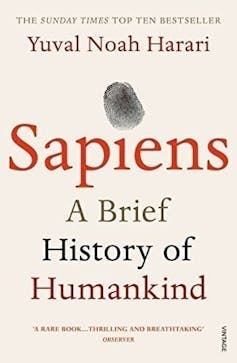
One-on-one, even ten-on-ten, we humans are very similar to chimpanzees and physically much less powerful. Any attempt to understand our unique role in the world by studying our brains, our bodies, or even our family relations, is doomed to failure. The real difference between us and chimpanzees is the mysterious glue that enables millions of humans to cooperate effectively.
This mysterious glue, Harari concludes, is made of stories, not genes. We cooperate effectively with strangers because we believe in invisible concepts such as gods, nations, money and human rights. None of these things exist outside the stories that people invent and tell one another.
There is no such thing in the universe as a nation or money or human rights – except in the common imagination of human beings. You can never convince a chimpanzee to give you a banana, Harari notes, by promising him that after he dies he will get limitless bananas in chimpanzee Heaven. Only Sapiens believe such things.
At the heart of our mass cooperation networks, you find stories that exist only in the collective imagination. Catholics who don’t know each other can launch an Inquisition or pool funds to build a hospital because they share very specific sets of beliefs, images, and stories about the nature of God. Two Serbs who have never met might risk their lives for one another because they both believe in the existence of the Serbian nation. Two lawyers who have never met can nevertheless combine their efforts to defend a complete stranger because they believe in the existence of laws, justice and human rights.
This is what Margaret Atwood meant when she said you can’t stop people believing in invisible things: it could be God, but it could also be the stock market.

Look around you. Almost everything you see once existed only in someone’s mind: the phone in your pocket; the laptop on your desk; the car, bus or train you travel on; the food you eat; the building you live in. Your town, city, nation. The world we live in, day to day, has mostly been created by other people. Of course, the natural world imposes limits on us and will do so ever more stringently and urgently. As my father once said to me, nature always bats last.
But even our understanding of what the natural world is has been invented. It is all created knowledge: the Big Bang, Newton’s laws of motion, orbital mechanics, evolution, dark energy and dark matter, human psychology, ecology, and so on. All of these things may well be real, but our ways of understanding them, formulating them, talking about them are all invented, all created.
It makes a difference whether you believe that mental illness is an imbalance in the brain caused by trauma or genetics, or that it is caused by demonic possession. The stories we tell ourselves matter. In a sense, they are almost the only things that matter, because from them all else flows: how we raise our children, how we do politics, whether we invade that country or fly to the Moon.
The result is that, in contrast to other animals, we Sapiens live in a dual reality. On the one hand, there is the objective reality of oceans, trees and lions; on the other, there is our created and shared reality of gods, nations and companies.
As history has unfolded, the created reality has become ever more powerful, so that today the very survival of oceans, trees and lions depends on the grace of invented entities such as corporations law, the stock market, the European Union and Google.
This is a powerful argument for the importance of diversity in writers’ voices, diversity in the stories we pay attention to. It is important because we need as broad a range of stories to choose from as possible. We can only know our own worldview as part of a story if we can contrast it with other coherent beliefs and worldviews. Just as the ability to tell stories can doom us, it is also now the only thing that can save us.

The Philosophers Have Their Say
Now I want to bring in our philosophers. The first is an attractive figure: that master of 18th-century empiricism, our canny Scotsman, David Hume, one of the most important figures in the Western philosophical tradition. Hume was a man of wit and charm, popular in the salons of his day, and reasons for this may be evident in the generosity and inclusivity of his ideas around morality.

In An Inquiry Concerning the Principles of Morals (1751), Hume offers what he considers to be a scientific theory of morality. In this work, described by historian Professor Darren Staloff as “a transition point in the history of Anglo-American moral philosophy”, Hume argues that philosophy keeps trying to come up with abstract principles about what constitutes virtue and the good life.
Not surprisingly, philosophy has generally considered itself the pinnacle of the intellectual tradition. Not so, says Hume. Virtue, he says, is not the result of either self-sacrifice or self-interest.
Hume argues that moral progress consists in including more people – and different kinds of people – in our sense of community, thus extending our moral concern to encompass increasingly large domains. He specifically argues this with regard to women and Native Americans. Women and Indigenous peoples were shabbily and unjustly treated; therefore, progress consists of entering imaginatively into what life is like for people who are not you, who are in fact unlike you.
In other words, Hume reverses the Western philosophical tradition since Plato, who had attempted to wrest moral authority from the poets. Hume gives it back, arguing that literature is vital for moral progress.
Neo-Pragmatism
It is refreshing, after reading about thousands of years of abstract writing that treats theology and philosophy as the pinnacles of human wisdom, to hear Hume saying no, all this theorising is useless; it is literature we need to pay attention to. And this tradition has been continued by neo-pragmatist philosophers, notably Richard Rorty, who also rejected Plato.

“Rorty argues that philosophers have traditionally sought to escape from history by searching for truth,” notes Staloff. “He believes truth can never be found embedded in language. A ‘true’ statement is merely one that we approve of.”
Even more crucially, Rorty argues that language is not merely descriptive, not a kind of analogous system indicating reality, but rather it is itself part of reality. It is causal, not representational.
Rorty reaches the same conclusion as Hume: cruelty is to be ameliorated through cultural edification. The moral education needed to sensitise us to the suffering of others, of those who have to put their suffering “no place anyone can see”, is most effectively absorbed through fiction.
The Dangers Of Narrative
To be fair to Plato, in proposing to ban the poets from his republic, he was recognising the real danger that the power of narrative can be misused to tell lies, which he blamed for the execution of his beloved teacher Socrates. His reservations must be taken seriously, along with the scepticism of writers such as Didion. Like a very sharp knife, the power of story is neither good nor evil; it cuts both ways.
We see this dilemma enacted every day now. Is Joe Rogan “just” a storyteller and therefore free to spread conspiracy theories and lies about vaccines, resonant as they are, in theme and tone, with the medieval “blood libel” against the Jews? Or should he be expelled from the republic, denied his paid public platform to spread dangerous misinformation?

The Protocols of the Elders of Zion, antisemitic propaganda about supposed Jewish plans for world domination, was first published in Russia in 1903. It is considered an early example of a conspiracy theory. It was thoroughly debunked by The Times in 1921. But it is still spreading its poison around the world.
In that shapeshifting way of totalising lies (almost analogous to the way viruses mutate and adapt), it is now linked to conspiracy theories around the Covid 19 pandemic.

So on the one hand we have philosophers, such as Hume and Rorty, arguing for the critical role of literature, of story, in building empathy, expanding the realm of those whose suffering we are sensitised to. If one of the greatest injustices is that beings are forced to put their suffering “no place anyone can see”, then, according to Hume and Rorty (and many creative writers), the proper use and study of literature is one of the few ways we can illuminate such places.
On the other hand, there is the long tradition of Plato and many other philosophers who have argued for the importance of transcendent objective truth.
In our current emergencies over the acceptance of vaccines and the imperative for action on climate, we can see that the need to find a way to agree on what constitutes an objective truth is more urgent than ever.
Language As Virtual Reality
What underlying mechanisms or processes in human beings could underpin the critical role of story? What is the power of language that allows shared realities to be created by large numbers of people across space and time? It may be that neuroscience is starting to provide some fascinating clues.
It seems that language and storytelling operate as the original and very powerful forms of virtual reality. fMRI technology, which can show us mental processes in real time, is starting to illuminate the physical processes that drive this.
Our brains exist in silence and darkness, with sense data presented by electrical signals. The brain builds its picture of the world from these electrical signals. It is not surprising that the electrical signals triggered by reading are as real to the brain as any other kind of electrical signal.
A study by professor of psychology Jeff Zacks has shown that reading about an action triggers the same areas of the brain as actually performing that action.
“We’re used to thinking that virtual reality is something that involves fancy computers and helmets and gadgets,” notes Zacks.
But what these kind of data suggest is that language itself is a powerful form of virtual reality, that there’s an important sense in which when we tell each other stories that we can control the perceptional processes that are happening in each other’s brains.

These kinds of studies can now show us some of the variables that influence the effectiveness of the stories we tell and the influence they can have over the processes in each other’s brains.
As the science writer Annie Murphy Paul has noted, precise words can stimulate specific areas. Words such as “grasp” and “kick” light up not just the motor cortex, but the part of it responsible for those movements. Read a sentence such as “the baking cookies smelled sweet” and the language processing areas of your brain will work, but the part dealing with smells remains dark. When you read “the cookies smelled of cinnamon” that area lights up too.
Hearts Beat As One
We now have a very recent finding on how deep this entrainment goes. The power of stories extends not just from controlling the brains of readers or listeners, but their hearts too.

Professor Andrew Huberman is a neuroscientist who directs a research lab at the Stanford University School of Medicine that investigates, among other things, the neurology of anxiety and stress, cognition and performance.
He hosts a popular podcast, in which he draws from recent scientific literature to empower listeners to take practical steps to improve sleep, say, or diet. In a recent episode, he reported a remarkable finding in terms that for him were unusually dramatic:
This is a paper that came out in the journal Cell Reports – very reputable scientific journal. The study involved having subjects listen to a story. The subjects are all listening to the same story but those subjects are not listening to it together. They are in separate rooms or even entirely separate locations on the planet, or they are brought into the laboratory on separate days – so these subjects are separated by time and space.
What this study found is that different subjects listening to the same story undergo the same variation in heart rate. In other words the gaps between their heartbeats start to resemble one another in response to the same story.
This is absolutely remarkable – just think about that for a minute – this is a coordination of the physiology of the body in response to a narrative, a story, in different people. And yet when they line up the heart rates of these different people listening to the story at different times and in different places, they find that those heart rates map onto one another almost identically.
Huberman explains why this is so remarkable and notes that more broadly this means coordination between neural circuits in the brain and body, coordination with the lungs and other organs.
“I think these results are just beautiful,” Huberman says.
In the sense that they really show that our brain and body are highly coordinated because people are listening to the story and the heart rate is changing in response to the story, but that there is what we call a stereotyped response to a given story. In my mind there was no reason the results had to be this way. You know, two people listen to the same story, why should their heart rates be almost identical? Very very interesting and points to the power of narrative and story in coordinating our physiology.
The Causal Quality Of Language
Rorty’s contention that language is causal, not just descriptive, seems to be borne out by current studies in neuroscience.
If Hume and Rorty are correct that story is the best technology we have for expanding empathy and solidarity (and the neuroscience seems increasingly to show that there are physiological mechanisms capable of driving such a process), then this clarifies why intolerant regimes and neoliberal governments so consistently attack, interfere with and defund the humanities and the arts.
Political systems that rely on division and intolerance try to dissolve or at least narrow solidarity, even as they attempt to intensify it within more tightly defined boundaries. Solidarity is the quality, according to Rorty, that holds postmodern bourgeois “liberal” society together.
But as we have seen, story itself can be used to drive division as much as to cement solidarity. Narratives can enlarge the scope of our concerns; they can illuminate the sufferings of others. But they can also reinforce fear and intolerance, and they do this through processes grounded in the deepest physiological fibres of our being.
Despite Didion’s warning, we will continue to tell stories, because they are one of the primary ways we have of understanding and then shaping the world. This makes storytelling inherently political, because politics is the practical expression of morality.
This also illuminates why politics (and indeed any politician) grounded in any grand master-narrative, such as religion or a doctrinaire version of a political theory, is so dangerous. Such master narratives, the very ones deconstructed by postmodernism, claim not to be stories at all, but transcendent truths, which therefore cannot be critiqued or changed.
The pluralism embraced by postmodernism and deconstruction actually brings us closer to the truth, because it allows us to understand things in comparative ways and is thus the very precondition of beginning to think meaningfully about them.
Writing on Rorty and postmodernism, Patricia Waugh notes:
What makes Rorty “strong” in his postmodernism, despite his defence of consensus as the basis of democracy, is the textualist insistence that society can only be transformed without violence through an aesthetic version of genetic engineering where it is vocabularies and not genes which determine the kind of life we shall lead.
This claim illuminates why the battle over issues such as pronouns is so important and why the right resists so fiercely the idea of calling trans people by their proper pronouns, all the while claiming such issues are trivial. But if we don’t agree to alter our reality with words then we are left with guns, and we can see how well that is working out just now.
Rebecca Solnit brings many of these questions and concerns together in her 2019 essay Whose Story Is This?
Who gets to be the subject of the story is an immensely political question, and feminism has given us a host of books that shift the focus from the original protagonist — from Jane Eyre to Mr. Rochester’s Caribbean first wife, from Dorothy to the Wicked Witch, and so forth. But in the news and political life, we’re still struggling over whose story it is, who matters, and who our compassion and interest should be directed at.
The common denominator of so many of the strange and troubling cultural narratives coming our way is a set of assumptions about who matters, whose story it is, who deserves the pity and the treats and the presumptions of innocence, the kid gloves and the red carpet, and ultimately the kingdom, the power, and the glory. You already know who. It’s white people in general and white men in particular, and especially white Protestant men, some of whom are apparently dismayed to find out that there is going to be, as your mom might have put it, sharing.
The sharing that Solnit alludes to here links to Rorty’s ideas about the importance of solidarity and consensus for democracy. Consensus can’t be imposed and solidarity should not be manufactured by indulging in fantasies of a homogenous, unified society (and narrative) that never really existed. The only way forward, as Solnit puts it, is “sharing”.
This brings us back to the unique power of story. It has one killer feature, an extra feature that not even real life has. As Annie Murphy Paul notes:
novels go beyond simulating reality to give readers an experience unavailable off the page: the opportunity to enter fully into other people’s thoughts and feelings.
This killer feature is one aspect of the power that Plato, Didion and many others wisely fear, and Hume and Rorty rightly celebrate. It is not a power we can or will stop using, so one of the great battles of our time, as Solnit says, is “who the story is about, who matters and who decides”.![]()
Claire Corbett, Lecturer, University of Technology Sydney
This article is republished from The Conversation under a Creative Commons license. Read the original article.
A damning review of e-cigarettes shows vaping leads to smoking, the opposite of what supporters claim

A major review on the health effects of e-cigarettes reflects what public health advocates have feared – escalating use of e-cigarettes in school-aged children, early warning signs of increased smoking rates in young Australians, and direct health harms of vaping in all ages.
The review, which was released today, was commissioned by the federal health department and conducted by researchers at the Australian National University.
Overall, it found the health risks from e-cigarettes significantly outweighed any potential benefits.
The review should silence lobbyists, who have long used data selectively to promote the sale of e-cigarettes. This is despite the fact previous , none as comprehensive and rigorous as this latest review, have delivered similar findings.
What Does The Review Tell Us?
The review looked at the evidence behind the health impacts of e-cigarettes or “vapes” – a diverse group of devices that aerosolise a liquid for inhalation. These are touted as a safer alternative to cigarettes and an aid to quit smoking.
The review found conclusive clinical evidence e-cigarettes cause acute (short-term) lung injury, poisoning, burns, seizures, and their use leads to addiction. They also cause less serious harms, such as throat irritation and nausea.
Evidence e-cigarettes produce airborne particles in indoor environments (potentially harming non-users) was also conclusive.
Among evidence ranked as strong, the review confirms what has worried tobacco control experts since patterns of e-cigarette use first emerged.
People who have never smoked or are non-smokers are three times as likely to smoke if they use e-cigarettes, compared with people who have never used e-cigarettes.
This is a dream for tobacco companies and their retail allies.
Weighing Up The Harms And The Benefits
The review found limited evidence e-cigarettes assist individuals to stop smoking. But this is no stronger than evidence showing e-cigarette use might also cause former smokers to relapse and revert to tobacco.
There is no conclusive or strong evidence in the review for any beneficial outcome from e-cigarettes.
E-cigarettes might help some individuals stop smoking. So they should only be available via a prescription from authorised medical professionals trained in helping people to quit. Any access beyond this risks serious harm for no benefit.
Young People Are Vaping
Australian Institute of Health and Welfare data show the age group most likely to use e-cigarettes in their lifetime are 18 to 24-year-olds. This has risen from 19.2% in 2016 to 26.1% in 2019.
Of e-cigarette users who identify as smokers, the second largest user group is 14 to 17-year-olds. Dual use is starting young, from the limited Australian Institute of Health and Welfare data we have.

The Australian Institute of Health and Welfare data precedes increasingly visible use of e-cigarettes in Australian schools, reported in the media.
The review also shows young males are the leading e-cigarette user group by age and sex. Australian males aged 18-24 are also the only age group which, on the latest Australian Institute of Health and Welfare data, are smoking at greater rates than they were three years earlier.
We Need To Limit Access
Whatever benefits might be delivered by e-cigarettes, such as helping people to quit smoking, would, according to the review, be modest compared with the harms they are likely to cause.
Unfortunately, public policy on the regulation of e-cigarettes is at risk of influence from powerful commercial interests. In the interests of public health, these forces must be resisted.
What Should Governments Do?
Federal, state and territory governments have enacted policies aimed at providing e-cigarette access to individuals who might benefit from them to quit smoking, while protecting everyone else.
But the evidence on how widely e-cigarettes are used shows these policies need to be more tightly enforced.
It’s still easy to buy e-cigarettes online, they are available without prescription from petrol stations, tobacconists, specialty “vape” stores and are on-sold by entrepreneurs – all of them acting unlawfully. Heavy fines will end their cash incentive.
The review shows the risks to public health posed by e-cigarettes will only grow unless governments enforce their laws.
This is to protect young Australians from becoming the first generation since trend data was collected to smoke and use nicotine at higher rates than their predecessors.![]()
Paul Grogan, Adjunct Senior Lecturer, The Daffodil Centre, University of Sydney and Guy Marks, Professor of Respiratory Medicine, South Western Sydney Clinical School, UNSW Sydney
This article is republished from The Conversation under a Creative Commons license. Read the original article.
Policy Alert No 19 Federal Budget 2022
- Retirement Incomes
- Income Support Measures
- Aged Care
- COIVID-19 Response Package – Ageing and Aged Care
- Health
- Housing
COTA Welcomes Labor’s Tough Stance On Poor Performing Residential Aged Care Providers; Looks Forward To Home Care Announcements
Seniors Card Goes Digital For 30th Anniversary

PCYC 85th Anniversary - NSW Police Force
The budget super giveaway that allows the already wealthy to amass even more tax-free

One of the strangest, certainly one of the hardest to justify, measures in last week’s budget was called “supporting retirees”.
A better title would have been “supercharging the wealth of those retirees who already have more than enough to live on”.
It flies in the face of the findings of the government’s own retirement income review and legislation it introduced partly in response earlier this year.
It happens not to support the living standards of retirees at all. It will enable some to spend less on themselves than they would have, while enabling those with serious wealth to accelerate the accumulation of even more, tax-free.
What the measure does is extend a temporary COVID relaxation of the rules requiring retirees to actually withdraw a minimum amount from their super each year, introduced in March 2020 when financial markets were in free-fall.
All retirees are required to withdraw a minimum amount from super each year in order to ensure it isn’t simply used as a vehicle to accumulate tax-free savings that aren’t used.
Retirees Have To Withdraw A Minimum Per Year
For retirees aged 65-74 the regulated minimum is 5% per year, for those aged 75-79 it is 6% per year and so on, up to retirees aged 95 and over, who are required to withdraw at least 14% per year.
Nothing stops retirees withdrawing more than the regulated minimum, but the review found that in practice the typical withdrawal rate is just above the minimum, because people use it as an “anchor” or guide to what to do.
It identifies the most common misconception about super being that
“the minimum drawdown rate is what the government recommends”
It says another is: “I should only draw down the income earned on my assets, not the capital”. Both set up retirees for a much lower standard of living than they could get.
The review finds that if a middle earner drew down an optimum amount rather than the minimum required, his or her super income would be 20% higher.
Instead, most retirees “die with the bulk of their wealth intact”. One fund told the review its members who died left 90% of the balance they had at retirement.
Most Die With Most Intact
It’s at odds with the purpose of super, defined by the government as to provide “income in retirement”. In February the government legislated to help make sure this is what funds did. From July they will be required to present to their members with an income strategy, for which bequests “should not be an aim”.
Things changed when the Australian share market collapsed 30% between mid-February and mid-March 2020 as coronavirus took hold.
As a “temporary” measure, Treasurer Josh Frydenberg halved the drawdown requirements, in order to enable retirees to better build up their balances after the storm passed. A similar measure was introduced during the global financial crisis.
The storm passed quickly. Markets began climbing back the day the treasurer made the announcement, and then kept climbing. SuperRatings says in the past year the median balanced super fund has grown 13.4%.
Yet oddly, the government extended the measure in May last year when the market was soaring to new heights, in order to “make life easier for our retirees” and then extended it again on budget night in order to “recognise the valuable contribution self-funded retirees make to the Australian economy”.
It is as if the government has junked the idea that super should actually be used to provide income to the people who accumulate it.
As it happens there is nothing in the drawdown requirements that forces retirees to spend on themselves (and nor could there be). All they do is force retirees to withdraw a minimum amount from the generally tax-free environment that is retiree super, and have it treated like other people’s investments and savings.
Earnings In Retiree Super Untaxed
If retirees aren’t forced to withdraw a minimum, in the words of the retirement income report to the treasurer, large amounts will be held in super “mainly as a tax minimisation strategy, separate to any retirement income goals”.
The only justification offered in budget papers (a weak one) refers to “ongoing volatility” and the need to “allow retirees to avoid selling assets”.
But markets are generally volatile, and it is usually super funds that sell assets, not retirees. It’s as if the measure is directed at self-managed super funds, some of which are rich beyond most of our wildest dreams, certainly far too rich to need to pay out anything but a tiny percentage of their holdings to their members.
A freedom of information request by the Australian Financial Review has revealed that 27 such funds hold more than A$100 million each. Its best guess is they are owned by Australia’s wealthiest families.
Of course, most retirees have much lower balances, and are reluctant to withdraw funds for another reason. Perhaps surprisingly, studies examined by the review find that main reason isn’t a desire to pass on an inheritance to their children.
Overwhelmingly, retirees are concerned about “outliving their savings”.
Frightened Of Outliving Savings
The prospect of inferior aged care or a late health emergency compels most retirees to save far more than they are likely to need, just in case.
Many are unaware of how little end-of-life aged and health care can cost (“especially given the complexity of aged care means-testing arrangements”) and many more want to buy their way out of standard care because of the awful things they have heard, some of it in the aged care royal commission.
It makes Labor’s budget reply promise of more money for aged care and a nurse on each site 24/7 doubly attractive. It might stop us hanging on to absurd amounts of our super out of fear.
It might allow us to relax and enjoy what could be the best decades of our lives.![]()
Peter Martin, Visiting Fellow, Crawford School of Public Policy, Australian National University
This article is republished from The Conversation under a Creative Commons license. Read the original article.
Straight to the pool room: a love letter to The Castle on its 25th anniversary

The phrases “Tell him he’s dreamin’”, “That’s going straight to the pool room”, “How’s the serenity?” and “It’s the vibe” have become Aussie staples. These now-classic quotes all come from The Castle - voted the best Australian film ever in a recent poll.
The Castle was released in Australia 25 years go. It charmed the socks off us on its release and its reputation and influence as the quintessential Australian film have grown since.
Centred on an ordinary working class family, the Kerrigans, the film tells of their legal fight against greedy developers and the government when their house and land are threatened with a plan to extend an airport runway.
When his neighbours’ properties are also targeted, Darryl Kerrigan, the father, organises a protest committee. It hires perhaps the most inept suburban solicitor, Dennis Denuto (Tiriel Mora), to dispute the case in court - and fails. Dennis’s main defence is that
It’s the constitution. It’s Mabo. It’s justice. It’s law. It’s the vibe … no, that’s it, it’s the vibe.
It’s The Vibe
Reputedly filmed over 11 days on a very small budget, it stars mostly television actors, or those who were at that time just emerging, such as Michael Caton, Anne Tenney, Stephen Curry, Eric Bana and Wayne Hope. It’s true the production values are ordinary at best and the visuals are uninspiring, but who cares? This all adds to the feeling of the familiar and very real world of the Kerrigans.
The best parts of the film are the characters, the exploration of family and most importantly, the naive and gentle humour expressed through the character’s dialogue.
The film is full of dad jokes that you just know Darryl tells over and over. From telling opposing lawyers to “suffer in their jocks”, or saying every cheap knick-knack they find is “going straight to the pool-room”, the humour is comprised of bad puns, repetitive gags and parochial sayings.
Darryl’s repetitive, good-natured bits, such as being amazed at every dinner that his wife makes, regardless of whether it’s just rissoles or chicken, is clearly meant to be humorous - but we don’t laugh at the Kerrigans, we laugh with them.
This is because the humour is all expressed through their glass half full view of the world. All of the Kerrigans have this eternal positivity and optimism. After losing the court case and facing eviction, they look for the good in it. Most people would be happy not to live next to a busy airport but Dale Kerrigan only sees the benefits, “It will be very convenient if we ever have to fly one day”.
Straight To The Pool Room
The Kerrigan values are similar to many working class Australians: anti-authoritarianism, the Aussie battler ethos, a sense of political antipathy, and a belief in common sense and that natural justice will prevail. This is why this film has endured over so many years - Australians recognise themselves in the characters.
The Kerrigans are just ordinary people who find delight in their ordinariness. Darryl works the tow-truck, they have little money, their house is built on a landfill site and their eldest son is in prison. They go on holiday - not to Bali or Hawaii, but to Bonnie Doon, a little country town with a small lake and a shack that Darryl built amongst towering electricity pylons. A place many people would run a mile from.
Again, the family don’t see this as a negative. As Dale says wisely, “Dad, he reckons power-lines are a reminder of man’s ability to generate electricity”.
The Castle embraces an A Current Affair mentality - that someone, somewhere in business or in government is always trying to rip-off the honest little guy. Darryl Kerrigan represents all the honest, hard working Australian battlers who have been done over by forces greater than them. We all want to see the tables turned and the little guy win - this is why underdog stories such as this are so popular.
Dale Has Dug A Hole
But The Castle goes beyond such simple classifications. The events portrayed are just a sideline to the family dynamics - the bond of family and community in every situation, good and bad, is paramount to the film.
Every Kerrigan supports each other and celebrates their achievements no matter how small, such as the pride they have in Dale having dug a hole. Even if the Kerrigans aren’t like your family, you secretly wish they were.
How deeply embedded the characters and dialogue are in the Australian psyche can be demonstrated is one anecdote?. The real Bonnie Doon was listed for sale in 2011. The estate agent was inundated with people calling asking for the price. When told, they universally replied, “Tell him he’s dreamin’”.![]()
Daryl Sparkes, Senior Lecturer (Media Studies and Production), University of Southern Queensland
This article is republished from The Conversation under a Creative Commons license. Read the original article.
Scammers Targeting Victims Again Through Money Recovery Scams
Have You Heard Of Walking Netball?

Bill Haley And The Comets: Razzle Dazzle
Mark Foy's Fashions - Mash Up
Serving up choice and dignity in aged care – how meals are enjoyed is about more than what’s on the plate

Meals are rituals built around pleasures and choices. While what is served at mealtimes in aged care homes has received recent attention and Labor has pledged to improve the food offered, new research highlights that how meals are offered is just as important.
More than 50% of aged care residents live with dementia, and outside of mealtimes, spend the majority of their days alone. Mealtimes are the time of the day when people come together, providing opportunities for social connection, celebration, and honouring individual preferences and culture.
And yet, staffing shortages and insufficient time to help residents eat and drink means mealtimes are frequently highly structured and depersonalised, with the focus being on food intake rather than the dining experience.
Further, current aged care funding does not incentivise quality in food, or mealtime autonomy.
Innovation in mealtime care is needed to turn this around and give aged care residents back their basic rights. One proven approach draws on Montessori principles traditionally used within the early childhood field.
Careful Planning Allows More Freedom
The revolutionary thinking of Italian physician and educator Maria Montessori has been increasingly applied to dementia care – introduced to the field by psychologist Cameron Camp in the 1990s. The Montessori approach respects the abilities and preferences of the person – young or old – engaging people at their own pace and rhythm.
Montessori methods focus on a carefully prepared environment and work with the retained strengths of a person with dementia to enable engagement and involvement in everyday life. This helps people with dementia reclaim skills, such as the ability to eat independently.
The approach can change people’s expectations of what a person with dementia is capable of and promote a sense of community.
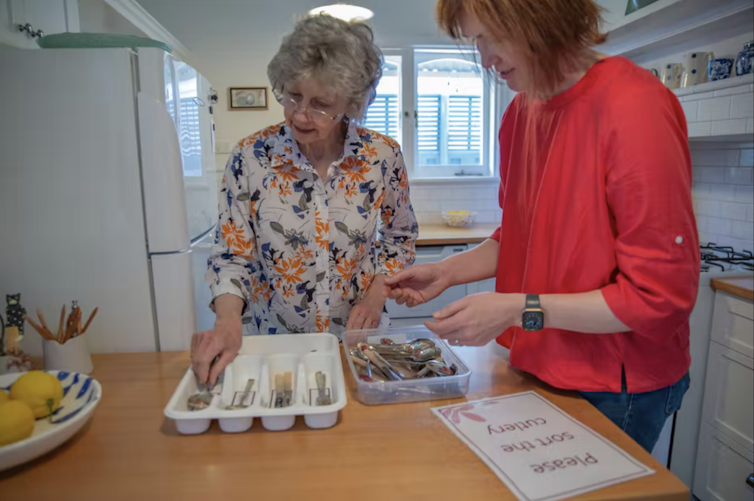
Our study looked at how applying Montessori strategies changed mealtimes for staff and residents in a residential aged care setting. We periodically filmed mealtimes, starting before any changes were made and ending with new practices in place.
Routines, materials, and external aids were established to support memory loss and independence. For example, signage invited residents to help themselves to snacks, and a buffet encouraged residents to serve their own meals.
Extending the duration of the breakfast service enabled residents to eat at their own pace, while the preparation of additional food ensured residents had the opportunity for second or third helpings.
Staff across all levels of the organisation were trained and mentored in the Montessori approach. For example, the Montessori mantra “Everything you do for me; you take away from me” was introduced to staff – transforming the way they thought about empowering residents and their own caring roles.
Care staff were encouraged to involve residents in mealtime routines and create meaningful roles, such as setting the table, filling water jugs or writing up the daily menu.

What We Saw
Our observational research evaluated mealtime routines before and after the Montessori model of care was introduced and the findings were promising for everyone involved – residents, families, and staff. We can see this by examining the experience of a resident we’ll call “Marjory”.
Before Montessori, Marjory’s meal was chosen by a staff member and there were no second options should she not like the selection. Marjory’s main meal and dessert were placed together on the bare table, with no explanation as to what they were. She did not choose who she sat with, or which drink was served with her meal. Marjory ate her meal in silence.
We noted this as a familiar pattern, highlighted in previous research, that featured very little social interaction between care staff and residents.
Since Montessori strategies were introduced, Marjory selects what and how much she would like from the labelled buffet. She eats at a table that is beautifully set with a tablecloth, cutlery, and condiments. Marjory can help herself to a second helping if she likes and she socialises during her meal. Afterwards, she helps staff by taking her dishes to the sink.
We watched on as opportunities for choice significantly increased, as did social interaction between staff and residents. Mealtime care had become more respectful and centred around people.
Transforming Care
Examples of positive innovation in aged care need to be shared if we are to change public perceptions of dementia and show how more humanistic models of care are possible.
The Montessori approach is an innovative way to transform care – helping aged care staff rethink their role in enabling people with dementia. With mealtimes occurring several times each day, improved mealtime experiences can provide a pathway to person-centred care.
Cultural change isn’t easy and creative strategies and commitment are needed. Care staff require quality training and ongoing support.
The aged care sector must place greater emphasis on quality outcomes for residents, rewarding providers who enable residents to live well – engaged, involved, and connected.![]()
Jade Cartwright, Associate Professor, University of Tasmania; Anne Whitworth, Professor, University of Tasmania, and Elizabeth Oliver, Sessional Academic, Curtin University
This article is republished from The Conversation under a Creative Commons license. Read the original article.
Where you live affects your dementia risk

Socioeconomic status is a key indicator of health outcomes, including access to, and quality of health care.
In 4,656 adults across metro, regional and rural Australia, new research from the Healthy Brain Project showed those living in more disadvantaged areas have poorer memory and a greater risk of developing dementia.
Health Inequalities In Dementia Risk
Dementia is the second leading cause of death in Australia. Our rapidly ageing population means without a substantial medical breakthrough, the number of people living with dementia in Australia is expected to double from 487,600 in 2022 to 1.1 million by 2058.
There has been a concerted effort to understand and identify risk factors for dementia. These include risk factors we can’t change (such as age or genetics), and others that are more modifiable (such as diet or physical activity).
However, dementia and its risk factors don’t affect all communities equally. Educational, racial/ethnic, and geographical disparities can influence who develops dementia, including within Australia and the United States.

Our study assessed geographic inequality at a neighbourhood level. We measured neighbourhood-level socioeconomic status by matching participants’ postcodes with the Australian Bureau of Statistics’ Index of Relative Socio-economic Advantage and Disadvantage.
This index integrates information related to multiple factors, such as average household income, education, unemployment rates, occupational skills, disability, vehicle ownership, internet connection, family structures, and housing arrangements. Lower scores suggest greater socioeconomic disadvantage.
What Did We Find?
We found lower neighbourhood-level socioeconomic status was associated with worse memory performance and higher dementia risk.
This was especially the case for older adults (55 years old and above). Older adults living in neighbourhoods with low socioeconomic status had poorer memory and higher dementia risk.
This is in line with a US-based study that found adults living in the lowest 20% of disadvantaged neighbourhoods had smaller brains.

What Do These Findings Mean?
The first thing to note is this was an observational study, which involves following a group of people, and investigating how potential risk factors are associated with dementia risk. The results do not mean living in a more disadvantaged area causes memory loss or dementia. The results only indicate there is a relationship or association between neighbourhood disadvantage and dementia risk.
Second, neighbourhood-level socioeconomic status measures many complexities and nuances of where people live. This captures a range of information likely to influence health outcomes and disease risk. Some of these factors include the prevalence of crime and safety, local resources including access to health care and education, opportunity and space for physical activity and leisure, social disorder, access to greenery, as well as air and noise pollution.
These economic, psychosocial, and environmental factors can not only influence health outcomes, but also influence the way we behave. For example, the lack of green space or community sporting facilities may discourage physical activity, which is a known risk factor for both poor heart and brain health. Similarly, libraries and leisure centres provide important avenues for social engagement and mental development, the lack of which are also risk factors for dementia.
Additionally, due to affordability, people from lower socioeconomic backgrounds may also live in areas with fewer services that enable a healthy lifestyle. They are also more likely to experience poorer health outcomes as a result of entrenched disadvantage and lower health literacy. This cyclical nature of inequality may also explain why we observed higher dementia risk in individuals from low socioeconomic neighbourhoods.
It will be critical for future work to understand whether neighbourhood socioeconomic status influences memory decline over time, and actual dementia diagnosis.
What Should Be Done?
Targeting neighbourhood socioeconomic status will take enormous investment and collective effort at a local, state, and national level. As a starting point, increasing the availability and accessibility of green spaces and community facilities, such as leisure and sporting clubs, in every postcode will enable greater opportunity for healthy, active lifestyles into older age.
On an individual level, positive health behaviours have been identified that can help to prevent or delay memory loss and dementia risk. These include eating a balanced diet, learning new skills or languages, regular physical activity, staying socially connected, and getting a good night’s sleep.
If you are interested in learning how to reduce your dementia risk by changing health behaviours, please consider signing up to the BetterBrains Trial. We are actively recruiting Australians aged 40-70 years old with a family history of dementia.![]()
Yen Ying Lim, Associate Professor, Monash University and Emily Rosenich, Postdoctoral Research Fellow (Neuropsychology), Monash University
This article is republished from The Conversation under a Creative Commons license. Read the original article.
Fatigue after COVID is way more than just feeling tired. 5 tips on what to do about it

People are often surprised by how fatigued they are during a COVID infection.
Fatigue is more than being worn out or sleepy. It’s an excessive tiredness that persists despite resting or good sleep. It’s likely a result of our body’s strong immune response to the virus.
But in some people the fatigue drags on even when the infection is gone. This can be debilitating and frustrating. Simply resting more makes no difference.
Here’s what we know about post-COVID fatigue, and what can help.
Fatigue Or Tiredness? What’s The Difference?
The term fatigue can mean different things to different people. Some people mean their muscles are easily weakened. Walking to the mailbox feels like they have run a marathon. Others describe a generalised exhaustion, whether they are moving or not. People can experience physical, mental or emotional fatigue, or any combination of these.
The difference between tiredness and fatigue is this: tiredness can get better with enough rest, while fatigue persists even if someone is sleeping and resting more than ever.
How Big A Problem Is This?
Because there is no agreed definition of post-COVID fatigue, it is impossible to give exact numbers of how many people experience it.
Estimates vary considerably worldwide. One review of 21 studies found 13-33% of people were fatigued 16-20 weeks after their symptoms started. This is a worryingly widespread problem.
When Should I See My GP?
There are many potential causes of fatigue. Even before the pandemic, fatigue was one of the most common reasons to see a GP.
Most serious causes can be ruled out when your GP asks about your symptoms and examines you. Sometimes your GP will investigate further, perhaps by ordering blood tests.
Symptoms that should raise particular concern include fevers, unexplained weight loss, unusual bleeding or bruising, pain (anywhere) that wakes you from sleep, or drenching night sweats.
If your fatigue is getting worse rather than better, or you cannot care for yourself properly, you really should seek medical care.
Is It Like Long COVID?
Early in the pandemic, we realised some patients had a cluster of debilitating symptoms that dragged on for months, which we now call long COVID.
Some 85% of long COVID patients experience fatigue, making it one of the most common long COVID symptoms.
However, people with long COVID have a range of other symptoms, such as “brain fog”, headaches and muscle aches. Patients with long COVID therefore experience more than fatigue, and sometimes don’t have fatigue at all.
Is This Like Chronic Fatigue Syndrome?
We knew about chronic fatigue syndrome, otherwise known as myalgic encephalomyelitis, well before COVID.
This often develops after a viral infection (for instance after infection with Epstein-Barr virus). So, understandably, there has been concern around the coronavirus potentially triggering chronic fatigue syndrome.
There are striking similarities between chronic fatigue syndrome and long COVID. Both involve debilitating fatigue, brain fog and/or muscle aches.
But at this stage, researchers are still untangling any link between post-COVID fatigue, long COVID and chronic fatigue syndrome.
For now, we know many people will have post-COVID fatigue but thankfully do not go on to develop long COVID or chronic fatigue syndrome.

What Helps Me Manage My Fatigue?
Expect you or a loved one may develop post-COVID fatigue, regardless of how unwell you or they were during the actual infection.
Vaccines help reduce the risk of post-COVID fatigue by lowering the chance of catching COVID in the first place. Vaccinated people who do catch COVID are less likely to report fatigue and are less likely to develop long COVID.
However, vaccination is not 100% protective and there are plenty of fully vaccinated people who go on to develop longer term fatigue.
The evidence for what helps you recover from post-COVID fatigue is in its infancy. However, a few things do help:
1. pace yourself: adjust the return to normal activities to your energy levels. Choose your priorities and focus on what you can do rather than what you can’t
2. return to exercise gradually: a gradual return to exercise may help your recovery, but you may need some support about how to manage or avoid fatigue afterwards. Some therapists – occupational therapists, physiotherapists and exercise physiologists – specialise in this. So ask your GP for a recommendation
3. prioritise sleep: rather than feeling guilty about sleeping so much, remind yourself that while you sleep, your body conserves energy and heals. Disrupted sleep patterns are an unfortunate COVID symptom. Having a strict bedtime, while also resting when you feel tired during the day, is important
4. eat a range of nutritious foods: loss of smell, taste and appetite from COVID can make this tricky. However, try to view food as a way of fuelling your body with both energy and the micronutrients it needs to heal. Be careful not to spend a fortune on unproven “remedies” that often look good in small studies, but more robust research finds make little difference
5. monitor your fatigue: keep a diary to monitor your fatigue, and look for a gradual improvement. You will have good days and bad days, but overall there should be a slow trajectory towards recovery. If you are going backwards, get input from a health professional, such as your GP.![]()
Natasha Yates, Assistant Professor, General Practice, Bond University
This article is republished from The Conversation under a Creative Commons license. Read the original article.
Ozone May Be Heating The Planet More Than We Realise: Southern Ocean
How To Track A Shark
Engineers Point The Way To More Affordable And Sustainable Urban Neighbourhoods

DNA Discovery Reveals A Critical 'Accordion Effect' For Switching Off Genes
Half Of Older Adults Now Die With A Dementia Diagnosis; Up Sharply
People Around The World Like The Same Kinds Of Smell
Scientists Connect The Dots Between Galilean Moon, Auroral Emissions On Jupiter
Honey Holds Potential For Making Brain-Like Computer Chips
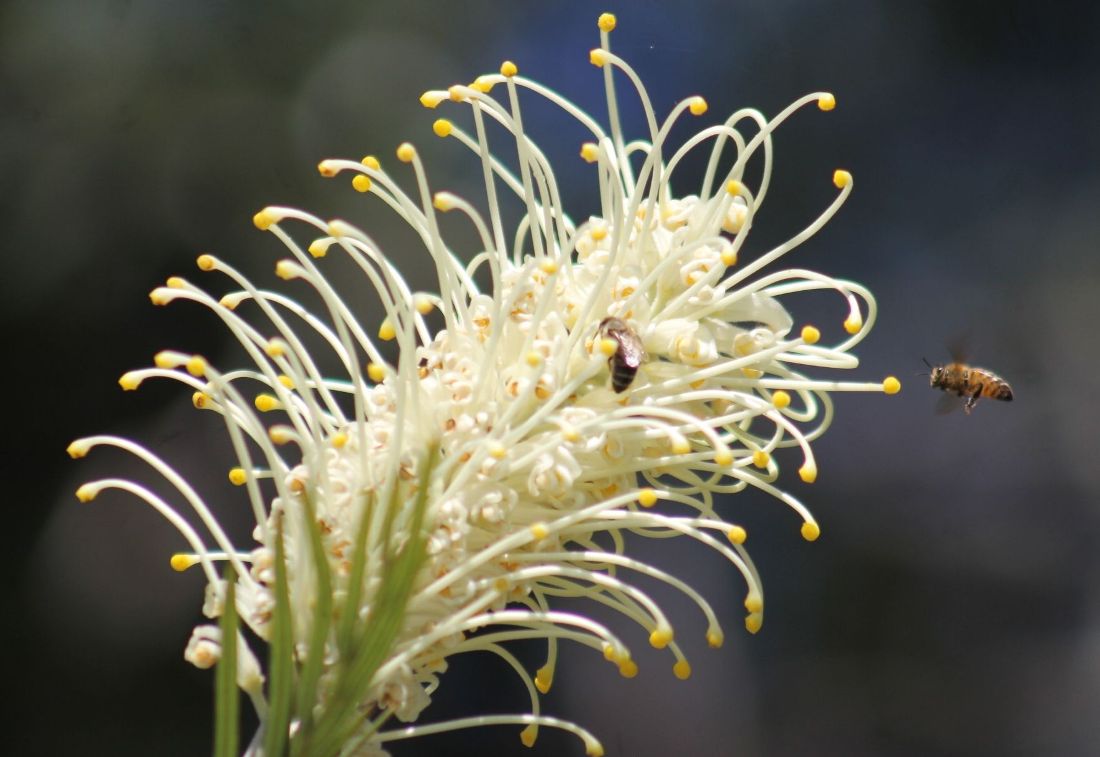
Solar Cell Keeps Working Long After Sun Sets
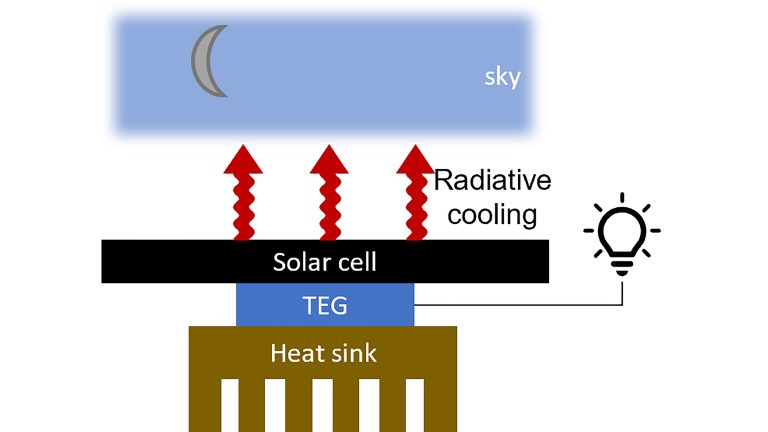
The Secret To Better Coffee?; The Birds And The Bees

Disclaimer: These articles are not intended to provide medical advice, diagnosis or treatment. Views expressed here do not necessarily reflect those of Pittwater Online News or its staff.